

Vol.9 No.1SUMMER 2010 $4.95 Canada Post Publication Agreement number 40671108



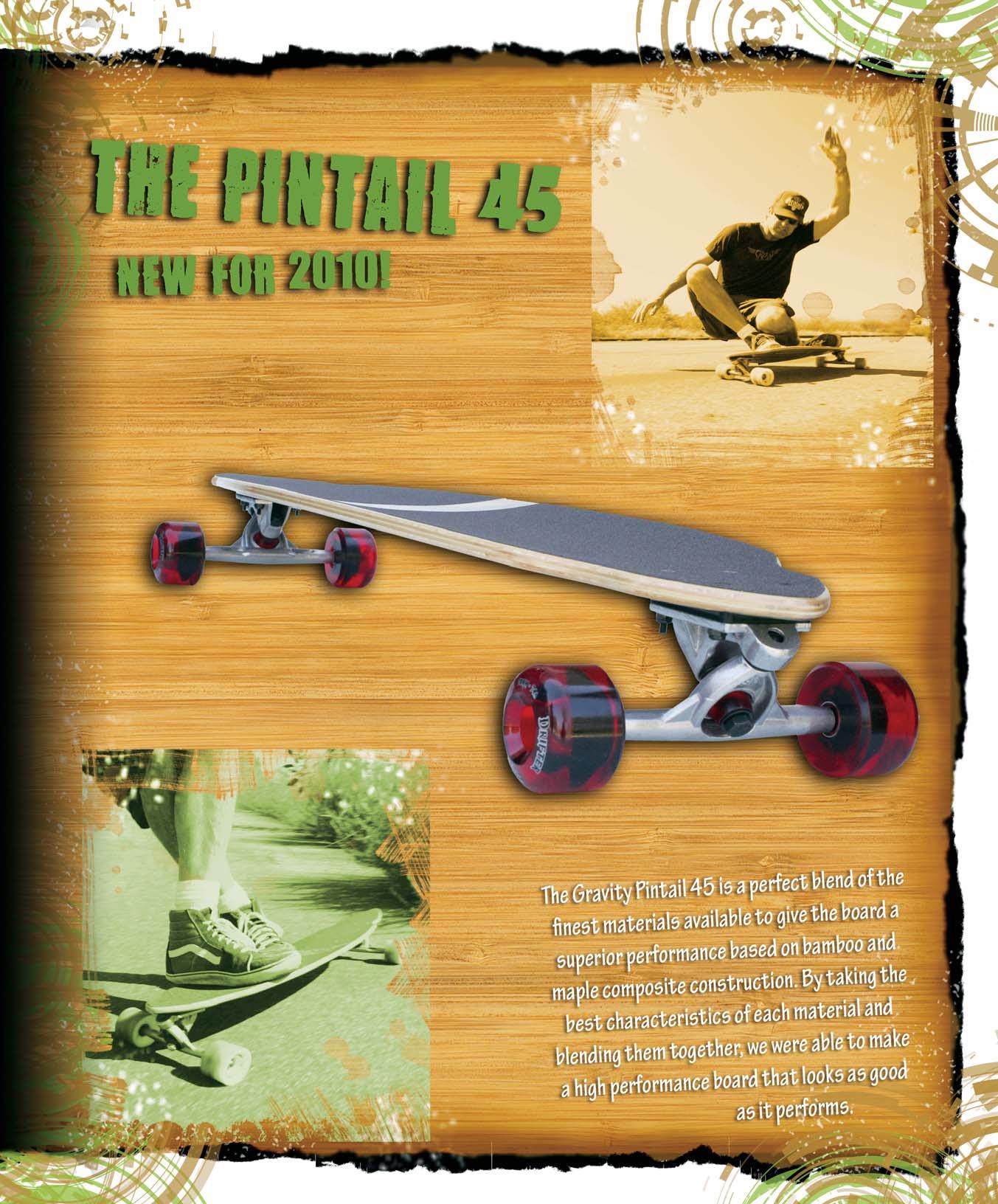



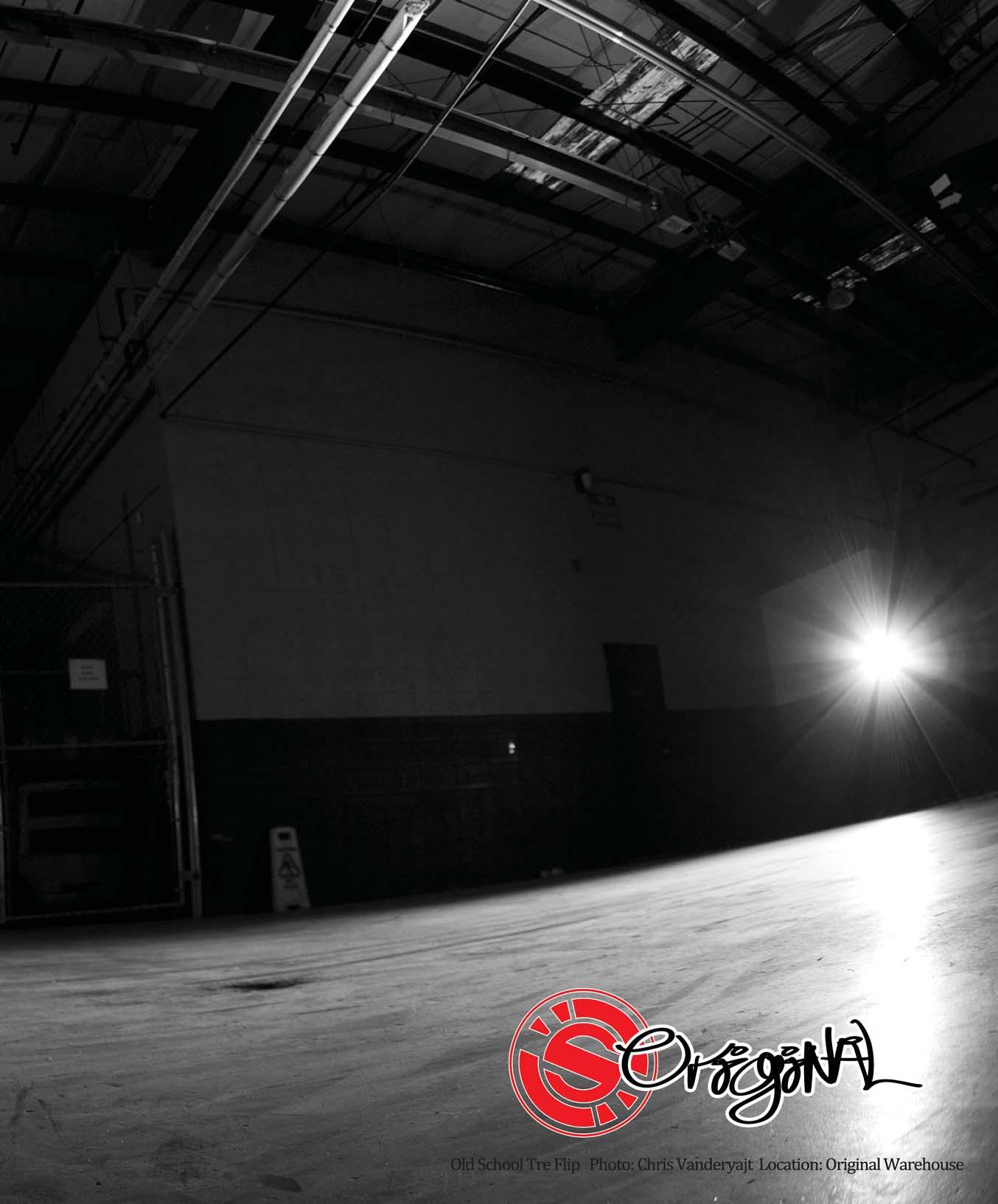




12 CONCRETE WAVE SUMMER 2010 24 EDITORIAL 26 LETTERS 32 NOTEWORTHY 40 THE FISH REPORT 44 OLD MAN ARMY 46 ISSA SLALOM REPORT 48 A SKATE RAMP IN THE PERUVIAN DESERT 54 ALL IN THE FAMILY: ORIGINAL SKATEBOARDS 58 CANE AND ABLE: CAMERON BLACK — THE BLIND SKATER 64 100 MILES: INSIDE THE WORLD OF ULTRASKATERS 72 SKATOPIA DOCUMENTARY 74 GREENSKATE 2010 77 NORCAL FREESTYLE JAM 78 RIDER PROFILE: DASHA KORNIENKO 80 MAKING THE GRADE 90 PUNK ROCK, PASSPORTS & PRIZES: WARPED TOUR 2010 92 2010 IGSA WORLD CUP SERIES PREVIEW 94 ART DEPARTMENT: HUGH CROWLEY CONTENTS
Amelia Brodka.
Photo: Brian Wilkes






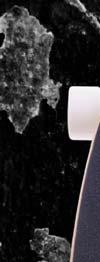






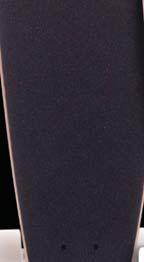





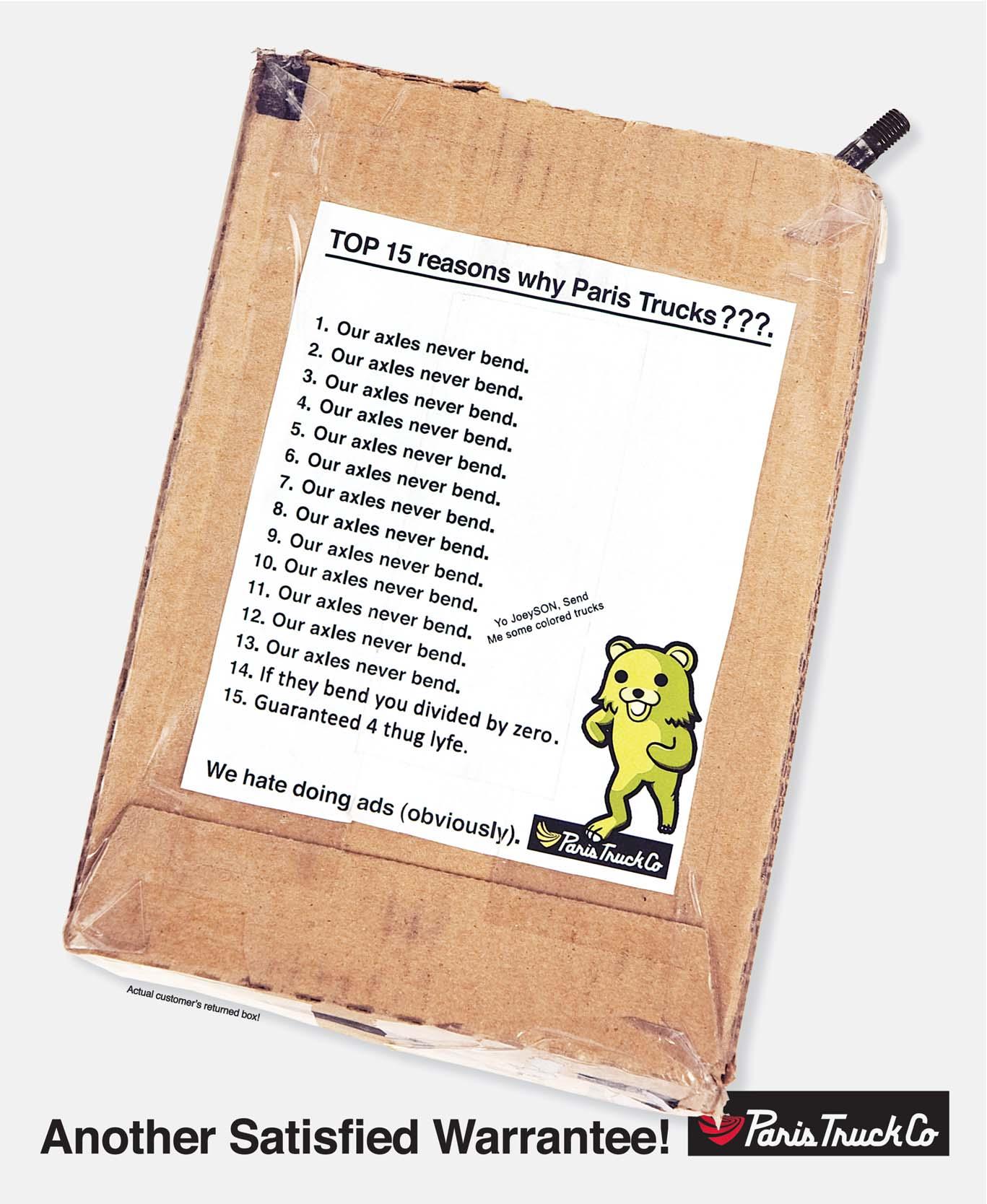

PUBLISHER/EDITOR Michael Brooke • mbrooke@interlog.com
SENIOR EDITOR Blair Watson
ART DIRECTOR Mark Tzerelshtein • MarkintoshDesign.com
ASSOCIATE EDITORS Mike Moore | Buddy Carr
DOWNHILL EDITOR Jon Caften
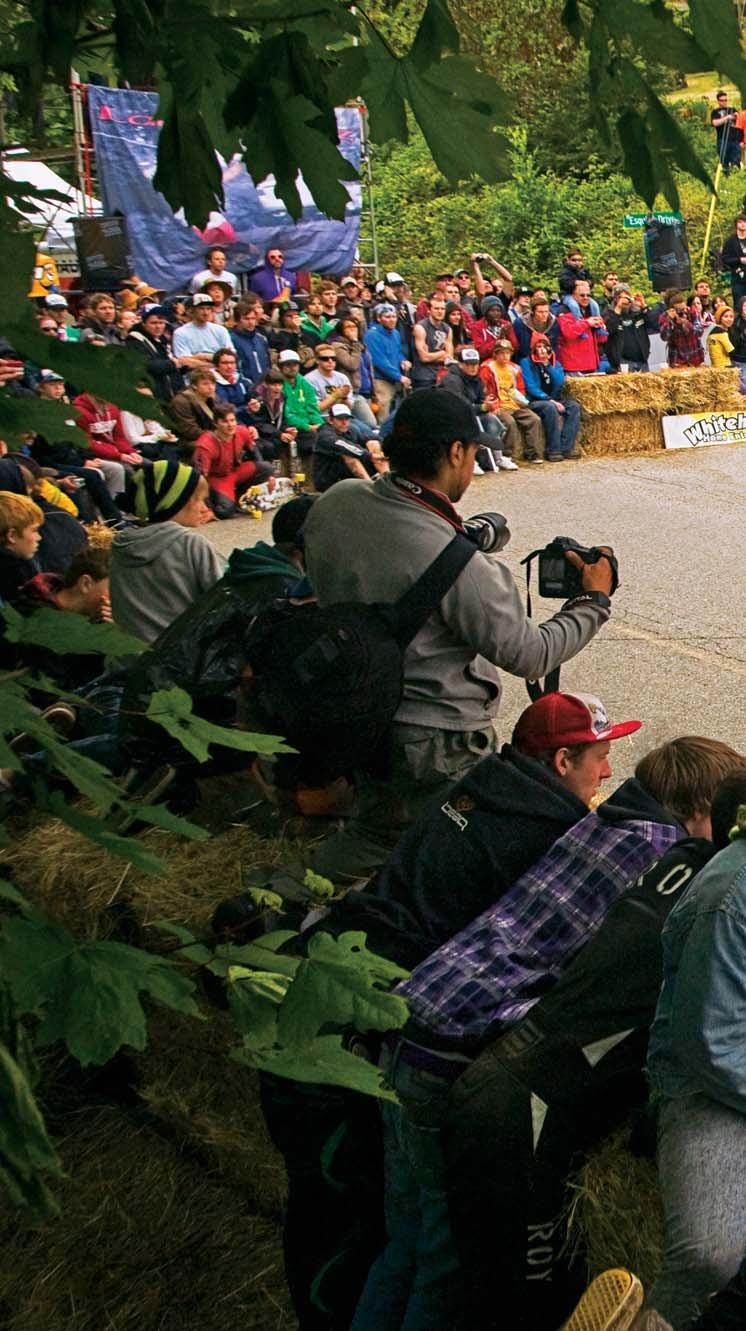
DOWNHILL PHOTO EDITOR Jon Huey
QUIVERS EDITOR Dave Hackett
IGSA WORLD CUP EDITOR Marcus Rietema
SLALOM/FREESTYLE Richy and Maria EDITORS Carrasco
STREET EDITOR/WRITER Marcus Bandy | marcusbandy1@hotmail.com
CORRESPONDENTS Jim Kuiack | Mark Kessenich | Kilwag
INTERN Sydney Goldberg
LATIN AMERICA, SPAIN Diana Gracida | Pablo Castro AND PORTUGAL
AUSTRALIA David Pang | William Fonseca | Nick Sable
I.T. DEPT. HEAD Rick Tetz of CalStreets.com
COPY EDITOR Jonathan Harms
HEAD OFFICE 1136-3 Center Street Suite 293 Thornhill, Ontario L4J 3M8 ph: 905.738.0804
SKATESHOPDISTRIBUTION Indaba Group PO Box 1895, Carlsbad, CA 92018 tailtapinfo@yahoo.com ph: 760.722.4111
CONTRIBUTORS (In order of appearance): Dan Bourqui, Brian Wilkes, John Huey, Jon Glass, Erik Lemay, Rudy Pena Jr., Steve Aycock, Max Dubler, Alexandre Maia, ZStudios.com/RJ LaMendola, Eddie Hadvina, CEO Studios, PmcG, Joel Lipovetsky, Michael Early, Old Man Army, Gary Fluitt, Sean Hueber Guillaume Saint-Criq, James Galletly, Alicia Fox, C. Vanderyajt, Cameron Black, James Peters, Brett Tinius, Kal Peters, Eric Lowell, Richie Wireman, Travis Dove, Ross Baradoy, William Cole, Benja Walsh, Arsen Fedosenko, Marcos Arguedas Pitti, Edgar Chinchilla, Chris Vallender, Jean-Sébastien Dennebouy, Jose Luis Solis, John Bach, Greg, Mihael Zadravec, Selina Shehan Devon Kelly, Marcel “off axis” Robert, Gustavo Espinoza, Gary Holl, Wallace Sueyoshi, Dave Flanagan, LongboarderZ.de, Maurizio Busato, Craig Morrison @ OASIS, Zach, Tyler, Tristan, Carmen, Rai, Harley, Kevin, Wolf, Tanya, Alex, Casey, Alexander, Adam, Ted & Norah Hunter, Jim Howard, Jason Chan, Pat Gittings, Kevin Lavigne, Big Toe, Berto Legendary H, Hugh Crowley. Special shout out to Kevin Lyman, Sarah Baer, Allison Skiff and Pete “Sparky” Corp.
concretewavemagazine.com
Concrete Wave is published by North of La Jolla Inc.
Subscriptions (5 issues) are US$26 FIRST CLASS or CAN$26 (US$38 outside North America). Address change? Mag not arriving? Email us... don’t go postal. We can sort it out. mbrooke@interlog.com. We will notify you when your subscription expires. Publisher’s permission is required before reproducing any part of this magazine. The views and opinions expressed in Concrete Wave are not necessarily those of the publisher. We happily accept articles and photos. Please contact the publisher directly at mbrooke@interlog.com before you submit anything. We are looking for a variety of stories and images as long as they are skate related.
COVER: Pedro Barros at the Vans Pro Tec Pool Party May 22, 2010. Photo: Dan Bourqui
OPENING SPREAD Zak Maytum leads the pack at Danger Bay 2010. Photo: Jon Huey
Distributed by ph: 416.754.3900 f: 416.754.4900
Printed in Canada
ISSN 1708-3338

Canada Post Publication. Agreement number 40671108
WELCOME TO THE FINE PRINT: We’ve made it to Vol. 9 No. 1. Whew! The time flies. This summer marks my 35th year skateboarding. The equipment gets better, the crowds get bigger, the participation rates explode and then WHAM…it all goes haywire. I’ve seen this repeat a few times now, and it’ll be interesting to see where we’ll be at Vol. 19. No.
1. Damn, that means I really will be a 55-year-old skategeezer! As you are well aware, Concrete Wave only covers skateboarding, but I am asking that you allow me a small indulgence this one time. I want to discuss music. Specifically, I want to talk about a band called The Specials. The truth is that my love of skateboarding is probably only matched by my love of music. I enjoy all types of music, but ska, reggae and punk remain my favorites. Bands that combine all of these genres together like The Clash and The Beat have had a huge influence on me, and they remain my all-time favorites. But it’s The Specials that have left the biggest mark, with their lethal combination of insanely great music, politics and style. As I recall, my discovery of the band coincided with skateboarding’s tragic second death. It was early 1980 and, sadly, SkateBoarder magazine had strangely morphed into Action Now. Besides confusing people with all types of extraneous activities (horseback
riding, anyone?) the fact was that skateboarding’s focus had become strictly about vert. This wasn’t a bad thing, but it didn’t reflect my reality. All the kids in the neighborhood had left skateboarding. This was well before the advent of the Internet, so it got mighty lonely. Not that I didn’t like to skate alone, but there wasn’t anyone around to push me to try new things. Adding to this was the sad fact that I didn’t live anywhere near the famed backyard pools of L.A., or any decent skatepark, for that matter. I was entering my 16th year, and it seemed like more enticing things loomed on the horizon. My attention soon drifted to other things: pursuing music and girls and learning how to drive. Here’s how things stacked up: I became quite accomplished at discovering new bands. It took me three times to acquire a driver’s license. As for girls, well, I think it’s best we leave those stories unpublished for now.
But let’s get back to The Specials. My good friend at the time, Michael Wright, introduced me to the band. I think he found out about them through another mutual friend, Andrew Shykofsky. The word of mouth on the band was enormous for a number of reasons. The infusion of ska and punk was infectious and intense. It mixed a vibrant sound with strong political messages. The album kicked off with “A Message to You, Rudy,” which was a delightful cover that to this day still puts a smile on my face. But by the fourth and fifth tracks, you were being asked to question your assumptions about prejudice (“It Doesn’t Make It Alright) and violence (“Concrete Jungle”). Had the band only made great music, it would have been enough to garner them a large following.
18 CONCRETE WAVE SUMMER 2010 CONCRETEWAVEMAGAZINE.COM Vol. 9 No. 1 SUMMER
2010
TM
But The Specials had more than just killer sound. They had a killer look. The black-and-white checkerboard look was something so simple, yet so powerful. I doubt they pinched it from the Santa Cruz Skateboards Steve Olson model, but I am sure I wasn’t the only skater who made the connection. Beyond the two-tone look in packaging, the band dressed in sharp suits. Mix all this together with an incredible live show, and you’ve got a recipe for a dramatic explosion. And that’s exactly what happened. The Specials were at the forefront of a musical renaissance, and for a few brief years, the burned with a ferocious intensity. Sadly, it was not to last; the band broke up in 1981. But the music still stands the test of time. In fact, given today’s political climate, it’s probably resonates even
deeper. “Ghost Town” could describe a number of areas in Florida and California that have been the victim of bank foreclosures. OK, enough reminiscing. Let’s bring back this to the present and refocus it back on skateboarding. In 2008, vocalist Terry Hall announced his intention to re-form the band. In April 2009, they did in fact re-form, but without one of the key members, songwriter/keyboardist Jerry Dammers. This year The Specials 2010 embarked on a world tour. I had tickets to the Toronto show (plans to bring the entire family) but it was rescheduled to a later date. This later date turned out to be August, when I will not be here. So, after waiting 30 years, I am going to have to wait a little longer. As you can tell, The Specials remain a deep passion of mine.

Whatever they ignited three decades ago still resonates deeply. If you’re wondering why some skate companies are building a following that borders on reverential, you can probably surmise they are delivering something more than just a piece of wood, two trucks and four chunks of urethane – and they are. They have the whole package: the product works great, it looks great and it’s packaged in a way that it oozes style. This is not an easy feat to accomplish. In fact, one of the hardest things in the world is to take something ordinary and make it truly special. I fear that some in skateboarding may have taken done the opposite and are now paying the price. To those companies, I say “This is the dawning of a new era.” But then again, if you’ve read this far, you already knew that!

SUMMER 2010 CONCRETE WAVE 19

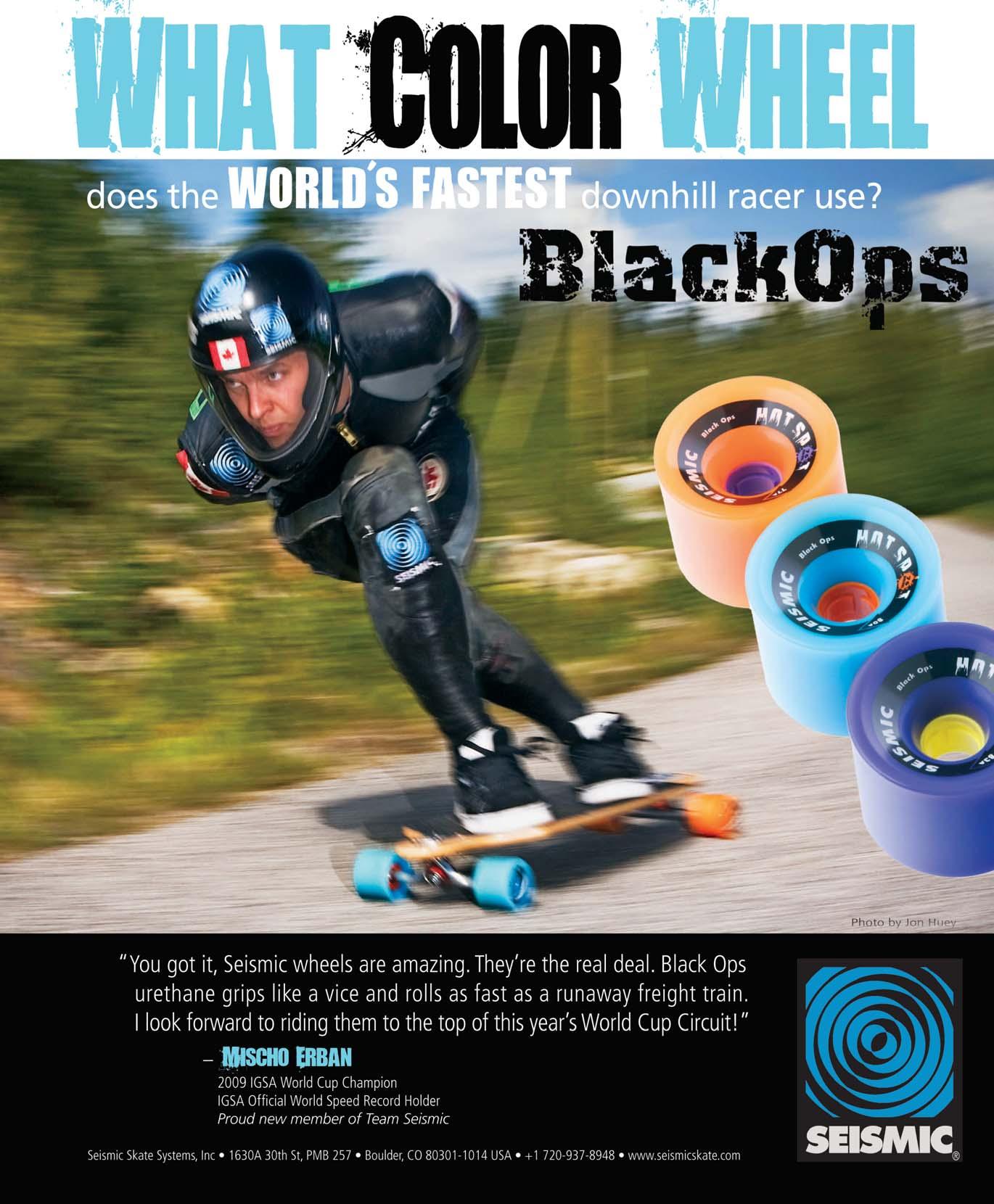


OR
This issue features a unique story by a skater named Cameron Black. Cameron is blind. Yet he finds a way to derive a huge amount of satisfaction from skateboarding. When he first e-mailed me, I was in complete awe of his story. It is an unusual thing to be doing, and yet his skate stoke is very infectious. But the more I learned about him, the more I realized that his story serves as a pretty powerful metaphor for what’s happening out there in skateboarding. Those new to the skate world will discover that it can often be an astonishing mix of pure stoke and rabid intolerance. There are some who believe that their type of skateboarding is the only way — that anyone who doesn’t conform to a specific standard or model is a kook, or worse. It’s a lethal combination that ruins people’s enjoyment of skateboarding, and sadly, it’s been plaguing skateboarding for years. The very thing that should bind all skaters together — the act of skateboarding — actually fosters an incredible amount of ill will and prejudice. You’ll find it in all areas of skateboarding: at the skatepark, at the skateshop, in magazines and on websites. Sometimes it’s simmering just below the surface, never coming to full boil. At other times it rears its head and a strangely dark, visceral hatred emerges. As I mentioned, the root of this intolerance stems from the issue of skaters not conforming to the status quo. (Who exactly is determining what the status quo should be is something best reserved for another editorial.) Suffice it to say, the incredible feeling that skateboarding produces should be what binds us together as skaters, not blinds us as skaters. It’s time for all of skateboarding to open its collective “eyes” and start realizing there are numerous ways to enjoy a deck with two trucks and four wheels. If you’re destroying someone’s skate stoke because they don’t conform to what you consider “proper” or “correct,” you are doing all of skateboarding a disservice; you’re in it for the wrong reasons, and your own prejudices have blinded you.
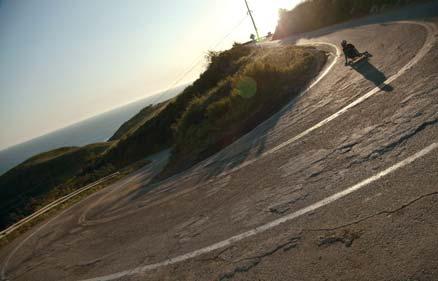
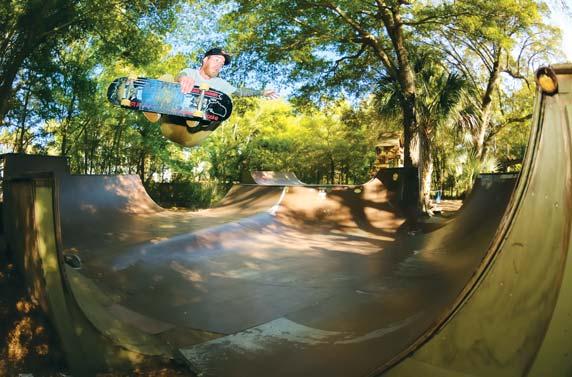



Here’s the reality: There is a multitude of skaters out there, all riding different types of skateboards. Added to this list is Cameron Black, who until recently only rode a street deck. A few months ago, I arranged to have an Original longboard sent to him. Here’s what Cameron thinks about it: “It’s a different experience, but I really like the way it handles and steers, and I love how smooth the ride is.” I still can’t figure out how Cameron skates, but he is now on his way to building a quiver. Cameron serves as an excellent example of what can be accomplished if you just put your mind to it. I encourage all skaters to lift off their veil of ignorance and see what’s out there. Instead of just skating one particular terrain or one type of board, open your mind to the possibilities. You might just discover something truly eye-opening. Enjoy the issue,
Michael Brooke, Publisher/Editor
THETIESTHATBIND THETIESTHATBLIND
EDITORIAL 24 CONCRETE WAVE SUMMER 2010
From top:
Gabe Ryan. Photo: Jon Glass.
Frank Lavalle. Photo: Erik Lemay.
Cameron Black. Photo: Rudy Pena Jr.
Jon Horne. Photo: Steve Aycock.
Andrew Chapman in Corral Canyon. Photo: Max Dubler
?



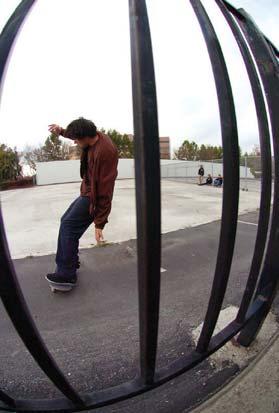
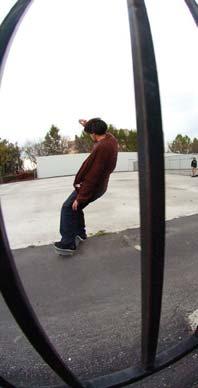
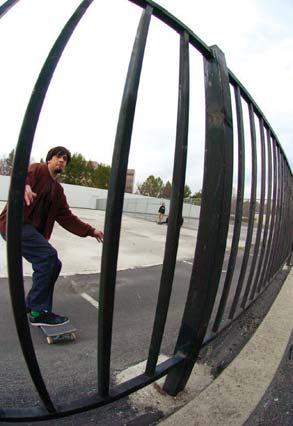


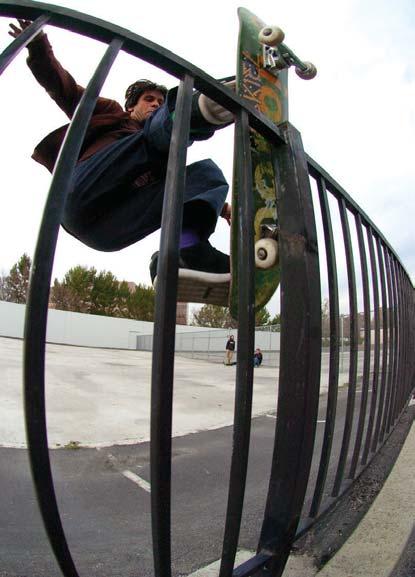






STRETCHING IT TO THE LIMIT
I’ve recently begun stretching on a daily basis and can’t tell you how much it has helped my skating. One of my friends that I skate with on a regular basis has been telling me about the magic of stretching for years but I didn’t really know where to start. Finally I broke down and started looking around the bookstore. At Barnes & Noble I found these handy guides by a company called Quamut. They are short and to the point and really helped to get me started. I liked the stretching guide so much that I went back and picked up two more, One-on-One Yoga and One-on-One Pilates. Now my day starts out with a combination of the three, and before I go skating I stretch real good. It only takes about 15 minutes but has made a big difference in my skating. Anyway I thought it may be worth thinking about an article on the subject.
Ricky B. Riner, Va.

CATALYST FOR CHANGE
Through CW, I just realized how fast this industry is moving. A couple of days ago I picked up my first issue of CW, the Holidays ’08 one. Just paging through it I noticed that if we jumped back to where the scene was then I’d be shocked, and it was only a little over a year ago. Now, I’m only 10 pages into the newest issue and I see that Grizzlies are even better now, Abec 11 is doing spring cleaning, Bustin has a new deck and wheels out and Seismic finally has a 76mm Hot Spot. I’m no marketer-type guy, but it seems to me that this industry is blowing up like a bad wheel at 60 mph (or something like that). I want to thank you for being a catalyst for these sweeping changes and doing your best to keep us all informed of them. Keep being rad!
David K.
Letter of the month receives a prize pack from Original Skateboards

PAGING BOB SCHMIDT
I purchased your “Concrete Wave” book last year and have been reading it off and on, and I really enjoy it. One story intrigued me: “The Day They Invented the Skateboard,” by Bob Schmidt. I lived near the area he was talking about and know the hill he was speaking of, so I was wondering of you had any contact information on Bob so I could e-mail him to talk about those days and “The Hill.” I am a 60-year-old skater and collector and I am having the time of my life. Skateboarding Rules! Hope to hear from you soon, and great job on the book! Regards,
Dennis A.
PAGING MELLOW CAT
Please do a “Catching Up With” Ted Richards (a.k.a. Mellow Cat). If you have already done so and I missed it, let me know. He’ll surely tell you the story of the true Cat. His site was down for ages but he’s back selling a CD-ROM of what I assume is the whole series. I am stoked! Not being a board collector, this stuff means WAY more to me than anything by VCJ.
Keep on Truckin’, MB!
Mike M. Richmond Hill, Ontario
COMMUNITIES VS. CLIQUES
Letter of the Month

I found the “Malled to Death” article to be most insightful. As a longtime skater and former independent business owner, I can certainly understand the frustration the “big box” and chain stores can put on the local skate shop. However, I also can understand how the mall stores were able to get their hooks into the industry.
If it’s not the pros too busy being pro to take time for the kids, then it could be the local shops and the typical pirate attitude. I have been skating since ’83, so quite naturally my son showed interest at a young age. I could not wait to get him into the local shop to pick his first board. The trouble with the whole experience was that we were in a new city and the shop was quick to give us the “locals only” attitude. Unfortunately, many indie shops suffer this same uninviting atmosphere. The skate industry has changed, [but] too many shops didn’t. The opportunity for these shops to welcome an outsider or new skater (cus-

tomer) has passed them by. I know there are some shops that fight hard for skateboarding, they are just outnumbered by those that prefer to keep it for themselves. I do not suggest that the mall or the Internet should be the future of skateboarding, but it will be unless the indie shops put their efforts into community rather than cliques.
Thanks for a great magazine. I look forward to it each issue.
Bill L. Panama City Beach, Fla.
ALL HAIL THE STALE(FISH)
My name is Andy and I’m a longboarder from Maryland. I figure you probably get a ton of these, but I didn’t know who else I should e-mail. I was reading the latest issue of Concrete Wave in my favorite skate shop when I thought about contacting you. There is a skates hop out here that goes by the name of Stalefish. It is owned by Mel Machovec, who started it out as a small skate shop in Bel Air and it has really blown up. Now dealing with mostly longboards, but every other type of board for every type of surface, he gets people from all over Maryland coming to his shop. I figure it is a long shot considering it’s a small East Coast shop, but the longboard scene is exploding here. I figured I would give it a try. Thanks for reading. Have a nice day and enjoy the asphalt.
Andy
IT’S HUGE
How’s everyone at Concrete Wave? Just lettin’ you guys know that you guys make longboarding look huge! Way bigger than I thought when I started two years ago! Thanks so much!
Mason P. Kelowna, B.C.
SPEEDBOARDER OF THE YEAR
I want to thank you for the opportunity with this article about me. It’s a great honor to be published in the best skate magazine of the world and even more in five pages... Extra is done by Mischo as a current world champion... It’s a great emotion... Thanks forever. I’m working hard for many years trying to push, increase and build the Brazilian scenery in strong basis. This article gives me a big strength to help promoting the Brazilian downhill more and more everyday...
Thanks eternally...
Best regards, Douglas
“Dalua” da Silva, Brazil



26 CONCRETE WAVE SUMMER 2010 CONCRETEWAVEMAGAZINE.COM
Ed. note: Ted Richards was/is the artist who created the “Mellow Cat” comic in SkateBoarder magazine in the 1970s.
Meet the future: Luca Cassemiro. Photo: Alexandre Maia





NOTEWORTHY Products, People, Events
FICKLE
High. Quality. Skateboard. Wood. Cut in Canada. Milled in Wisconsin. Pressed in Pennsylvania. Headquartered in Cincinnati. Deep Concaves. Elliptical Kick. Grownup Wheelbases. Fickleboards is a company devoted entirely to the production of amazing quality skateboards. If you find yourself wondering where the good wood went, try a Fickle. Our warehouse in historically gnarly Over-the-Rhine, Cincinnati is being fitted with a full shop to press even more good wood from the hood. We not only stand behind the quality of our wood, we stand ON it. fickleboards.com
REAL
Check out the new LottoREAL “scratch off and win” decks. Every board has a special scratch-off graphic with a chance to win one of more than a hundred prizes from Real, including a year’s supply of boards, a trip to skate the Berrics with Peter Ramondetta, shoes from Nike, DC, Adidas, Adio and more. dlxsf.com

ARBOR
Arbor’s most advanced downhill design, the Assault, is a fiberglass-reinforced, drop-through skateboard that’s built to deliver high-level speed, drift and carve performance. The new Assault’s cambered, symmetrical shape is ideal for switch riding and slide management, while its flex provides an amazing level of railto-rail power with a phenomenally smooth ride. Added sidecut creates a centered stance and improves turn initiation. Expect stability, control and return in a lightweight package. arborcollective.com
HONEY
The Flex is the latest addition to the Honey Skateboards lineup. Honey has developed the PLC (Pre-Loaded Core) technology that makes for a lighter, stronger and more responsive ride. The PLC process incorporates two pressings of a single board. First, the core is pressed into its pre-loaded camber and concave. The second pressing adds the outer veneers, fiberglass and reinforcing fiberglass stringers embedded within for added strength and rebound. The result is a light five-ply deck that has a finely tuned flex and rebound, making the Flex a lively carver. honeyskateboards.com
SURF2GO
Surf2Go is the European distributor for several brands in the skate industry but specializes in longboards. They are aiming to centralize quality brands for distribution to shops in Europe, like Koastal Skateboards, Kahuna Creations, Original Skateboards, Earthwing Skateboards, Buddy Carr Skateboards,

Balance Longboards, Tunnel Skateboards and ZFlex. surf2go.eu





HÜGELHERZBLUT/SIXXA
It’s obvious that a lot of projects in skateboarding involve passion and fun, so the latest Hügelherzblut/sixxa collaboration is no real surprise; the two girl-owned brands bundle forces to come up with three sick longboards. Following the latest clothing line, sixxa mastermind Kathi Macheiner picked some highlights from her sketchbook and reworked them to fit the decks. And all these detailed illustrations on funfairs and playgrounds are something that goes really well with these fine street-cruisers by Fee Buecheler, made in Germany! And in case you dig that style, there’s more great products out there; just check their websites.
Deck specifications: 90 x 25 cm. WB: 76.5 cm. Construction: Maple, triax glass, Hyperlite wood and a medium hybrid concave. Truck drillings: Old School. Weight: 1100 g-1400 g. Flex variety from City ’til Carving. sixxa.com and huegelherzblut.de

DARKSPEED
Darkspeed’s slide pucks have quickly built a following with the world’s top riders. Shops often use Darkspeed’s pucks instead of stock pucks that come with gloves. But now Darkspeed’s own glove has arrived. Not just a sexy body, these gloves are rough and tough but comfy as soon as you strap them on. They have extra leather right where you want it, and of course Darkspeed’s famous slide pucks. Sizes XS, S, M, L and XL. darkspeedconcepts.com
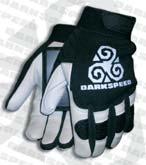
TUNNEL
Tunnel Products is proud to announce the Tunnel Funnel, a 77mm longboard wheel equally at home bombing hills or cruising around town. The wheels are poured in Huntington Beach, Calif. of high rebound Tunnel urethane with a perfect combination of speed and grip. The Tunnel Funnel is also available with Tunnel STR racing urethane. tunnelskateboards.com
EARTHWING

Always tinkering and always nerding out on new techniques, Earthwing just dropped a dual composite spear-nose pool/cruiser deck that rivals the energy of the infamous Thruster. La Paloma Rapido (the quick pigeon) features a thin five-ply maple core hot pressed between woven thermoplastic. It’s light, alive, strong and bombproof just like the real NYC wildlife, both winged and unwinged. earthwingskateboards.com

EASTSIDE
2010 — Year of the Eastside Top-Mounts! Adding two new downhill boards to the lineup, we celebrate our top rider this year with the release of the Casey Morrow Relic. Featuring a psychedelic graphic of our home state, Oregon. Also a fivedegree wedged nose and accurate wheel cutouts allow for wheels up to 80mm with no wheelbite! The new Rocky Bomber is versatile, made for both freeriding and bombing, with a symmetrical shape. eastsidelongboards.com
HEMOGLOBIN
Looking to create your own one-ofa-kind graphic on a deck? Have a look at Glouster, Mass.-based Hemoglobin, owned by 22-year-old Joe Brancaleone (or JoeB as he is known to the locals). Simply submit your scanned rough sketch of your board and graphics. Not an artist? No problem! Hemoglobin’s artists will work with your idea and put your vision under your feet. Hemoglobin can also do promotional decks with band or sponsor logos, or any other kind of graphic you have permission to use on your board. hemoglobinboards.com

JATI
Jati Boards is a new player on the roads. Based in Atlanta, Ga., they produce custom handmade longboards. Featured are the Ronin, Akira, Ninjati and Mini. Ronin’s drop-thru provides a lower ride and Akira allows for the use of multiple wheelbases. Ninjati is a top-mounted speedboard with a W-concave. The Mini is a small but functional board with a kicktail. Made in the USA! jatiboards.com
ROAD BUZZ

Grassroots film cohort Saft and Boneless’ debut feature documentary, “ROAD BUZZ,” will be released on DVD in July. The film takes a look at issues of trust, fear, obsession and motivation, through interviews with downhill skateboarders on a tour of European mountains. Shot on a shoestring, “ROAD BUZZ” celebrates the homespun and the spirit of camaraderie that pervades the downhill community. Selected for screening at the Duisburg Filmwoche Documentary Film Festival in November. roadbuzz.saftandboneless.co.uk
RAYNE
The new 2010 Hustler has been modified to be a more versatile all-city board. The concave and overall width of the board have been narrowed for an enhanced ability to throw down harder carves and surf-style slashes. The larger wheel wells will now accommodate a wider range of wheel and truck options for added customization. raynelongboards.com
32 CONCRETE WAVE SUMMER 2010 CONCRETEWAVEMAGAZINE.COM
CALIFORNIA BONZING
At the California Bonzing Company it starts with a tree and ends with board. For the summer of 2010 we are bringing you the Little Fatty, featuring the artwork of skateboard artist Dana Spriggs. If you are the type of rider who needs to hustle your board up a curb or over a pothole, this is the board for you. Stay connected — californiabonzing.com is right at your fingertips giving you what you want, when you want it.
RIVIERA
Just in time for summer are the new Skeletons In The Tube and Grateful Shred boards from Riviera Longboard Skateboards. Both have a nostalgic late 60’s early 70’s rock/surf appeal. Take note of the sweet swallow tail on the Skeletons In the Tube 9” x 28.5” and the delicious diamond tail of the Grateful Shred 9.75” x 29.” Available July 2010. rivieralongboards.com.
MIRAMAR
This May, Miramar launched a new website. Catching up with Web 2.0, Miramar’s new website is much more interactive than the last. Large, high-resolution photos, a blog with daily updates, hand-painted longboards by Miramar’s artists and all of Miramar’s new Spectrum Series boards are showcased. And soon Miramar will unveil a new deck designed by artist Nick Brown and some top skaters! miramarskateboards.com

LUV YO MUTHA
In the 2000 NBC Gravity Games Team Dregs swept the podium on our aluminum-core wheels. They were then ahead of their time. Now is the time for this ecofriendly aluminum-hub wheel to be in your quiver, too. Speed will be yours with the confidence of a hub that won’t let you down! Available in 70mm and 76 mm in 81A durometer. Coming soon: 60mm,101 duro pool/park wheels. dregsskateboards.com
FIBREFLEX

The SuperCarve is the flashy new model from the Fibreflex lineup with an adjustable wheelbase of 26.75”-27.375”. The shape is based on the “Leemo” Model from the ’90s. It’s back in a camber/concave version with five-ply maple lamination pressed between two layers of carbonfiber striped glass. SuperCarve comes in four colors: natural, yellow, red and blue. boards@gordonandsmith.com
Atobe announces a brand new selection of decks. All Atobe longboard models are made from performance hard-pressed birch construction in a 60/40 veneer layup. atobelongboards.com

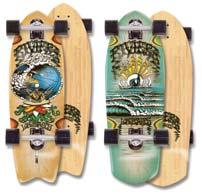

MADRID
Madrid recently announced that they have revamped their New Wave deck construction. They use corrugated stiffening ripples on the deck to make it harder to break without adding extra weight. The ripples also reduce contact area when sliding on the board. This makes boardslides smoother, faster and easier. madridskateboards.com
MOMENTUM
Kevin Harris freestyle wheels by MOMENTUM have only been available in Japan — until now. 55mm, 95A. Available from decomposedsk8.com

KURT HURLEY JOINS DREGS
Kurt Hurley, a Dregs team member from way back in the late ’70s, has teamed up with Biker Sherlock to manage the brand and distribution of Dregs skateboards. Hurley has a long history in the skateboard industry, which includes national sales manager at Select Distribution, owner of Brotherhood Board Shop for 16 years and managing B.C. Surf & Sport in the ’80s. Hurley competed in the X Games, Gravity Games and Gorge Games in standup downhill and street luge under the Dregs flag. He also rode for Turningpoint in the ’70s. dregsskateboards.com
CONCRETE WAVE ART CONTEST
Open to ALL, both artists and non-artists. Each artist may submit up to three entries in ANY medium. Submit JPG images via email – info@concretewavemagazine.com. Theme: Your impression of San Francisco, having the following components incorporated in the interpretation: skateboarding and the color purple or a little skunk. San Francisco has been called the skateboard capital of the world. It is the mecca for skateboarding, with the right weather, rolling hills, skateparks, urban setting and people. There is a large skate culture and industry in the City by the Bay.
Products, People, Events
There are no boundaries or limitations to this contest, but you must stay within the guidelines. Awards: First Place: $500.00 and the cover of the Concrete Wave January 2011 issue, plus six decks with the winning artwork donated from the Purple Skunk Board Shop. Five runners-up to be featured in the January 2011 issue. Concrete Wave will exhibit the artwork at the February ASR/Crossroads show. Deadline for submission is October 31, 2010 at midnight.
LONGBOARDSOURCE.CO.UK


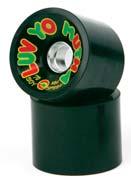
The Family Slide U.K. tour will bring Sergio and Fernando Yuppie across the pond to dazzle us with their skills. The British scene is getting together to watch and skate with the best, in four jam sessions the like of which Britain hasn’t seen in a long time. This is the first of a series of tours bringing the stars of downhill skateboarding to the United Kingdom with the aim of treating the guest riders to a VIP tour while bringing up the skill of everyone who participates. So don’t miss out; make sure you get to at least one of these events! Get further details at longboardsource.co.uk
REID MENZER FUNDRAISER
The Reid Menzer Memorial Skatepark held its spring fundraiser and contest on May 8, 2010. Among the events were the Bapple Skateboards women’s bowl and street events. The results are as follows:

StreetBowl
1. Rachel Matthews1. Samantha Thomas
2. Samantha Thomas2. Rachel Matthews
3. Bonnie Macfarlane3. Bonnie Macfarlane
This event was a collaboration between Lee’s Summit Police department, Target and Helmets In Hands. HIH provided a twohour skate and bike demonstration for parents and children attending the LSPD Bike/Skate Rodeo 2010.
SKAITI FOR HAITI 2010
On April 10-11, 2010, some 250 skaters spent 24 hours skating at Dunsfold Park in Cranleigh, Surrey (England) to raise money to help with disaster relief in Haiti following the recent earthquake there.

Roller skaters, skateboarders and inline skaters of all ages came together from all across the country to skate together for a full 24 hours around the Dunsfold Airfield circuit, and they were joined by skaters who had traveled especially for the event from France, Holland, Germany and the USA.
The mass skate was dubbed “Skaiti,” and it has already raised more than £15,000 to fund the work of the ShelterBox charity in Haiti and elsewhere in the world — and money is still being donated. Many skaters covered more than 100 miles on their skates and skateboards, and one longboarder, Matt Elver of Plymouth, achieved a total of 161 miles, beating the previous UK record.
SUMMER 2010 CONCRETE WAVE 33
ATOBE
Photo: Rachel Matthews (right) and Bonnie Macfarlane (left)
NOTEWORTHY
Dunsfold Park saw the fundraising potential of the mass skateathon after being approached by two skaters, Jo Coles and Jack Cousins, a mother-and-son team from Cornwall. 13-yearold Jack covered 55 miles over the weekend, a new personal best.

“We’re so grateful to everyone who has helped raise so much for charity,” said Jo, “especially to Dunsfold Park, who have been so generous to the cause, and who immediately saw the potential of the event. The fundraising success has been amazing and the feedback from all of the skaters has been incredibly positive. The weather was very kind to us and everyone gave it their best shot. We think that collectively we all skated to Haiti and back again, with some skaters skating through the night. We’ve raised enough money to send over 30 ShelterBoxes for the disaster relief, and even after 24 hours of skating everyone was still smiling!”
Jo and Jack were joined on the track by Jack’s granddad, making three generations of the same family skating for charity at Dunsfold Park.
For more information, check out skaiti.webs.com If you’d like to help the fundraising you can make a donation at justgiving.com/Skaiti24
(Ed. note: Each ShelterBox supplies an extended family of up to 10 people with a tent and essential equipment to use while they are displaced or homeless.)
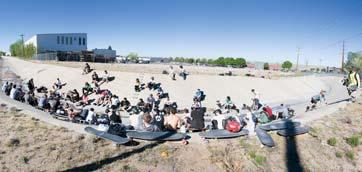
DITCH SLAP 2010
ROCHESTER, N.Y. MAYOR
HELPS SPREAD THE STOKE
Plans for a worldclass, public concrete skatepark in Rochester, N.Y. recently took a gigantic leap forward. In his 2010 State of the City address, Rochester
Mayor Robert Duffy
not only announced the city’s support for the Roc City Park (RCP) with a donation of land, appropriate permits and insurance…he also kicked down $50,000 to help keep the project moving forward. The park, slated for a scenic spot along Rochester’s Genesee River, includes an under-bridge portion similar to the iconic Burnside Skatepark in Portland, Oregon. roccitypark.org

HELPING AUTISIC KIDS VIA SKATEBOARDING


she said. As Chrys sees it, there is no wrong way to skate in a child’s eyes. “There was no judgment from other kids, and he did what he wanted how he wanted to do it.” Gianni Pike, John’s son, is the same way. He cannot handle a team and a coach, but skateboarding he can do, and do it well! For these parents, having autistic kids try board sports just makes sense. No team, no coach, no rules.
Right now A.skate is focusing on holding as many skate clinics within driving distance as they can. The two are running off of their own personal funds to make these clinics happen. Their goal is to be able hold fundraisers, events, and hopefully get a few sponsors behind them to help kick-start their programs. They have had a few industry leaders come forward and help them get the skate gear needed to hold the clinics. “We want to be able to give children grants to purchase their own skate gear at their local skate shops, so we are applying for grants and hoping for the best,” Chrys said.
The A.skate Foundation is a 501(c)(3) nonprofit corporation that allows children with autism to be a part of our social world through skateboarding.

Chrys Worley and John Pike, the founders of A.skate, are both connected to the skateboarding industry, and both have children on the Autism Spectrum. Chrys works as a dental assistant and is married to the owner of Faith Skate Supply in Birmingham, Ala. John has worked for Eastern Skate Supply for more than 14 years and lives in Wilmington, N.C.
After last year’s media exposure, TimeShip Racing made good on its commitment to keep this year’s event capped at 60 riders and maintain a lower profile to ensure that everyone stayed rolling and safe. Perfect high desert weather prevailed all three days. It started with two full-size school buses picking up the entire crew and all of their gear for a full-day field trip. Buses are the perfect Urban Camouflage; you can park a bus anywhere and no one will bat an eye!
This year TimeShip unveiled the Bravo Bowl, 150 ft. across and 60 ft. deep with an early grabkicker and a bungee! Three timed races, two “Chinese Downhill”-style races and dozens of shuttled ditch runs ended with a peanut-throwing awards party at Texas Roadhouse. Zak Maytum and Jason Mitchell won the Team Competition for Colorado; Team California took second and Team Portland third. Maytum also won the overall title, with Will Brunson second and James Kelly third. Big thanks to our sponsors: Altec Lansing, Powerhouse Roadboards, Madrid DH, Durango Boards and Landyachtz. timeshipracing.com
John and Chrys designed A.skate to introduce families of children with autism to the skateboard world. Chrys met John and his wife, ,Tina, through attending a Surfers Healing camp in Wrightsville Beach, N.C. Their families are a lot alike. Their sons are the same age and both are into skating. “I never knew the impact that Sasha’s (her son) skateboard had on him until I attempted to put him into an organized sport. It was a nightmare,” explained Chrys. “He has OCD [obsessive-compulsive disorder] that literally controls his life; everything has to be yellow, on the left side, and he wants certain children to do things in the order he wants them to. We gave up, and with no special ed baseball or soccer teams in our area he just started to skate more.” Chrys says Sasha would skate in the driveway, and eventually she took him to a skatepark. “He looked so happy. It’s not often that I see him in a social scene where he is just happy and not letting his OCD take over,”
On May 1, 2010, A. Skate kicked off a campaign asking the skate industry and skateboarders across the nation to do one simple thing on Go Skateboarding Day this year: Take a child with autism skateboarding. Of course just about every shop has an event going on, and it is going to be a hectic, busy day for everyone. However, you can start now. A.Skate would like to see people take a child with autism to a local skate shop to let them see the atmosphere, feel the boards, learn about the specifics of how a skateboard rolls, etc. Take them to a local skatepark and let them watch how people use a skateboard and do tricks. Contact your local skate shop and ask if there are any events going on in your area that you could take the child to and be a part of, or simply just introduce the child to skateboarding by surfing the Internet and letting them watch videos or play online video games that are skate-related. Send them pics or videos, and A. Skate will compile a collage of what GSD means to families of children with autism. They would like families of children with autism to reach out to the skate community and feel a sense of welcoming. Chrys recently took her kids on a road trip and traveled through Florida. “We made a stop at the Skatepark of Tampa, where Sasha learned to roll in off of big ramps just by watching the older kids skate,” she said. “After being there for a while the older kids were reaching out to Sasha and showing him how to do tricks, how to place his feet on his board so that he wouldn’t fall when he decided to get brave and drop in.”
Autism is usually not on young people’s radar, and these skater and surf kids WILL be the next parents of children on the spectrum at the rate that autism is increasing now. Early intervention and knowing the signs are the key to getting help for the children. Through skateboarding Chrys and John have found a way to let their autistic children find self-confidence, and it’s also therapeutic for them.
These kids had heard of their GSD campaign through the Internet and decided that they wanted to get involved. “It was inspiring to see teenagers get on the level of a 7-year-old with a disability and reach out to him,” Chrys said. Chrys and John have set their sights on creating a not-for-profit with a very ambitious goal: “Help us embrace the parts of autism that are hard to understand, and give these kids an outlet that is free of rules or judgment.” askate.org
34 CONCRETE WAVE SUMMER 2010 CONCRETEWAVEMAGAZINE.COM
NOTEWORTHY Products, People, Events
Photo: Joel Lipovetsky
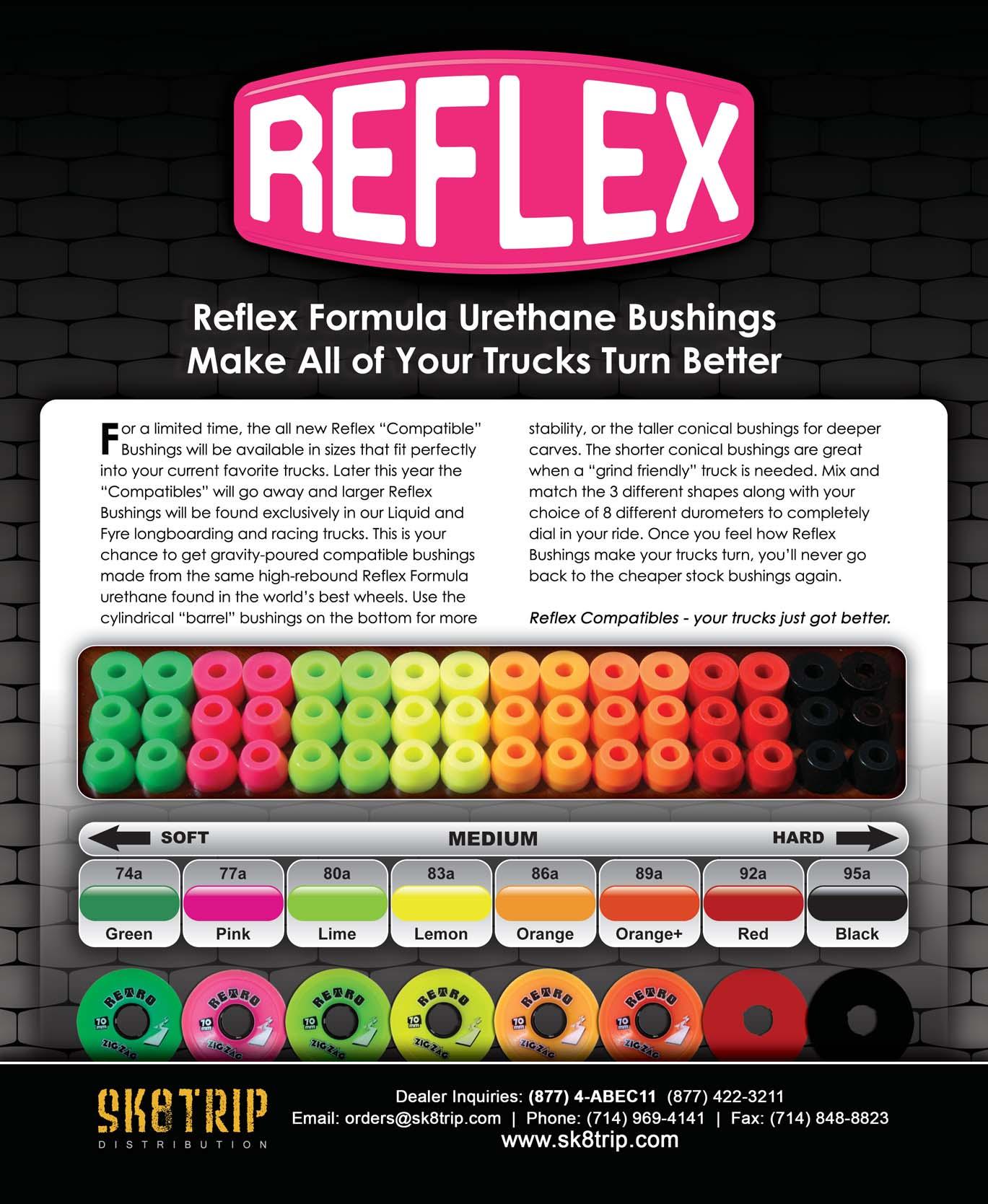
NOTEWORTHY
Products, People, Events
SKATER MADE


Skater Made just received nominations for best core skateboard film in 2010 for “SMELL THE ‘CRETE.” They have also released three new skateboard decks that rip in any terrain. Original silk-screened artwork, custom shapes and quality guaranteed. The GB2 is a unique asymmetrical wood stained longboard with a classic skeleton bike graphic. A slick guest Donny Barley deck, celebrating his commitment as a professional skateboarder, pops with the beat of the streets. And the Kevin “Worm” Anderson cruiser pays tribute to a throwback shape with modern design. skatermade.com
ERBAN JOINS SEISMIC
Seismic Skate Systems announced that 2009 IGSA World Cup Champion Mischo Erban has joined Team Seismic. The exclusive multiyear contract will support the 26year-old Canadian downhill skateboard racer’s training and pursuit of further international victories. Seismic expects to integrate Erban into both marketing initiatives and product development. info@seismicskate.com

THE COLLECTION AGENCY
By Michael Early
I was walking through a construction project recently and said hello to one of the finish carpenters, and realized it was a guy I knew from my skating circles: Tom Putnam, a.k.a. “Twister.” We have a lot of common skate friends, spreading all the way back to the Midwest and East Coast. As our talk always does, it went right to skating. He told me what he was up to. Twister told me he salvages hardwood pieces from old cabinet and finish projects, mills them, glues them up into exotic laminations and then fabricates custom skate decks out of them. When I heard this, I had to see them myself, so I cruised to his shop. It’s super-small but has everything that’s needed to create custom made-to-order decks. Each one is shaped much like we make surfboards, using butterfly templates. They have beveled rails and wedge tails and are handsanded and finished and individually numbered and signed. Some have even been sold through one of San Diego’s premier classic surf shops, Hansen’s in Encinitas. Not high volume, but a super-cool addition to any serious collection. Contact Twister at twisterputnam@yahoo.com

If you’re not already familiar with what went down at the first annual Malibu Invitational Slide Jam, hosted by Orangatang and sponsored by Paris, Comet, Stoked and Fireball, here’s your chance. The fulllength video is out now and chock full of shredtastic jamming and enhanced rad. Check it: bit.ly/aCuDZA
HIGHWAY GOSPEL

In 2007, a group of guys going by the name “Ongoza” set out to capture exactly what was driving the current growth of downhill and slalom skateboarding. After meeting with countless skateboarders, company owners and race organizers, three unique individuals became their focus. Shot over the past three years, filmmakers Jaret Belliveau and Craig Jackson have created a layered and intriguing account of three skateboarders telling a timeless tale of survival that is both humorous and at times heartbreaking. The film follows Claude Regnier, certified skateboard coach and the oldest competitor on the slalom race circuit who in spite of a looming heart surgery makes one last attempt at becoming the world Champion. Jody Wilcock, as he builds a home made CNC to prototype new skateboard designs and scrambles to prepare for the annual Sullivan Challenge “extreme” downhill skateboard race. And, last but certainly not least, Bricin Lyons, The Godfather of the Coast Longboarding community, organizer of the largest downhill skateboard race in the world, Danger Bay, and an infamous race announcer. highwaygospel.com
2010 PRO-TEC POOL PARTY


 By Michael Brooke
By Michael Brooke
This is always an incredible event, and this year was no exception. I took a camera to get some candid shots of the skate legends that are drawn to the show.
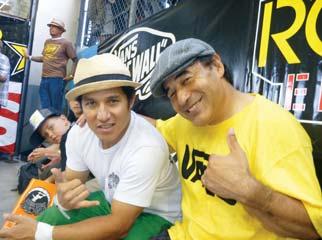



36 CONCRETE WAVE SUMMER 2010 CONCRETEWAVEMAGAZINE.COM
MALIBU SLIDE JAM
Chris Strople (seated, with blue and white shirt). That’sMikeVallelystandingabovewithhandsfolded.
Steve Van Doren signs a shirt.
Mike Rogers of Grind for Life.
Jeff Ho of Zephyr.
Tony Mag with Angela and Jerry Madrid.
Wes Humpston throws the bird.
Eric “Tuma” Britton and Bennett Harada.
Christian Hosoi and Steve Caballero.

Products, People, Events
RESULTS
Masters
Pros
COMPANY PROFILE: Silly Girl Design
mullet wigs, Silly booty shorts and even pink lipstick eye grease. The girls have been seen at WCS events, Girls Riders Organization workshops, the Venice Beach skatepark opening session, Wicked Wahine events and even at random male-dominated contests.

Posse Roundup: Julie Westfall, 18, lives in Chatsworth, Calif. She is the Team Captain of the Silly Girl Skate Posse and a big sister to the crew. Julie tied for 24th place last year in bowl rankings at WCS competition. Julie often skates with her boyfriend, Matt Boyster, whose daring style she absorbs. Be careful; Julie drives now, too! The skateboarding world is lucky to have this amazing personality. You can see Julie getting silly regularly in the Combi Bowl at Vans in Orange or Skatelab in Simi Valley. Her mom and dad are always ready to feed the crew after a long road trip.


Ashley Espinoza, 15, is a Badlander out of Ontario, Calif. She specializes in bowl and transition skateboarding and has been known to eat burritos and blow bubbles during frontside airs. Ashley also rides for S4 Optics and PUSH grip tape. You can see her rip at Montclair, Chino and Vans in Orange with her boyfriend, Mike Brookman. Be sure to watch out for her family of cupcake-destruction sistas and bowl-riding brothas delivered consistently by mama and papa!
The newest addition to the Posse is Bryce Wettstein, 6, who resides in Encinitas, Calif.

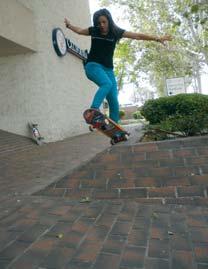
Silly Girl Design was created in 2005 in Orange County, Calif. The silly lifestyle influences everything from skateboards and apparel to interiors and art. The company is influenced by a mix of retro imagery, street art and feminine originality. The Silly Girl Skate Posse showcases the elite few officially chosen to represent the company. Eye shadow and mismatched shoe laces, thigh-high socks and knee pads — these are the common characteristics of a silly girl. The Posse represents unity and friendship with an edge. The girls are encouraged to push the boundaries of skateboarding and art with their unique styles and attitudes. The Posse rolls deep due to family involvement and grassroots support.
The Posse Up Tour 2009 took the crew up to Prescott, Ariz. for a completely insane weekend including an ’80s Bowl Jam. The team has been seen wearing subtle clothing such as ballet tutus,


Bryce’s “brother,” Spike the Iguana, is the manager of the Iguana Bowl and official mascot of Concrete Wave magazine.






Bryce also rides for ramp builder Jim Bell (auraskateboarding.com), giving her a chance to be around all aspects of skateboarding. Bryce specializes in bowl and transition skateboarding and surfing and is an all-around athlete. Bryce is often seen at the YMCA skatepark in Encinitas wearing bright pink with her mom and dad shredding around as well. She even has her own website, brycewettstein.com.
Silly Girl Events bring together girls from different social networking sites and various skatepark crews. The events have a flea-market feel, with various activities including stencil art clinics, unique vendors,
Pat Ngoho takes in the atmosphere.
Duane Peters contemplates his next move.
Bucky Lasek throws a shaka.
Dale Smith and John Hughes.
Lester Kasai gets patched.
The always smiling Ray Barbee.
Darren Navarrette (black and orange hat).
Jeff Grosso is always a fierce contender. Concrete Wave Magazine publisher hands out patches. Hilarity ensues.
1. Steve Caballero $13,000
2. Chris Miller $7,000
3. Lance Mountain $4,000
1. Bucky Lasek $30,000
2. Rune Glifberg $18,000
3. Omar Hassan $10,000
CONCRETEWAVEMAGAZINE.COM 38 CONCRETE WAVE SUMMER 2010
NOTEWORTHY
Bryce Wettstein
Photo: ZStudios.com/ RJ LaMendola
Julie Westfall
Photo: Eddie Hadvina
Bryce with Steve Van Doren.
Photo: CEO Studios
Ashley Espinoza
Photo: CEO Studios
party food and beginner/intermediate skate sessions. Past Silly Girl events include: Fullerton Grind 2009, Candy Bowl 2009 and Shop Wars 2010. Some smaller gatherings include skate cake birthday sessions and Silly sleepovers. Be sure to lookout for the Pirate Bowl coming late summer 2010!


The Candy Bowl was a beginner and amateur skate competition held at the Basic Bowl in Huntington Beach. This was, for some, their first contest; for others it was their first time skating a bowl at all. The girls dressed in Halloween costumes as they ripped. The results include Allysha Bergado, first in 14 & Over and Annika Vrklan, first in 13 & Under. Due to an ACL injury, Abby Zsarnay was not able to compete. She was asked to be a special guest judge to encourage understanding of the judging process. Other attendees included rippers such as Kora Grzyb, Lizzie Armanto, Melissa Spillman and the JACS Crew. Silly Girl Skateboards are seven-ply rock hard Wisconsin maple and come in five sizes (for now): 7.25” (12.5” and 14.0” wheelbase), 7.50”, 7.75”, 8.00” and 8.25”. The popular Silly Team Rider deck is ready for customization by you or Silly Girl herself. Complete mini boards are also available for beginners to start rippin’. Silly Girl Apparel is simple and comfortable for participation in random activities. The designs are influenced by retro symbolism and street expression. From Silly booty shorts to pink zombie shirts by Tha Bum, the company keeps things original.
The Silly Girl art division offers both creative mediums and inspiring channels. Silly Girl art brings various lifestyles together by unifying feminine creativity in life. From stencil art clinics to participation in random art shows, the division opens doors into places girls never imagined possible. The girls are encouraged to share their creativity and express it on and off their deck. With access to the headquarters studio, the girls are always designing something crazy, from hand-painted luggage to stenciled skateboards.
Remember, girls’ skateboarding needs to be nurtured. Special thanks to Courtney Payne-Taylor at the Girls Riders Organization, Decked Out Board Shop, Z Studios, Sk8Sister and Skatera for their constant support in the movement. Silly Girl Design works closely with the Girls Riders Organization, Inc. (girlsriders.org) and Mandy Esch from 360 Skate School (360skateschool.com) to “inspire, educate and support girls in action sports.”

LADERA
Ladera have just released two new wheel models that will be on all of their completes. They made custom wheel molds for the 66mm/84A duro Boogers along with the 70mm/78A Snot Rockets. Laderaskateboards.com

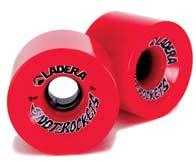
CORRECTIONS
Dave Mc Cann took the table of contents shot of Waldo Autry. Kilian Schöner was the skater in the opening spread of the last issue. Jeremy Lauer took the photos of the Head Board Shop.

SUMMER 2010 CONCRETE WAVE 39
Photo: ZStudios.com/ RJ LaMendola
Ashley Espinoza
Photo: PmcG
Rants, Raves, Sunburn and Scabs







Summer of Innovation? Bah, that was last issue! I got something innovative for you: go skate! Yeah, put down the magazine, wipe your ass, flush the toilet and get out there & do something worthwhile!

By the time you read this, school is out for summer or it just don’t matter ‘cause you’re done with school and maybe you even figured out why you miss it. Either way, it’s the season where most of the people reading Concrete Wave are in the season of warm sun, dry roads and perfect skating weather. Okay, if you’re down in ‘zona, Texas or even SoCal, it might be scorching sun, melting wheels and heatstroke, but tough-up! Did you think this was about hanging around the mall, lookin’ good in your new skinnies?
Hell, no! You’re a skater and that ain’t fashion, it’s rolling some ‘thane down the street or around one of those 137,000 unattended swimming pools out behind foreclosed homes the banks in the USA are sittin’ on instead of selling. Try setting up a slide comp with buddies and write your name in melted petroleum or those new wheels made out of rancid soy milk (damn hippies)! Hit parking garages with cones in the middle of the day and race’em all night after it cools down and everyone goes home to watch television and cheer for whoever’s dancing with the stars or whatever crap is polluting our childrens’ innocent minds. But not you. Hell no, thank you very much.You’re a skater. Go Skate.


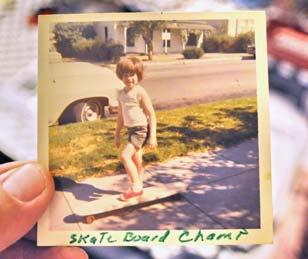


Road Trips Rule. Did we mention that? Here’s a few from around the ‘fish nation that are worth your time whether you really get there or just take some stoke and make your own version of these killer events: Maryhill Festival of Speed. Who doesn’t know this is the king of North American racing events?
2.2 miles of curves, riders from around the globe, live bands including those dirtbag hoseheads from Van and a chance to skate with the

best riders in the world. It’s early this year, so get up to Goldendale on the June 30-July 4th week and don’t forget your Uncle Sam socks. Ten days later, you have to be on the other side of the planet in Hungerzell, Germany, for IGSA’s Alamtrieb World Championships. Hell, yes that would be a serious road trip…take the summer, follow the World Cup Circuit and skate the best tracks in the universe! What, you’re stayin’ local, then put something together like the Long Beach Push Race will be on July 17th: five and a half miles of pain or stoke, depending on how fast you try to get across El Dorado Park outside of Los Angeles. Got one or four more for you: Sergio and Fernando Yuppie are crossin’ the pond to stoke out the sliding scene in Devon, Cornwall, Sussex & London, England this July & August and if you haven’t seen these guys pitch a slide and felt the stoke infect everyone around them, you gotta get over to one of the sessions. The dates, times and info for all this and way more is updated by the skaters doin’ it on the ‘fish, so just go freakin’ look after you’re done creamin’ over some glossy ad in the ‘wave for mahoghany bushings or pearlescent grip tape.
Pics? Yeah, we pulled some pics off the site and slapped ‘em in here for you. The “DH Disco” event mixed sliding, a GS course and soft-wheeled longboards together for some stoke — our boy Kaz Canning snapped Max Capps defiling both the course and the state flag. Somebody told’ya they “invented longboarding”? Yeah, “no” sez little missy 1964 and JT about 4 decades before he got so ugly and if that other pic don’t fill you with stoke then just choke on a tech deck or something!
When the rest of us’re done skating, take a break and chill on the ‘net. Tell us what you’re doin’, who’s doing it and share your stoke! While you’re on there, look for more Silverfish exclusives like the 2010 Fresh Fish wheel, maybe a couple of first-run opportunities for new trucks, some more wheels, who knows? Post your vids and slap me a few more of those ‘fish stickers on the po-po’s bumper. We’re in it for the fun and the scars. Hope you are, too. Skate it — we’ll see you out there on the asphalt.

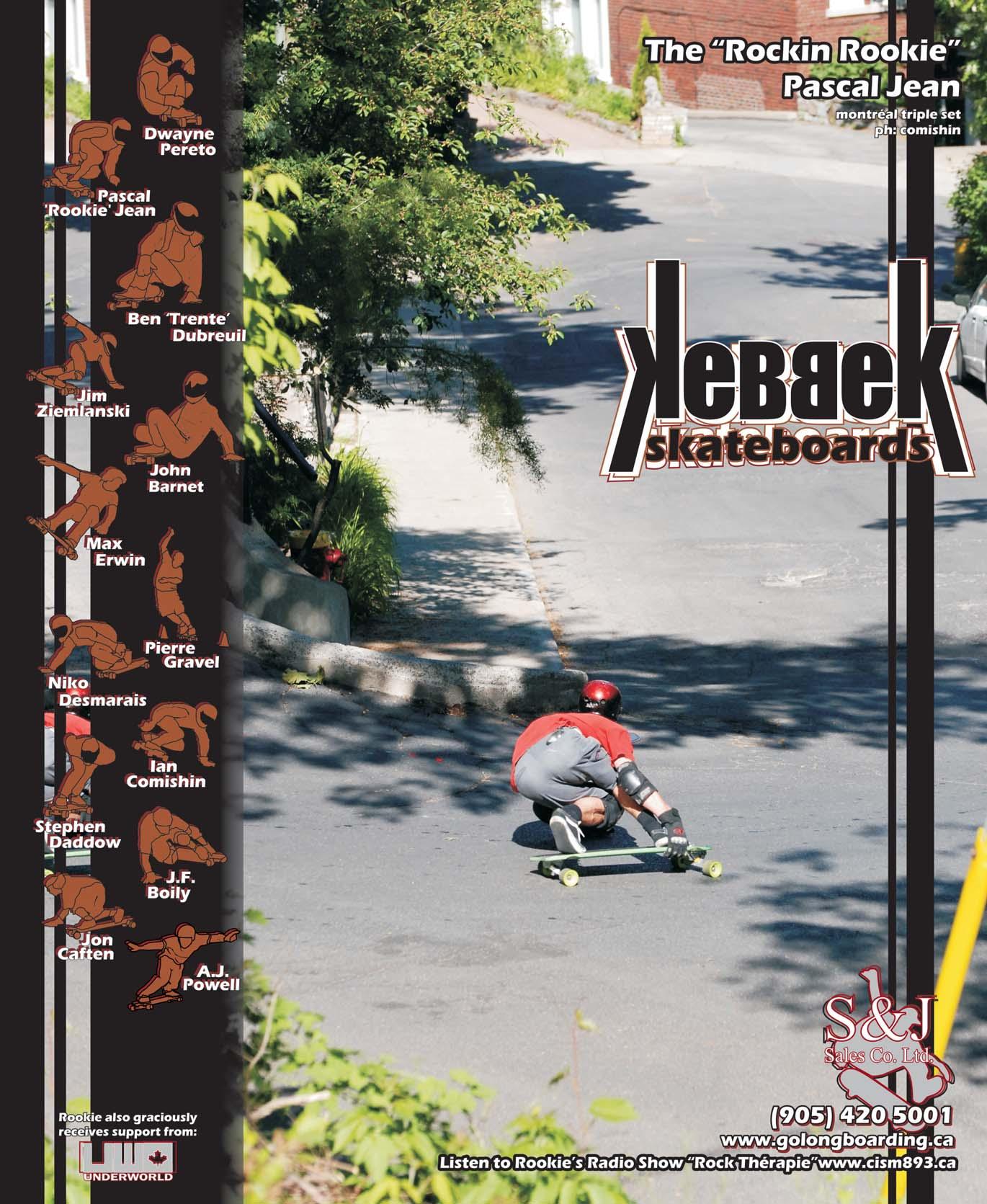

42 CONCRETE WAVE SUMMER 2010 www.golongboarding.ca S&J Sales Co. Ltd. Skateboard Distribution since 1985. • 905-420-5001 east • 604-244-2361 west • Info@sjsales.com Abec11 Bennett Black Label Cadillac Gordon & Smith Gravity H Street Independent Jessup Grip Tape Kebbek Khiro Loaded Madrid Orangatang Paris Truck Co. Pimp Grip Randal Trucks Retro Riveria Sabre Santa Cruz Shut Triple 8 Tunnel Venom Veloz Tracker Trucks


SUMMER 2010 CONCRETE WAVE 43

DEFY THE LAWS OF GRAVITY AT NEWTON’S NATION!
Gravity (n) grav·i·ty: dignity or sobriety of bearing, so essentially, what goes up must come down. When Isaac Newton developed his theory, little did he know the lengths mankind would go to challenge it! At Newton’s Nation, the ultimate extreme action sport and music festival, this challenge will be taken to new heights — literally!
Over the weekend of November 26-28, 2010, a unique event will take place at Bathurst’s Mount Panorama, Australia’s leading sporting venue. The inaugural Newton’s Nation will welcome over 20,000 revelers onto the mountain and play host to three days and two nights of world-class gravity and action sports, featuring competitors from across the globe — all to the tune of some of the best bands and DJs in the country.
More than 300 top action-sport competitors will compete and demonstrate their skills across four dedicated sports zones on some of the most epic ramps and tracks ever experienced. Showcasing the best of skate, BMX, mountain biking, wake, luge, scooter and parkour, this unique event will focus heavily on spectator participation; from interactive skateparks to parkour training and rides, this adrenalin-filled weekend is not for the faint-hearted!
Of the four sports zones at Newton’s Nation, the G-Force Zone will be where all the skate action unfolds. Arguably the most intense area of the festival, this zone will feature 200 competitors, many of whom are the world’s best riders, including 2008 and 2009 World Champions, battling it out in IGSA World Cup competitions that will include disciplines in downhill skateboarding, luge and classic luge. Now in its third year, the Australian IGSA World Cup at Newton’s Nation will be run by the Australian Skateboard Racing Association (ASRA) and offers a prize purse of $20,000 to the winning competitors!


Mount Panorama is a world-renowned motor-racing circuit with butter-smooth pavements ideal for downhill racing. The downhill section of the track starts at Brock’s Skyline, leads into the Esses, down the Dipper and then has a 300-meter run into the hairpin known as Forrest’s Elbow. Accelerating out of Forrest’s Elbow is key to reaching top speeds of more than 100km/h down Conrod Straight and to the
finish line. The technical challenges are immense on this iconic track. The 1.3-km course has a 12% grade and vertical drop of about 140 meters. The Mount Panorama World Cup race track is viewed as one of the fastest and most intense races on the tour.
Newton’s Nation is also bringing a first to Australia with the introduction of Roller Man, or Jean-Yves Blondeau as he’s also known. Roller Man is a French designer who is best known for creating the 31-wheel roller suit (Buggy Rollin). This suit places a number of rollers (similar to those found on inline skates) on most of the major joints, the torso and the back. The wearer can ride in a variety of positions (inline standup, on back, on torso, on all fours, etc.) at speeds of up to 60 mph (96 km/h). He has been featured on television shows in several countries, and two of his suits can be seen in a short scene partway through the end credits of the 2008 Jim Carrey film “Yes Man.” He claims his fastest time yet is 116 km/h and his highest jump is 5m 70, and he is the only person in the world doing Buggy Rollin regularly. Roller Man plans on breaking his personal best live at Newton’s Nation, taking on the G-Force Zone in what will be one of THE spectator highlights of the festival.
Alongside the extreme action Newton’s will have an impressive lineup of top Australian acts over the three-day festival. Featuring live rock, hip hop, dance and indie artists on the main stage, and five DJ towers spread throughout the site, you can dance, krump and mash it up from dawn till dusk. Nowhere in Australia has this combination of action sports and live music come together in such a sensory overload.
And for the less energetic visitors, the mountaintop open-air cinema — screening the best in action-sport films throughout the weekend — will be a welcomed respite along with the licensed bars, food stalls and night markets.
The onsite camping ground will offer a dedicated area for families, a teepee reserve — for the glam-pers — and general camping zone.
Newton’s Nation is THE mecca for action sport and live music; fusing music, action sports, visitor interaction and camping together to produce a truly unique Australian festival.

To find out more information, ticket prices and to book, visit newtonsnation.com.au


SUMMER 2010 CONCRETE WAVE 45
ADVERTORIAL
ISSA SLALOM REPORT RACE RECAP –TWO DAYS OF TURRI
By GARY FLUITT and JONATHAN HARMS
Following up on early-season events in Texas, slalom skateboard racing stayed on a roll with Two Days of Turri — possibly the first competition ever sanctioned by both the ISSA and IGSA.
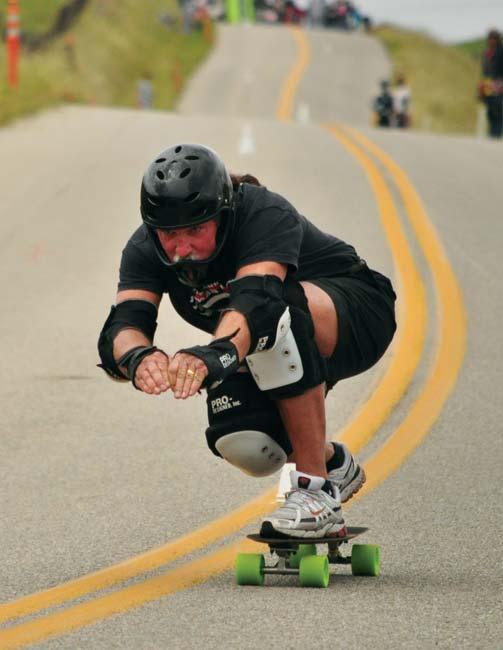
Jonny “The Thriller” Miller and Jay LaPalm, in conjunction with Sk8Kings, hosted the Two Days of Turri event near San Luis Obispo, Calif. The Turri Road venue first emerged as a great race hill when Jack Smith used it for the 2004 Slalom World Championships, a race that saw the emergence of greats such as Jason Mitchell. Skaters have come back to Turri nearly every year since then for GS and Super G events. But this year’s race also included an IGSA-sanctioned downhill, signifying the renewed coexistence and blending of the racing disciplines.
The event began with a speed-trap time trial on the south side of the hill, starting from Jonny Miller’s 10’ tall launch-ramp-on-a-trailer affec-

tionately known as Thunderdome. A stiff headwind forced racers into their lowest, most aero tucks. In the end it was slalom legend Jason Mitchell with the best tuck and fastest line, followed by race organizer Jonny Miller in second and IGSA-ranked downhiller Kyle Wester from Colorado in third.
The cones came out for the second event, the Super Giant Slalom. Super G is perfect for longboarding — a combination of turns and tuck. Richy Carrasco won the Super G on Turri at the 2008 U.S. Nationals, and he was hoping for a repeat. But a historic figure reemerged and threw down the run of the day. Fat City Racing
legend Jamie Hart pulled off the fastest time and maintained the lead even as other racers were improving throughout the afternoon. Cell phones all over the country went off that morning with the news that Hart, now 59, had pulled off the big upset, beating Jason Mitchell and a host of champs. Hart has been racing since the ’70s and the Catalina Classic, and he’s still got the tuck that wins the day. John Stryker took second place, and Mitchell rounded out the podium in third.
Following the race, a party at Toyland (featuring on a recent episode of the MTV reality show “The Buried Life”) kept things going until the wee hours. Skaters traded speedboards for pool boards and freestyle sticks, and rocked the home-built skate playground once again. A trip to the Central Coast is not complete until you’ve had the Toyland experience.
Sunday’s racing moved to the northwest side of the hill for the GS and Downhill, and what
46 CONCRETE WAVE SUMMER 2010 CONCRETEWAVEMAGAZINE.COM
Turri Road GS winner Greg "Hell" Fadell skims the edge while eyeing his line toward the remaining cones. Photo: Maria Carrasco
NorCal legend Jamie Hart's smooth lines and classic tuck earned him the Super G win over heavy competition at Two Days of Turri. Photo: Sean Hueber
had been a stoke-sapping headwind on Saturday was now a full-on tailwind freight train. The hairpin on the west side of Turri has claimed plenty of flesh over the years. Adding a tailwind, moist air and Thunderdome’s launch speed made it super gnar.
The GS race featured the most insane run of the day — or of just about any day. Jason Mitchell, perhaps the winningest racer in slalom skateboarding history, was charging the course when his left rear axle snapped clean off, taking a wheel with it. At this point you might expect to read about the ensuing carnage — metal grinding on asphalt, wipeout, blood, etc. But what happened was one of the most amazing recoveries in slalom racing history. Instead of stopping, Mitchell somehow light-footed the rest of the run, balancing on three wheels. And not only did he finish the run, he made the podium doing it! Mitchell’s miracle “tripod” run ended up as the third-fastest of the day. It was a truly historic piece of skating from an amazing racer.
In second place in the GS was young Keith Henderson (15), and in first place, all the way from the Motor City, was Greg Fadell. Fadell managed the Hairpin of Death, beating Henderson by only 1/10th of a second. Look for young Henderson on many future podiums, and look for Fadell to remain on top for some time to come.
The final event of the weekend was the fourman Downhill, sanctioned as an IGSA Regional event. A brutal headwind forced discipline among the racers. A sloppy tuck or a misplaced push in the start would mean elimination in this four-man pack event. Colorado’s Kyle Wester, who’s only been racing for a couple of years, took his recent experience all the way to first place, beating the other finalists by a healthy
margin. Nick Ronzani nabbed second place, Key Dougherty took third, followed by race organizer and grand poobah himself, Jonny Miller, in fourth.
Hart’s unexpected victory (on a board and trucks over five years old), Fadell’s narrow win over Henderson, and “Mitchell’s Miracle” at Two Days of Turri showed that slalom racing occupies a unique niche — in which young, old, and in-between racers can all have a shot at the top spots. Sometimes the raw strength and energy of youth will win out (or almost), while at other times experience, knowledge of line and timeless technique are what make the difference.
INTERNATIONAL OVERVIEW
The French Slalom Championships were held April 3 — 5 in the southern coastal town of Mèze. Despite a last-minute denial of permits
for the planned locations, the organizers found an alternate venue, held four different races, and crowned both individual and overall champions. French veteran Michel Dupont edged Czech racer Petr Novotny for the men’s title, while Sandrine Ferreira, Zaccharia di Giorgio and Irene di Giorgio won the overall women’s, juniors’ and kids’ titles, respectively.
Aside from Mèze, the early part of the European race season consisted mainly of outlaw events. But all that changes in June with four races on the Euro calendar. The ISSA World Championships will be held in Hradec Králove, Czech Republic July 30 — Aug. 1. Following in late August is the gnarliest race in Europe, the Brixlegg Blitz in Brixlegg, Austria. Also in Europe this summer are races in Amsterdam, the U.K. and Latvia. Look for results in the next issue.
Following the Slalom St. Louis race in May, upcoming events in North America include the Oregon State Games in June, the Dovercourt Open in Ottawa July 1, the Seismic World Cup in Colorado July 17, the Farm 10.0 in Connecticut in August, Antrim, N.H. in September, Freshpark World Championships of SkateboardX in Morro Bay, Calif. in October, and the Dixie Cup in Statesville, N.C. in November. Look also for the brand new Northeast Skateboard Racing Series (NESRA), just launched in the New England region by Rick Floyd and crew.
It’s winter in the Southern Hemisphere, so the racing scenes in South America and Australia are relatively dormant for now; then again, so are some volcanoes. When they wake up again, watch out! ¶
For details on slalom all around the world, check out slalomskateboarder.com

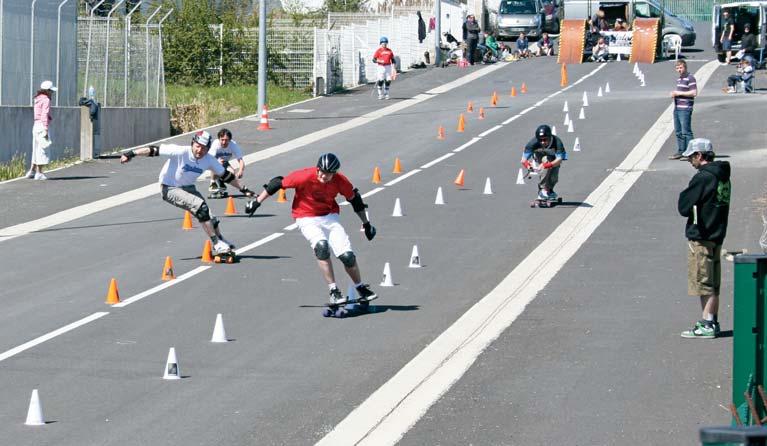
SUMMER 2010 CONCRETE WAVE 47
Michel Dupont (red shirt) edged Petr Novotny (white shirt) for the men's overall title at Mèze.
Photo: Vincent Langlade
Sandrine Ferreira, overall women's champion, Mèze. Photo courtesy of Guillaume Saint-Criq
A SKATE RAMP in the Peruvian Desert



 BY JAMES GALLETLY PHOTOS: ALICIA FOX
BY JAMES GALLETLY PHOTOS: ALICIA FOX
Spreading the gospel of skateboarding to far-flung, less fortunate places is, without a doubt, a noble endeavor. Skateboarding provides kids with a chance to channel their youthful energy into a creative activity. But just how hard is it to rock up to a foreign country with a skateboard and a hammer and make things happen? Ollie and Hannes are two guys who gave it a go, in Peru.
Hannes is a skater from Germany. Ollie, on the other hand, had never skated in his life. The two met in while volunteering in Huanchaco, a small surf town on the Peruvian North Coast. When Hannes discovered Ollie was an engineer, he asked him to help construct a skate ramp.
They built a mini ramp on the outskirts of Huanchaco, in a poor neighborhood called Cerrito de la Virgen. The families there get by on very little, and the concept of having a recreational facility like a skatepark just wasn’t part of their world.

Hannes and Ollie’s motivation for building the ramp was simple: They wanted to give some kids who genuinely had nothing, something. The project took just under a month to complete. Sometimes, things fell into place. Other times, it took a lot of perseverance, and a sense of humor, to get the job done.
After the last screw was in and kids had descended on the ramp, I sat Hannes and Ollie down to find out about their Peruvian ramp-building experience.
48 CONCRETE WAVE SUMMER 2010 CONCRETEWAVEMAGAZINE.COM

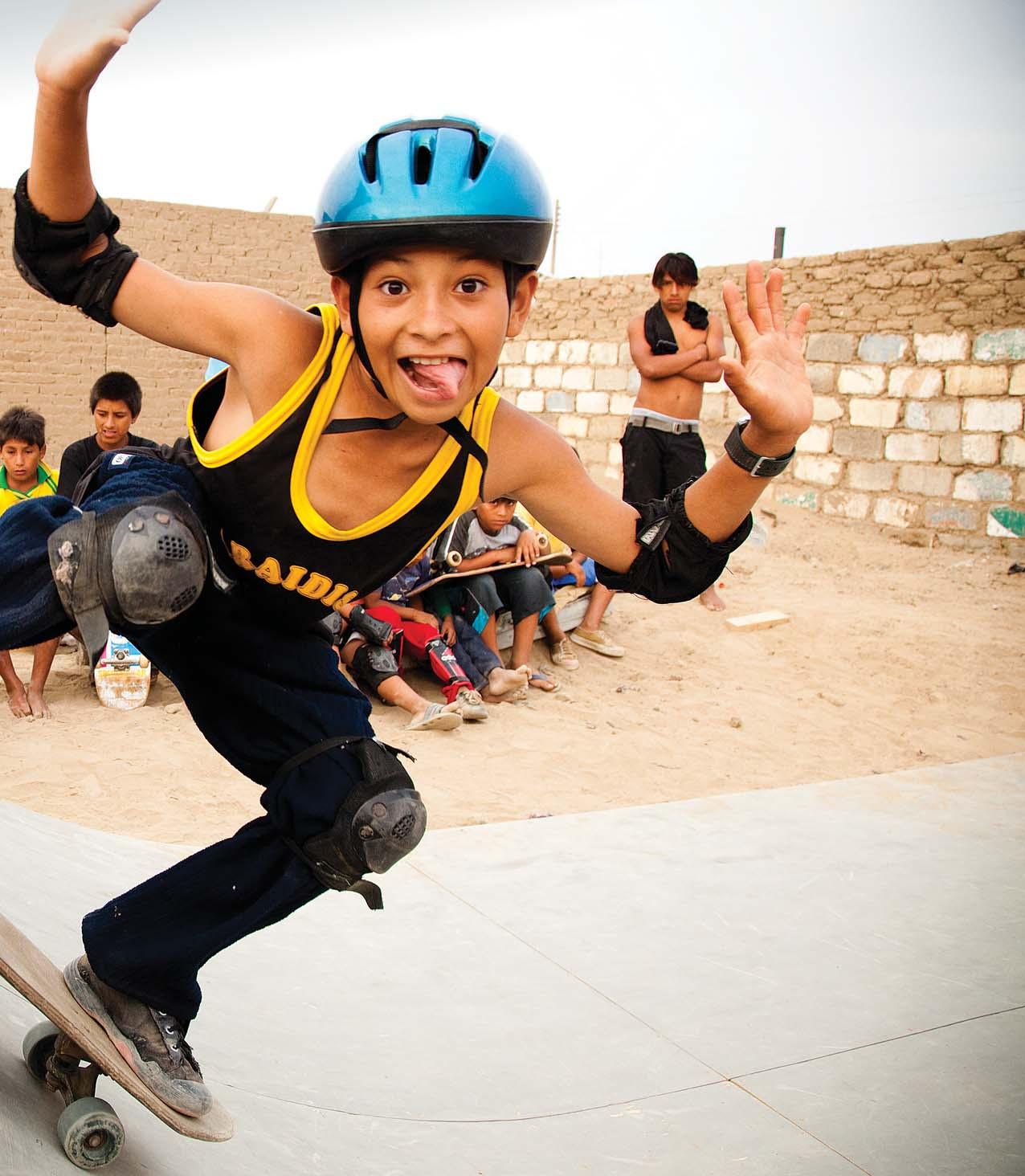
SUMMER 2010 CONCRETE WAVE 49
How did the idea to build a ramp come about?

Hannes: I had the idea while skating with Juan Carlos*, in Trujillo. I wasn’t sure how to build it, but then I met Ollie. After that, Juan Carlos suggested we build it in Cerrito de la Virgen because the families there are really poor.
(*Author’s note: Juan Carlos runs a local surf shop in Huanchaco and gives free surf lessons to the poorer kids. Trujillo is a major Peruvian city about 45 minutes by bus from Huanchaco.)

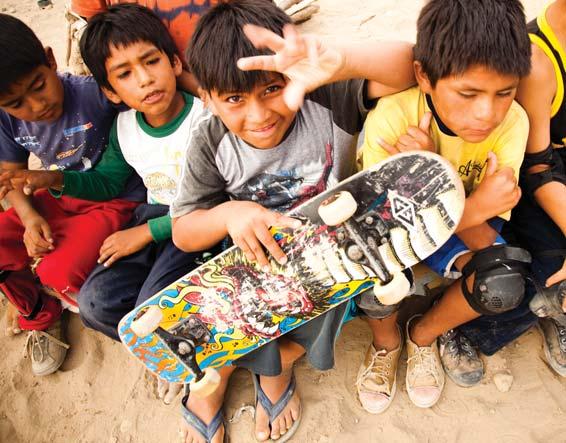
What’s the skatepark in Trujillo like?


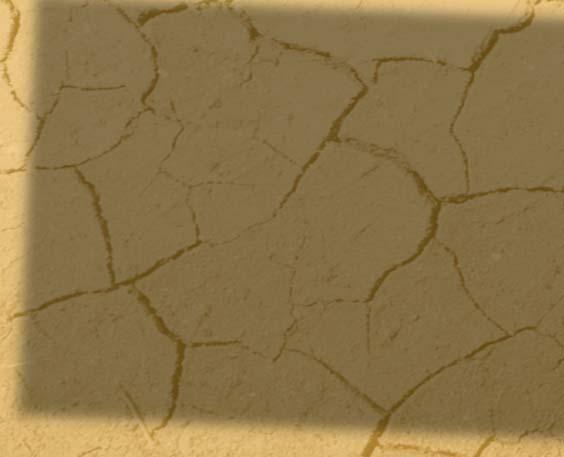


Hannes: Impressive. It’s a big new skatepark, all cement and proper steel coping. I saw maybe four guys who were sponsored. You could see they were already on the same level as Europe or America. You have to pay to enter — one Sol (30 US cents). And there is always a guy watching the park. If you fall, he comes and checks you are OK. It’s really funny.
Are there any other tourists skating?
Hannes: No, all Peruvian skaters. It’s really well used.
Neither of you had any intention of building a ramp before you left home. So after the plan was hatched, what was the next step?
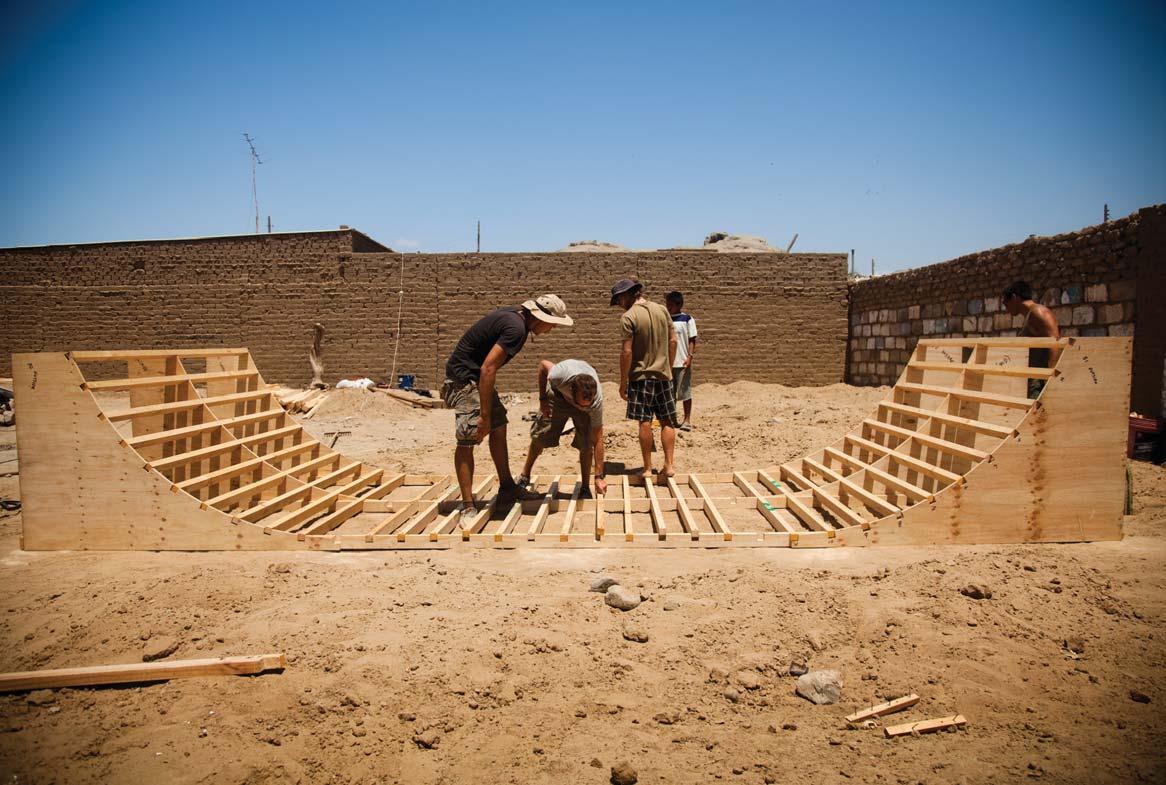
Ollie: We went and looked for a site. Then we looked at a couple of websites and used Hannes’s memory (of skate ramps at home) to draw up a design.

You had to redesign the ramp at one point. What happened there?
Ollie: (Laughs.) Yeah, if we hadn’t checked it (the design), it would have been a death trap for those kids. The original design used a radius of one meter, with a quarter circle at each end and vertical where you drop in. Someone Hannes knew of in Germany is a professional ramp builder. He told us that the perfect radius would be more like two meters, and he tweaked our design a bit.
50 CONCRETE WAVE SUMMER 2010
Hannes and Ollie’s motivation for building the ramp was simple: They wanted to give some kids who genuinely had nothing, something.
Hannes: I had skated on his mini ramp once (in Germany) but I didn’t really know him; it was just through friends. A friend took our design to him and then sent me the changes. He was cool; he really liked the project and was eager to help.
You are both stingy travelers, so how did you pay for it?


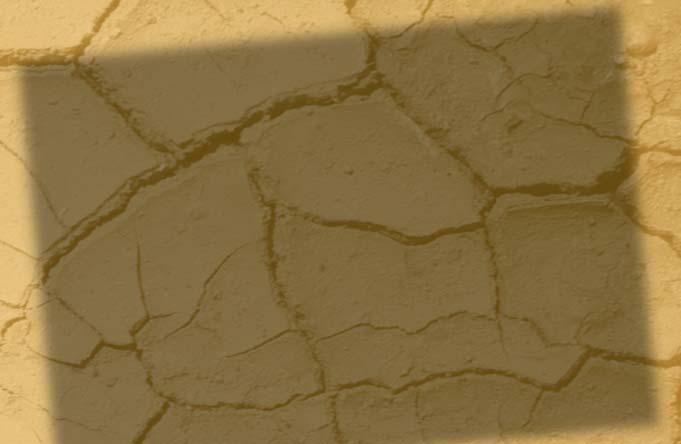


Ollie: I thought we might have to pay for it ourselves. It was a bit of a gamble because we had committed to the project before we knew how to pay for it. Hannes set up a blog for the project, and I wrote about it on my blog. We just asked people to donate. Within a week we had more than enough money.
Hannes: We also sent e-mails to all our friends so it was more personal. One of my friends was selling cakes at university to raise money, and at the restaurant where I used to work they put a donation tin on the counter.
All told, the ramp cost just over 3000 soles (approx. $1000 US). The boys actually had some money left over. Some of this was used to throw the kids a barbeque, and the remainder
will be used to buy skate gear for the kids and maintain the ramp.
Building the ramp was an education in “Third World” logistics. Tell us about that.






Ollie: We were borrowing tools, power and water from the community. Sometimes we went up there and if someone wasn’t home we couldn’t work. There is no running water, but one guy has dug a well. One day the guy went out, so Hannes had to go around trying to

SUMMER 2010 CONCRETE WAVE 51
Theramptookonemonthtobuildandcostapproxiamately$1000.Timeandmoneywellspent.
 Dropping in without shoes but with a keen determination.
Dropping in without shoes but with a keen determination.
find water. He got given some water, but not until he necked a beer in front of the people.
You had to pay to use people’s water or electricity, didn’t you?
Ollie: Yeah, Juan Carlos explained to us that they lend you the stuff and then come and ask you to pay for it later…they haven’t got much.
How much work did you put in?
Ollie: We were putting in five hours Monday to Friday and longer on weekends — maybe 10 hours. It was every day for close to four weeks. We had some help, though; once the ball got rolling more people turned up. We had 15, maybe 20 locals and travelers helping us.
Hannes: I have learned a lot from Ollie, but he really needs to slow down. He had me working New Year’s Day.
Ollie: He didn’t do any work. He came in and he was feeling ill. He went to bed and came back when I had finished.
Did you ever want to turn back and just go to the beach?
Ollie: Yeah, when I was sick with food poisoning and I was working on the ramp every day.
Hannes: I reached a point where I just wanted to go to bed and not work anymore. That was when I had the “Huanchaco flu.”
You were both sick?
Ollie: I was laughing at Hannes because one day he really had to “go,” and he ended up having to
use a cement bag for paper. That stuff can really make you itch. And I thought he might make some cement danglers. (Laughs.) I shouldn’t have laughed because a few days later I had the same bug strike me down and had to use a cement bag.


Hannes, weren’t you also working with an injury?
Hannes: Yeah, my wrist. I injured it skateboarding, right before we started building the ramp.
Didn’t you injure the same wrist the day the ramp was finished?
Hannes: Yeah, after the second time I just held out the board to Joel and I said, “Take it away from me.”
Hannes donated his board to the local children. Joel was one kid who came every day to help build the ramp. Taking part in construction had a profound effect on him. He developed a strong sense of ownership, and now is the most dedicated skater and makes sure the other kids respect the ramp.
One of the donations was made on the proviso that Ollie skate the ramp when it was completed. He had a few cautious rolls up and back and then a glorious dismount.
What was it like to finally skate the ramp?
Ollie: Nerve racking — I don’t think it’s for me.
Hannes: It was awesome! I couldn’t believe it. We built this ramp and it worked... But the best part has been the kids. They all share the boards and help each other. I really didn’t expect that. It is amazing; in Germany you would never see these young kids all sharing.
What about the kids? How did they go skating?
Hannes: In the beginning the kids were relying on me to push them: “Hannes, push, push.” That’s the only English they knew. Now they are really good. There are five kids who can drop in.
Was it difficult to build a skate ramp in Peru?


Ollie: No, only the time we did it in was difficult. Hannes: No, it took a lot of work but it wasn’t hard.
Would you do it again?
Ollie: No… Maybe, but no time soon.
Hannes: Yep, for sure.
What advice would you give to someone who wanted to build a ramp like you did?
Ollie: If you were planning for it, three months in advance, it would be much easier. You could find a design, raise the money and probably contact someone to find out where you could prepare and build it. If you do all that first, building a ramp is not a hard thing to do.
Hannes: Don’t think too much about it. Just do it. It’s like skating: If people think too much about it they think “Oh, no, I can’t do it” — but you can. Just go.
Hannes and Ollie were volunteering through an organization called Otra Cosa Network. The ramp was an extra project. It was entirely their initiative and done on top of other volunteer commitments. What’s needed now are more skaters to come down to teach and inspire the kids by skating the ramp. Any donations of equipment, new or used, would also be helpful. The Otra Cosa Network can be contacted to help organize the logistics of sending donations and about teaching skateboarding via www.otracosa.nl.
For more info visit the project’s blog at introductiontotheproject.blogspot.com ¶
SUMMER 2010 CONCRETE WAVE 53
Ollie and Hannes with the current and future skaters of Peru.
ALL IN THE FAMILY
AN INTERVIEW WITH ORIGINAL SKATEBOARDS OWNER SCOTT IMBRIE

MB:What inspired you to start Original?
SI: Both Brad (my brother and founding partner) and I dropped out of high school due to (we feel) the failure of that system to accommodate our interests or acclimate to our learning goals. Original was inspired by our need to learn (actively with focus), while at the same time creatively contributing to the things we care most about.
MB: I sense that family is a big part of your company. Can you share with us some insights into this?

SI: Family and our friends, who are collectively our extended family, are possibly the biggest parts of Original. I work with my dad, brother and the people I consider my best friends every day. That is probably what I am most proud of.
By MICHAEL BROOKE | Photos: CHRISTOPHER VANDERYAJT

54 CONCRETE WAVE SUMMER 2010
Clinton, admiring someone’s new wheels.
(Top photo); Clinton, Andrew, Brendan, Steve, Joe and Chelsea in the Original shop.
MB: What have been some of your best memories so far?


SI: My favorite memory through the last eight years has to be our first video trip. We shot our first series, “Cadillac Mountain,” in November of 2005 with the idea to massdistribute the video via the Internet. The only problem was that YouTube wasn’t invented yet (not until 2006). We had no idea how we would get an audience, and streaming video was too expensive, but we went and shot it anyway.
The first morning we woke up at 3 a.m. and got up the mountain to capture sunrise. That sunrise, standing at the top of the mountain with my best friends, was really the first time I felt that we were really doing something extraordinary. At that point I finally felt we had our true direction for Original.
don’t waste your time. Since we are neither big (nor have we been) or pretending, that has never been a problem for us. I think it also helps that we as owners are as excited to travel and ride as our riders. That’s not something you see very often and really helps set us apart, and also helps YouTubers connect with us as people as opposed to connecting to a company.
That trip has more of my best than most years before it. Thinking about that excitement still gives me chills.
On the video side, not having an avenue for distribution of the end product really deprioritized editing; the final video wasn’t actually finished and live until we found that distribution source (YouTube, thanks to Adam Squared) two full years later in 2007. Seeing the cut for the first time (in 2007) made me remember how right the trip felt, and we immediately refocused on our video inspiration that we found that morning.
MB: To what do you attribute your success with YouTube videos? You’re at over 10 million views and counting!


SI: I think really our own excitement to be filming, riding, traveling and experiencing is the key.YouTube is all about authenticity. If you are pretending to be big or talking yourself up,
MB: Original is based on the East Coast. What type of challenges and opportunities does this mean for your company?
SI: The East Coast (collectively) is huge, I would say our biggest challenge was (and still is from time to time) driving up and down the coast knocking on every skate, surf or snowboard shop door to get our boards and trucks out there. Brad and I pushed the brand on the road ourselves (and together) for the most part, but the drive from N.J. to Florida or N.J. to Maine is a killer. We did make some great friends at those skate shops, though.
SUMMER 2010 CONCRETE WAVE 55
Chelsea watching you watching her.
Nick Patrick making magic. Archie sleeping.
Brad photographing the new Apex 37.
As far as opportunities, going back to the authenticity I talked about with YouTube…it’s good to be different. No one dreams of starting a skateboard company and then basing it out of New Jersey; thinking about dreaming that sounds kind of ridiculous. We chose to stay here for all the right reasons: friends, family, beautiful hills and epic hurricane surf in the fall.
Besides, there have been plenty of films about skateboarding based in California.Why not create something a little bit different?
MB: What are some of the reactions people have to your trucks?
SI: Reactions to the trucks... Love/hate for sure. But just like anything else, it’s all about context. I believe that there are no trucks in the world that will outperform an Original doing the things we do. So if you want to do what you see us doing in our videos, you will like them. Just remember, Original’s aren’t for speedboarding/downhill…yet.
What have been some of the obstacles you’ve had to overcome?
SI: Manufacturing.You would not believe how hard it is to pay someone to properly press several layers of wood and several layers of fiberglass together correctly, or even just sev-

eral layers of wood without the fiberglass. To do something right sometimes you have to do it yourself, or so they tell me.
MB: Does it disappoint you that the majority in the skate industry still can’t comprehend longboarding?
SI: The skate industry totally comprehends longboarding, or they would tell you they do. At the same time, what longboarding is has changed so much in the last year alone; who really has a handle on it, anyway? A cruiser skateboard is just a longer skateboard, but a skateboard that is just longer than a shortboard will never be considered a longboard again if I have anything to say about it.
MB: Where do you think things are headed with respect to the longboard industry?


On a technical/development basis I know that things here at Original progressed more in the last six months than they have in the previous seven years. Since I know at least a few companies who are clearly as dedicated as we are to bettering our equipment, I can only imagine the same thing is happening around the world.
If we don’t see some groundbreaking innovation that changes the industry utterly in the next two years, I will be shocked. That said, we at Original, along with the very talented people at Loaded, Landyachtz and Rayne, would have to come up very short on our collective jobs in the next two years for that to happen.
MB: Any final comments?
SI: Dr. J (the basketball player) once said, “Being a professional means doing the things you love to do on the days you don’t want to do them.” The longboard industry is going Pro. So long as we can all continue to ride, even on the days we don’t necessarily want to, I think we will stay grounded and focused. Riding has always been the key. Go longboard. ¶
56 CONCRETE WAVE SUMMER 2010 CONCRETEWAVEMAGAZINE.COM
Jet fuel, please.
“Original was inspired by our need to learn (actively with focus), while at the same time creatively contributing to the things we care most about.” — Scott Imbrie.
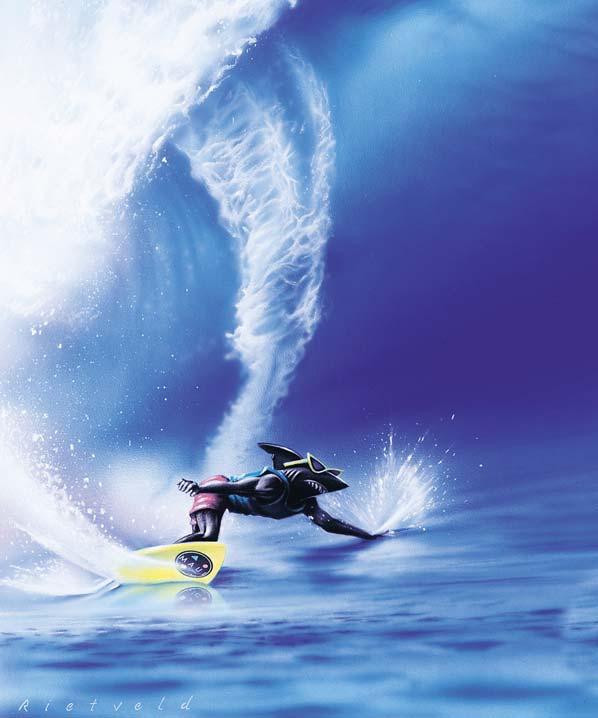


SUMMER 2010 CONCRETE WAVE 57
& SKATE SHOP SURF & SKATE SHOP VENICE BEACH VENICE BEACH SURF & SKATE LESSONS, SURF & SKATE LESSONS, surfboards, skateboards, water sports, boardshorts, accessories, flip FLOPS & SHIRTS surfboards, skateboards, water sports, boardshorts, accessories, flip FLOPS & SHIRTS OPEN 7 DAYS A WEEK CALL 310.392.6284 OR VISIT WWW.MAUIANDSONSRETAIL.COM 1415 OCEAN FRONT WALK, VENICE, CA 90291
SURF

58 CONCRETE WAVE SUMMER 2010
CANE & ABLE
AN AUTOBIOGRAPHICAL ESSAY BY CAMERON BLACK

PHOTOS: RUDY PENA JR.
Iascended the stairs, skateboard in hand and fear in my heart. I was headed for the large wooden beast. My sunglasses slipped down my nose from sweat as I drew near the top. My hand that was on the rail leveled out, and I found myself there. I shuffled my feet, sweeping them, looking for the edge. Upon finding it, I paused, holding my skateboard. I felt the smooth surface of the board, my hand sweat against the Industrial trucks and ATM wheels. I placed my board on the coping, my front and back wheels leaning out over the drop, and then sat down. I ran my hand down the smooth wood, feeling the steep descent, calculating the crouch and angle in my head. It was now or never. My five years of street skateboarding had never prepared me for what I was about to try. My friends told me I would be the first person in my position to attempt this, but that did not matter to me. All that mattered was that this was the next step in being a skateboarder, and continuing my passion.
I placed my back (left) foot firmly on my board. Holding it steady, I then stomped down with my right foot. Suddenly, the world I knew so well drastically changed. Gravity was put into action, and defied in the same moment. I could feel my board vibrate smoothly under my feet as it sped downward. Almost at once, the large wooden beast pushed me in different directions, causing me to swerve and almost lose balance. I could feel the wood forcing me this way and that. I could sense when I reached the other side and began rising with the board, increasing speed. The wood pushed me upward, and for a brief second, I was frozen in midair, before gravity took over once again. I was pushed downward, where my board rolled back and forth, losing momentum, until it came to a stop. I stepped off my board, feeling accomplished after successfully riding my first halfpipe. I took my skateboard in one hand and my blind man’s cane in the other, tapping my way toward another ramp to skate.
“BLIND KIDS DON’T SKATEBOARD”
Twelve years of my life had gone by, and I had finally arrived at the crossroads — the crossroads where one chooses to continue on the path that they are on, or to branch off in a different direction, for either better or for worse. I began to see the choices form in front of me when my grandfather — Poppy, as I called him — died. For years I had been picked on and teased, for I was born blind. I was never accepted by other kids. My grandfather was my only close friend, and after his death, the choice came to me — the choice to continue to be teased, remaining nothing but a
blind boy, noticed by no one, or the choice to take a different path. I made that choice just before my 13th birthday. I still ride that choice to this day, and will never stop.
When I was 12 years old, in mid-May, I was close to graduating from the fifth grade. My school was about two blocks from my house, and an easy walk, so I walked to and from school each day. Usually these walks were uneventful, but one day stands out in my memory. That day, while walking home, I was stopped by a few of the local skateboarders. Each was around my age, but they all were bigger than me. The skaters picked on me, calling me names, and most of all, pointing out what I would never be able to accomplish. One of those things was to be a skateboarder.
“Blind kids don’t skateboard,” they said. After teasing me , they skated off, leaving me alone and scared. Afterward, whenever I heard the sound of skateboard wheels, I hid, not wanting to be found by another skateboarder.
Two months later, my other grandfather, my Gran Don, took me out for my 13th birthday. He took me to a toy store, to let me pick out what I

SUMMER 2010 CONCRETE WAVE 59
Life is like a game of poker. You are dealt a hand, but unlike poker, your hand is as good or as bad as you decide for it to be.
wanted for my birthday. I was on my way out of the store, having found nothing, when I bumped into something, knocking it over. I reached down to pick it up, and my hands moved over a long piece of wood, with sets of two wheels at each end. I had never felt one, but I knew what it was. That afternoon, I took the skateboard home, and began to practice on my back porch.
I had to get to know my board — to know everything it would and wouldn’t do, depending on where I put my weight and what I did with my feet. After learning the mechanics of skateboarding, I ran into a problem. I lived in a busy neighborhood, complete with trash cans, cars, mailboxes and an infinite number of other obstacles. I could not see any of these things, so how could I possibly skate around them?


LEARNING THE TERRAIN
One night, cane in hand, I walked my neighborhood. I spent long hours bending down on sidewalks to feel cracks, recording them to memory. I crouched in driveways, studying the angles, marking the positions of trash cans, mailboxes and cars, committing them all to memory as well. By the beginning of my sixth-grade year, I had a very detailed 3-D map in my head of my neighborhood, enabling me to skate it blind. Other skaters were out during the day, so I ventured out after the sun set, to rule the streets at night. I skated by memory, hearing and studying the textures of the ground under my feet and board. I skated low to the ground, and would run my hands on the concrete as I skated, feeling where I was going, feeling my speed. I found that while I was crouched, I had a better sense of the world around me and the concrete I was carving. It enabled me to feel the movements go through my board, so I could make the proper maneuvers. I later learned that this is an actual skate style called the “Z-boys style,” where the skater puts their hands on the ground as they skate, mimicking surfing moves. I used my hands and my crouching as my eyes as I skated. I had no light and I needed no light. Those who did not know my name called me “The Blind Skateboarder.”
The years passed, and my passion as a skateboarder grew. I skated to school, to friend’s houses and any other chance I could get. The skates I enjoyed most were the ones I shared with my friends Cayle Newton and Corey Calvert. Cayle lived at the bottom of a huge hill, where we used to have downhill races and courses. In the courses, we would put cones in the middle of the road and swerve around them as we skated. For me, they would put beepers inside each of the cones so I could hear and skate around them. We would set up small wooden ramps at the bottom of the hill to launch off. In Cayle’s driveway, we would mess around to the sounds of rock ‘n’ roll coming out of the old dusty CD player in Cayle’s garage. We weren’t that good, and really didn’t care to be, because we were having fun skating to the sounds of Led Zeppelin’s “Houses of the Holy” album. Life was simple. Very few people knew of me, so I got almost no attention for what I was doing. This was fine with me. Back then, and to this day, I skate for the passion, and I skate for me. But the summer I was 16, for the first time, attention did begin to come my way.
GETTING NOTICED
Starting when I was 7, I had attended Camp Barnabas, a summer camp in southwest Missouri for children with disabilities. Now that I was approaching 17, I was nearing my last year at Barnabas
as a camper. My 10th year at camp was also the 10-year anniversary of the camp. That year the TV show “Extreme Makeover: Home Edition” came to the camp to make over the home of the owners, Paul and Cyndy Tease.
In order for the show’s host Ty Pennington and his crew to fix up their home, Paul and Cyndy had to depart for a vacation. Before leaving, Cyndy pulled me aside and spoke to me sternly.
“There is to be no skateboarding while we are gone and ‘Extreme Makeover’ is here,” she said. “Do you understand, Cameron?”
I smiled and nodded my head. “Yes, ma’am, my wheels won’t touch the ground,” I said.

60 CONCRETE WAVE SUMMER 2010
Cameron Black, a.k.a. The Blind Skateboarder: a study in perseverance and concentration.
But while the cat’s away, the mice will... well, they will skateboard.
The next week was spent skating around the construction, doing interviews with the “Extreme Makeover” crew and consequently gaining a spot skating on national television. While talking to a few members of the crew, I discovered that Ty himself used to skateboard, which gave me an idea. I found Ty one day and asked him if he would like to skate with me later that evening. Ty agreed, and word spread quickly that I was going to skateboard with him on the camp’s tennis courts. When the moment arrived, people surrounded the tennis courts and stood peering over the dining hall deck. I rolled a spare skateboard over to Ty and tossed him a helmet.
“We’re going to do follow the leader,” I said to Ty. “It’s simple: I’ll lead and do tricks. Just follow my lead and do the tricks I do.”
Ty strapped the helmet to his head and placed his feet on the board. I shot down the hill, and upon leveling out on the courts, I did rapid kickturns and wheelies, Ty right behind me. I did 360s around poles, and Ty followed. Finally I swerved around to the left and aimed myself for the wheelchair ramp that separated the upper and lower tennis courts. I crouched low in my favorite stance and coasted down the ramp. After clearing it, I skidded to a stop and jumped off my board, as Ty stopped behind me. He got off his board and shook my hand.
“Pleasure skating with you, sir,” he said.
“Same to you, Ty,” I replied, as applause sounded around us.
At the end of the week, Paul and Cyndy arrived back at camp from their trip. The first time Cyndy saw me, she walked straight over to me.
“I heard there was quite a bit of skating while I was gone, Mr. Black,” she said. I smiled and shrugged my shoulders.

GRAN DON’S GIFT
Unfortunately, I returned home to be met with tragedy. My Gran Don, who had bought me my first skateboard, had been diagnosed with lung cancer. The doctors gave him only a few months to live. Starting then, I made it a point to skate to his house every single day to spend time with him. There were some times when he had enough energy to talk, but other times he would just fall asleep in his chair.
While this was all going on, I landed my first sponsor, a local skate shop called Hi Performance Board Sports, owned and run by a man named Chris Johnston. Chris and I became good friends over the next few years. He spread word of the Blind Skateboarder, and sometimes even got me free gear.

The school year went by, and it would be my last year in Norman, Oklahoma, where I was born and raised for 17 years. At the end of the school year I would move to Missouri. In the meantime, I continued skating for Chris and visiting my Gran Don. That next summer I took first place in a talent contest at Barnabas. Soon after that I would return to Oklahoma to see my grandfather for the last time.
We had received word that he was in the hospital and had been given only a few days to live. I stayed at my friend Corey’s house, and one night in August I went and visited my grandfather in the hospital. I walked over to his bed and stood at his side, telling him all about skating for the shop, the talent contest and everything that had been going on. He made no sign that he could hear me or understand what I was saying. Finally my dad walked in.
“Cam, let’s let Gran Don get his rest,” he said. I nodded and squeezed my grandfather’s hand as I turned to leave. I was at the door when I heard Gran Don speak. I went back over to his bedside so I could hear him.
“I’m so proud of you, Cam; keep skating,” he said.
That was the last time I spoke to my grandfather, and the last time I ever saw him.
The next afternoon, while I was skating some of the old hot spots around town with Corey, I got a call from my mom, telling me that Gran Don had died early that morning. Corey came with me to attend the funeral, and we sat, listening to people talk about my grandfather, Don Black. You don’t often expect to hear your own name come up in a funeral, except in the list of relatives, so you can imagine my surprise when they began speaking of me. They talked about some of the last words my grandfather said about his relatives before he died, and I was last on the list.
“The doctors only gave me a couple of months, but my blind grandson skateboarded to my house every day to visit me.” They said my grandfather had said that it had been my own courage and strength channeled into him that made him hold out for so long. I had not cried through the entire funeral, but I then shook violently from trying to hold back tears, and I did not succeed. After the funeral, Corey and I skated around the old neighborhood, including skating by my grandfather’s old house. Doing so seemed like the right thing to do at the time.
NEW HOME, NEW FRIENDS, NEW TERRAIN
I said goodbye to my best friend Corey, and my family, my skateboard and I returned to Lake of the Ozarks, Mo., where I would finish out my last two years of high school. Unfortunately, anyone who has ever been to this part of Missouri knows there is very
SUMMER 2010 CONCRETE WAVE 61
little skateboarding to be done there, what with the winding country roads and gravel parking lots. There was only one skatepark in the whole of the lake, and it was down an old country road, next to impossible to find and about 45 minutes away from pretty much everything. I did what I had to do to skate, though, and that meant employing the driving of my newfound friend Derrick Jeffries.
Derrick and I met once I moved up to the lake and started going to school there. Derrick is a very nice guy, and supportive of skating, but unable to do it himself. He is good at understanding the technical side of it, though; he knows how angles work, and how a trick should work if done properly. I ended up making Derrick my unofficial videographer. We made skate videos together, with my skating, and Derrick’s skills with a camera, and a video editor on his computer. Although Derrick does not skate himself, he won’t hesitate to tell me when I suck, and I’m OK with that. For the next two years, I hung out with Derrick, and on the occasions I was able to talk him into it, we would spend all day at the lake skatepark. It was just a quarterpipe, a halfpipe and three small ramps, but it was better than nothing.
Derrick has definitely contributed to my skateboarding, and not just with his knowledge of physics and video editing. One time we arrived at the skatepark to find it completely soaked in rain water, but we didn’t give up. I tried skating in the wet areas anyway, while Derrick stole a large squeegee from a nearby shed and cleaned all the water off the concrete and halfpipe. Another time, pretty recently, we ran into a similar problem. The ramps had been dried by the warm morning sun, but the coping of one of the quarterpipes was still wet, and we didn’t have anything to dry it with. Derrick got up and sat on the edge of the coping and scooted his butt across the coping until it was dry.

After graduating from high school, I attended a community college not far away from home. I don’t have much to say about my academic experience there, but it was my first exposure to a completely concrete skatepark, and not a half bad one at that.
It had many ramps, three halfpipes, pyramids, banks and a small bowl that my friends and I nicknamed the Cereal Bowl, because it was perfectly round, and rather small. That park was where I really discovered my personal skate style.

SKATING IN THE DARK
I am not an aggressive skater. My style is very relaxed and laid back, much like my own personality. I try to make my motions and moves be very fluid. One of my friends once described my style as relaxed and yet incredibly focused at the same time. I love the relaxed feeling I get when going up and down a halfpipe, or when kickturning up and down a quarterpipe. When you do those things as a blind skater, it gives it a completely new feeling, one that I honestly can’t find the words to properly describe. It is something you have to experience, which is what sets my skating apart from any other skater; it is something only I can experience.
The year went by. My friends and I skated our concrete heaven day in and day out, but we usually cleared out by late afternoon, when the park became overrun with other skaters. One day, when the park had become so congested we couldn’t skate, we kicked up our boards, and crammed into my friend Tony Maldonado’s car. Tony hadn’t skated in years and he had decided to start riding again. The problem was there wasn’t a decent skate shop anywhere in
town. So we ended up going to Walmart, buying Tony a board and getting yelled at as we tried out each board down the aisles.
I don’t remember if was Aerosmith or Van Halen that was blaring in Tony’s car that night when we drove to Burger King. As we drove, we discussed the places around town we could go skate, like the back of the Kmart parking lot, or behind the old church.
“Why don’t we just go back to the park tonight?” said Tony. “The street lights would be enough light to skate, and Cameron doesn’t even need the light.” So it was agreed: We would return at night, for the park was open 24 hours a day — to our knowledge, anyway.
We returned that night, and the park was abandoned. The halfpipes and the cereal bowl glowed in the moonlight and far-off street lights. Our favorite spot to skate in the park was an area we called the Playpen. The Playpen was a pyramid in the middle of a wall of quarterpipes that went all around on three sides, and opened up to the rest of the park on the fourth side. There was graffiti sprayed all over the ramps and on top of Enjoying some Canadian snow…and hills!
62 CONCRETE WAVE SUMMER 2010 CONCRETEWAVEMAGAZINE.COM
Photo: Henrique Stein
Cameron proudly displays his new Churchill deck.
the pyramid, which was decorated with black and white checkerboard. Some of it was very well done and artistic, some was profane, and some was just funny, giving us a good laugh as we skated over it. We skated, launching off the top of the pyramid, doing lazy kickturns of the walls of the quarter pipes and manuals up and over the top of the pyramid.
It wasn’t long after we began our night skate that we were interrupted by a very bright light shining down into the Playpen, and a voice rang out to us in our skateboarding sanctuary.
“All right, skaters, come on out.” One by one we ran up the side of the quarterpipe toward the cop car. I went over to the cop to talk to him.
“Are you aware that you’re not allowed to skate here after dark?” he asked.
“No, sir; we weren’t, actually,” I replied. He asked why we were here anyway, and I explained to him that, being blind, I have a hard time skating with a lot of other skaters. The constant movement and noise confuse me, and I don’t want to hit or hurt anyone because of my lack of vision. Since I do not need the light, I come to skate at night.
“Well, I understand,” said the cop. “As long as you don’t cause any trouble, I’ll tell the other officers to leave you alone.” I shook hands with him, and he got into his car and drove off, leaving us to continue our night skate session. From then on, I ventured out at night to the park as the only skater who didn’t require light to skate.
That fall I made the front page of the town’s local newspaper, and that summer I made my first appearance in a magazine.
Now we come to me in the present day.
HERE AND NOW
Today I am on the summer staff at Camp Barnabas, and I love serving the campers. During that one day of the week when no campers are there, though, I tear down the hills and the tennis courts on my skateboard. While not at Barnabas, I attend Missouri State University. I skate all over campus, from class to class, with my blind man’s cane held out in front of me. I don’t usually skate with a cane, and don’t need it to skate, but it makes others aware of my blindness as I skate, coasting down the sidewalks and weaving between students and staff. For an English paper, I wrote on skateboarding, and called the library for the blind, asking them to send me any book they had in Braille on the history of skateboarding.
A week later, “The Concrete Wave: A History of Skateboarding” by Michael Brooke was inside my mail box. Mr. Brooke left his e-mail address in the book, so I decided to contact him and tell him in a nutshell the story I have just told you. Michael took to my story quite well, and decided he wanted it in his skateboarding magazine.
Not long after that, I began working with Troy Churchill, who gave me the board I am riding now, and Scott Imbrie of Original Skateboards, who gave me my first longboard, which I am now quite fond of.
I have appeared in the Missouri State University newspaper and am well known across campus as The Blind Skater. At night, when the campus is silent, I put on my headphones and pump out Led Zeppelin, Van Halen, The Who and other classic rock bands, while I skate through the darkness.
Now I stand upon a six-foot quarterpipe, my board positioned over the edge, preparing for the drop in. In front of me lies a paradise of wood, metal and concrete — a world where gravity is defied and put into action at the same time; a world made up of slopes, ramps, drops, rails, angles and straight shots. But it is different for me. I have taken the sighted world, the world of the skateboarder, and combined it with the world of sounds and shadows, the world of the blind. I have turned it into a world that only I know, a hybrid of both worlds that is my day-to-day life. I bring the voices of my two grandfathers to mind as I prepare to drop in: the voice of my Poppy — “You be careful on that skateboard, boy; you’ll bop your noggin” — and the voice of my Gran Don — “I’m proud of you, Cam; keep skating.” With these in mind, I stomp down on the board, shooting down the quarterpipe, into my own world.
There have been many successful blind people. There has been Ray Charles and Stevie Wonder. There have been blind men who program computers and even climb mountains. And then there is me. I’m Cameron Black, and I’m the Blind Skateboarder.
The End (for now...)
If I may, I would like to take just a few more minutes, to thank those who have influenced or helped me in my life and with my skateboarding.
Angel Black: My dear mother, who has always been able to perfectly mix nurturing with encouragement, taking care of me and yet supporting me as I go out into the world.
Todd Black: My awesome father, who has always used tough love, but has never stopped loving me as his son, always pushing me to do my best.
Alexis Black: My sister, who also uses the tough-love tactic, but has always looked after her little brother.
Melton Demastus and Don Black: My two grandfathers, who have encouraged me as far back as I can remember.
Cayle Newton: My longtime best friend, Cayle, standing at 6 feet 5 inches and 250 pounds, now deems himself too big to skate anymore, but sits on the side of the halfpipe playing his guitar as I skate.


Corey Calvert: My other longtime best friend. Out of all the pro skaters in this world, I will always choose to skate next to Corey Calvert.
Derrick Jeffries: Derrick is a faithful best friend and is never afraid to push me to do better; he believes in me, and many times has used the phrase, “That sucked. Do it again.”
Emma Rodgers: Behind every great man, there is a great woman, and behind me is my girl friend Emma, with her constant support, encouragement, inspiration and love.
I thank you all for your support, and I look forward to seeing what is in store for the future.
With that being said, I’m going for a skate. ¶
SUMMER 2010 CONCRETE WAVE 63
Cameron’s response upon hearing what the headline of this article would be.
INSIDE THE WORLD OF ULTRASKATERS

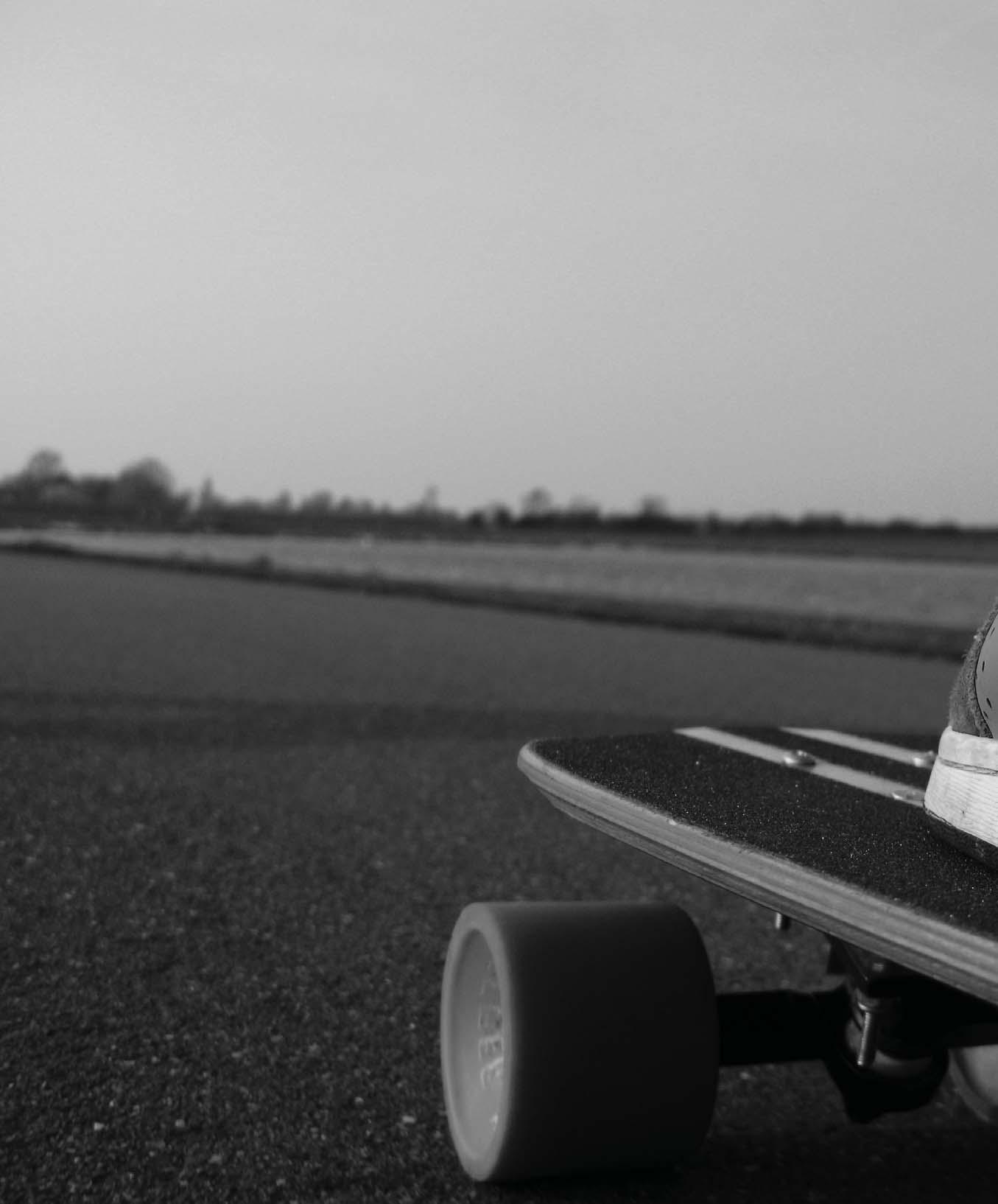 BY JAMES PETERS
BY JAMES PETERS
64 CONCRETE WAVE SUMMER 2010
Editor's Note: At Concrete Wave we have made a commitment to feature all types of skateboarding. We know that skateboarding can be a hazardous activity and we always caution you to think before you skate. This article explores the world of ultraskating — pushing enormous distances (i.e. 100+ miles) in a single skate session. If this world appeals to you, embrace it, but please remember to put safety first.
WHY?
The question I’m asked most often about ultraskating is the trickiest one to answer. In delving into the psyche of skateboarders who’ve been drawn to this challenge, the complexity is obvious; we each have a unique history, a different set of values, drives and decision-making processes. So the answer to “why” exists only to the individual, and only that person can explain what compels them to push their boundaries. However, one thing we all agree on is that the mind trumps the body every time.

Skateboarding 24 hours straight takes the same kind of commitment as your first drop into a pool. You throw your front foot down and go. It’s a huge leap into the great unknown, where you find strength inside yourself you never knew existed. In the ultraskate, you keep dropping in, you keep going, and then the puzzle is how to dig deeper and figure out what keeps you going all day. Your body talks or screams at you from different, unpredictable places every time you do this; your mind needs to stay focused, flexible, and strong all at once. There is really no way to control things that happen, only to be prepared. As night rolls around, the full moon might glow brighter than you’ve ever seen, the shred of your wheels can crescendo to a roar, a mirage might appear on the path ahead, and the simple taste of a midnight cheeseburger can evoke an outburst of laughter. One time I asked my night support crew if they’d seen the long-robed woman walking along the road chanting spells as well. I just got funny looks.
Sound a bit trippy? Well, just mix sleep deprivation and physical exhaustion together with an endorphin rush, and you’ve got the recipe for a day-long high, and the heightened senses that come with it — even hallucinations. It might help explain the occasional bipolar post-event elation and blues, and why no matter how hard it all was, you might come back to repeat it again.
SUMMER 2010 CONCRETE WAVE 65
Photo: Ben Colchester-Hall
INFLUENCES
It may seem counterintuitive, but ultraskating doesn’t require a jock mentality or even a harsh, self-punishing training regimen. “It’s supposed to hurt like hell” is a mantra the ultramarathon runner Dean Karnazes’ high school coach embedded in his brain. Pain and injury was also a common theme in one of the Lance Armstrong bios I recently read — lots of gritting teeth and crashing through multiple walls, no matter what the cost. The competitive jock’s inner motivation bases itself largely on the consciousness of others; doing not only one’s personal best, but being sure to skate harder than the guy right behind you, and enduring all the pain necessary to accomplish it.
The philosophy I aim for is fundamentally different. What appeals to me are the concepts to which ChiRunner Danny Dreyer, distance swimmer Lynne Cox and ultrarunner “Barefoot Ted” McDonald ascribe — that the desire to excel comes from within, and doesn’t involve almost surely injuring yourself to reach the destination.


Realistically, pain from multiple places in the body is inevitable. But the goal of staying injury-free has a huge appeal to those who temper their passion to pursue a personal best with the reality of making it back to work on Monday morning. I’m not a weekend warrior; I’m in this for the long haul. And rather than taking out the competition, I’m driven by an internal force that’s much harder to grok. It might be deep in a primordial region of the simian brain, the center of a slow-beating heart
that’s achieved a yogi-like state of efficiency or the Chi in some region of the body pinpointed by an equation only Leonardo da Vinci could cook up.
IN THE BEGINNING
Every ultraskate has been an unpredictable adventure in survival, a soul search. I skated the world’s first two ultraskates alone, motivated by the LIVESTRONG charity and support from family and a good number of folks from skate community. I wasn’t hell-bent on a specific mileage goal for the original ultra, but the impetus came from skating from Seattle to Portland (204 miles) over two days with 10,000 bikers the previous year. I wanted to try skating something close to that distance in a day, and discover how it would feel to pump instead of push almost all of it. With a lifelong interest in running but no formal training in marathons, through trial and error I learned efficient pacing and better nutrition and relied on sheer stubbornness to keep moving. There were no existing skateboarding records of this kind to beat, no competitors breathing down my neck. The only motivation to cover more distance came from deep inside, and it wasn’t clear just how far that distance would be. Finishing the ultraskate Sunday morning and skating to work the next day validated my theories on the long-distance pumping strategy.
Thanks to the small world of the Internet, Eric Lowell got in touch just before the third ultraskate and flew up from Texas just for the event. He brought an extra suit-

case full of stoke. Originally we’d thought of postponing the event until we got dry skating conditions, since the idea of pumping a skateboard usually goes out the window with wet weather and zero traction. But we decided to skate it Navy SEAL-style, no matter what Mother Nature threw at us — which turned out to be nearly non-stop hard rain, day and night. Fortunately, Eric’s presence bumped both our performances higher. I finally exceeded a personal goal and skated 208 miles through the nastiness, this time pushing the whole way. Our welcoming crew at the finish line that morning included a barefooted guy we didn't yet know but, who would soon embrace the technique of LDP and raise the ultraskate ceiling far higher.
THE QUICKENING
Some kind of wild and funky cosmic dust brought Barefoot Ted and me together, and I’m forever grateful for it. Ironically, we first met at the same exact spot in Greenlake, Seattle where a few months later he would jack up the ultra-

66 CONCRETE WAVE SUMMER 2010 CONCRETEWAVEMAGAZINE.COM
James Peters doesn’t let a little rain ruin his skate session.
Photo: Brett Tinius.
Who knows just how many miles this Rolls Rolls has logged?! Photo: Kai Peters
skate mileage record another notch and leave everyone’s jaw on the ground. Ted came out and observed Eric’s and my laid-back (relatively speaking) approach to the event, then returned to demonstrate a seasoned ultrarunner’s take on things. He kept his cell phone off, took extremely short breaks and used far more liquid nutrition, which he claimed was far easier on the body. He also wore minimal footwear, and anyone who could keep up with Ted could get a glimpse of the philosophy behind the barefoot approach to walking, running and now LDP skateboarding. His 242-mile skate blew minds and piqued the interest of a young guy just one day’s drive north.
Records are indeed made to be broken, and a year later we supported and watched as Paul Kent (with his lovely one-woman support crew, Rachael) flew down from Canada to push his way beyond Ted’s performance, finishing at just over 250 miles. Witnessing Paul pushing the bar of what was humanly possible even higher was awe-inspiring. How the pursuit of records will evolve in the coming years is anyone’s guess.
EXTREMELY SIMPLE
The roots of the ultraskate originally brought awareness to charities by doing something seemingly extraordinary, from a majority of skaters who come from ordinary backgrounds. And although it’s already been tagged in some media as an “extreme” sport, ultraskating opens new doors to the everyday skater who might never have dreamed of taking on the challenge of a marathon or triathlon. Many of us were never into team sports. I’m a dad, a trumpet player, an engineer and a lifelong board-sports nut from rainy Seattle. Others are teachers, artists, painters, doctors and so on, not full-time professional athletes.
The simplicity of ultraskating is profound. It’s just you, your skateboard and the next 24 hours. The only logistical conundrum is finding a place to skate safely through the night, and figuring out how much support you need. The rest is whether you’ve got the burning desire to skateboard for hours on end. But once you’ve experienced cramming all the mileage of a one-week excursion across a country or state into a single day, and can still skate the next, there’s no doubt you could
tackle any cross-country skate with ease.


The next time you’re out cruising, think about how much time you spend coasting and gliding versus pushing or pumping. There’s no chance to coast when you’re running on foot. Harness the momentum, minimize your effort to pump or push, and 10-mile sessions might start feeling like warm-ups. One good way to test your ultraskate powers is to grab a likeminded buddy, pack enough water and food to skate from sunrise to sunset and then open up a full day, a la “Go Skateboarding Day,” and just do it. Many skaters who’ve come to support an ultraskate started this way, returning a few months later to push past the 100-mile mark. In fact, the 100-mile “Century” is a great first-time goal, and is far easier to attain on a skateboard than you might believe.


Will gravity play a part in future ultraskates?
There may come a time when some extreme athlete catches a plane to start from the top of some peak, like the Himalayas, Mount Haleakala or the Adirondacks. That would enable a long and fast DH-style headstart, skating the entire 24 hours in only one direction, finishing the remaining hours on a plateau. But to date, all ultras have been held on courses that started and finished at the same spot, or on loop tracks, with gravity’s influence intentionally factored out — except for the minor detail that the Seattle ultraskate course finishes higher than its sea-level start. So technically, all the top records are uphill! Regardless of what may come in the future, not only does the flatland format keep logistics simple, it puts the event on equal footing worldwide.
SUMMER 2010 CONCRETE WAVE 67
Paul Kent: “I might be a touch crazy. This could be part of it for most of us.”
FINDING FLOW
I wouldn’t be the first to acknowledge that combining intense flatland distance pursuit with skateboarding seems to be a rebellious act, even within the stereotypically rebellious world of skateboarding. If being critiqued by teachers, co-workers or random old codgers for your skating lifestyle sounds familiar, wait until you tell your skate buddies you’re taking on an ultra. We seem to have stirred up a bit of culture clash by simply culling together a worldwide community addicted to non-stop skateboarding without the benefit of gravity.

That’s where flow comes in. At some point we all dive inward and find that pulse and rhythm that empower us against all external resistance and internal doubts, embracing endless rain, heavy wind, cold and any other bumps in our path. Over the past few years I’ve seen friends with no serious athletic inclination hop on their skateboards, train several months and then on event day, throw down a full day on flats. For many, it was the first day in their life they had ever covered 100 miles on any kind of wheels.
Perhaps the core of the answer to why anyone would do this boils down to something even simpler: They’ve tapped into the pure joy and flow that comes from gliding along on a skateboard. And that’s where it doesn’t matter what niche any of this falls into. It’s all skateboarding.
ULTRASKATERS SPEAK: U

ltraskating’s without a doubt the most challenging thing you can do with a skateboard in the timeframe of only one day. I always want to see what limits I can push myself to. I enjoy the combination of both mental and physical challenges. And self loathing...ha ha!
I used to be in the Canadian army, and they taught me how to focus the mind in times of great distress. The mental aspect of ultraskating is the hardest part; it can be torturous. As unenjoyable as it may be, the satisfaction you get from it upon completion is indescribable.
I am extremely stubborn. This is not why I do it, but this is definitely how I managed to go so far in one day.
My favorite skating deals with technical terrain — paths that are challenging just to make it to the end still on top of your board. It’s fairly

external. So is racing; you are there to win against the other opponents. The amazing challenge with ultraskating is that all the challenge is coming from within you. The task is simple: Push or pump, and tuck while you are coasting. But the body aches, and when the lights go dim the mind plays tricks on you. The only opponent you face is yourself, and you are perfectly matched. You know your weaknesses and you exploit them. It’s been said hundreds of times over: You are your most difficult opponent. Chinese philosophy, martial arts, the Army, even “Star Wars” knew what was going on. If it’s in “Star Wars” it has to be true... it happened a long time ago, in a galaxy far far away!
I might be a touch crazy. This could be part of it for most of us. I think maybe Ted is a bit crazy. James seems fairly level, though. Hmmm…
— Paul Kent, CAN
Ultraskating is about personal achievement and reaching deep down to do things you never thought possible. Exerting yourself for 24 hours takes more than just physical ability; it takes a strong mind. While the act of skating is not physically hard, at some point, your body will want to shut down. Ultraskating is going beyond what your body says is enough. Your power, combined with your board and your will, take you a vast distance, and give you a tremendous feeling of self-accomplishment.
— Eric Lowell, USA
For me, it’s all about the sheer pleasure of pumping a longboard and losing myself in the moment. It gives me a sense of inner calm and clear-headedness (or perhaps empty-headedness), which is so precious and refreshing.
My first ultraskate was completely impromptu. It happened after a weekend of watching an IGSA downhill skating event, feeling frustrated at not skating the hill myself, as I was recovering from an injured knee. On the way home, stopping at Dorney Lake for a quick skate turned into so much more. As I pumped around the lake I felt so good that I decided to just keep going. With good music in my ears, the rhythms came together — the beats of the music and the pumps of the board. I had no goal, and by sunset I was amazed to find I’d pumped 84 miles and still didn’t want to stop. But I hungrily took a pub break and then got back into the groove in the dark on a country lane. After 107 miles I stopped, in the early hours of the morning, as I had an early start the next day. I loved the sense of strength and calm I got from this skate, and when I woke the next day I felt great.
More recently, I accompanied my 13-yearold son Jack on his first skate for charity. His target during the short daylight hours was 50 miles, and the money raised was reason enough, but the day felt more special because we were part of the Pavedwave ultraskate event, and that was a real buzz. This community aspect is another great reason to ultraskate.
68 CONCRETE WAVE SUMMER 2010 CONCRETEWAVEMAGAZINE.COM
Peters taps into “the pure joy and flow that comes from gliding along on a skateboard.”
Photo: Eric Lowell.
The experience of the charity skate was very different than my impromptu ride. The target mileage added some pressure. Crucially, it was too wet to pump, so we had to push. But it was cool to be skating along with Jack, to be in it together. There was a real sense of “this isn’t ideal, but we’re not alone; there are guys across the big pond doing the same thing right now and in worse conditions, and we’re all raising money for charity so let’s just dig in.” Text messages of support zoomed back and forth between countries. The trail dried out and we were at last able to swap our boards and get to pumping. It was a very happy way to end our day, but we didn’t stop thinking about the Stateside guys who were skating through the night.
Being part of an international fundraising community of like-minded nutbars was unforgettable. You don’t have to be crazy to ultraskate, but it probably helps!
 — Jo Coles, UK
— Jo Coles, UK
Ultraskating represents the first time in my life I’ve been able to use my body in a way I never expected, to great effect and with enormous emotional reward. I never considered myself to be athletic, strong of mind or fearless in heart until I participated in my first ultra. Perhaps I had these qualities in
me all along, but it took an attempt to skate for 24 hours to focus their power and harness their benefits. Ultraskating for me is less about the setup (although every cowgirl needs a trusty steed!), and more about the stoke. Seeing others surpass their goals around me whilst I bash through my own walls...that’s magical.
— Laura Hatwell, UK
For me, the Ultraskate is a year-round event. It’s a constant goal, a focus for my skating and in many ways, my life. I spend countless hours training, perfecting my gear, reading about nutrition and hydration, all in an effort to do better at the next Ultra. When it’s 40 degrees and pouring rain and I’d rather sit in front of the TV than skate, the Ultra keeps me motivated. The Ultraskate is an amazing opportunity to push my body farther and harder than I ever thought possible.

In many ways, the Ultra is about self-discovery, figuring out what I’m really capable of when I’m set on a goal. It’s also about friendship and giving back. While the Ultra is a solo effort, the support of good friends makes all the difference, and we have a great time at base camp. The common bond of pushing ourselves so hard unites ultraskaters across the globe.
From the early days of James raising money
for LIVESTRONG to last fall’s efforts with North Helpline, charity has always been a big part of the Ultraskate. That aspect really appealed to me, and knowing that my skating is helping the less fortunate helps the miles fly by.
More than anything else, though, I ultraskate because it’s fun and because there’s not much I’d rather do than skate all day and night. It’s an incredible feeling to find the perfect rhythm that can carry me for miles while my mind is free. And while the Ultra comes with some pain and strain, long after my muscles stop burning I’m left with the pride that comes from rising to an extraordinary challenge and accomplishing my goals.
— Dave Johnson, USA
Ultraskating is about finding a balance between your ego- performancecompetitive- driven side and the pure joy of skateboarding. You must be fully integrated with what you’re doing in the moment.
Long-distance pumping, and an ultraskate in particular, is the purest translation of your energy into forward motion. One finds a sweet spot where you feel energy flowing smoothly through your body. Once you’re in tune with LDP, the gyrations or wavelengths can create extraordinarily efficient forward momentum. The right gear and components are extremely important, and at only $300-$400, not out of reach, either.
At the risk of sounding New Age, I find it’s very much a spiritual quest, a way of discovering and expanding one’s boundaries, achieving all this with one’s own energy. And it carries over into the rest of your life.
[The renowned dancer and choreographer] Martha Graham talked about the vitality of our life force, how we express ourselves through the energy we put out. LDP was a tool that allowed me a way to integrate and rediscover the joy of skateboarding, but it made even more sense doing it as an adult, with less wear and tear on the body compared to my pool-rat days.
— Barefoot Ted McDonald, USA ¶

SUMMER 2010 CONCRETE WAVE 69
For more info on ultraskating, visit pavedwave.org skatefurther.com ultraskater.com
“FOR ME, THE ULTRASKATE IS A YEAR-ROUND EVENT. IT’S A CONSTANT GOAL, A FOCUS FOR MY SKATING AND IN MANY WAYS, MY LIFE.”
Ready for an ultraskate! Gareth Roe, James Peters, Sheldon Lessard, Gabe Gribler, Keito Swan and Eric Lowell.
Photo: Kai Peters.

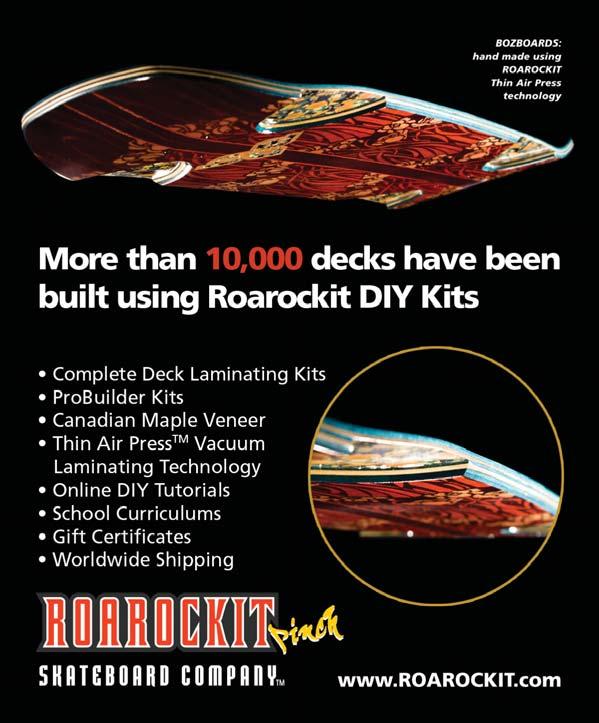

7238 Wilfrid-Hamel, Québec, Canada 1-888-614-7411 FreeshippinginQuébec Freeshippingforordersover25$inCanada! er25$inCeeshippinginQQu u c ingderso e horor v oreshippingf e f ov fo Fre r rd uébec 25 be ad Canada! a ees s r Fre Fr Q ec me u riid H ilfrid-H id c, uéb ,l Wilfrid-Hamel 7238 nCa 11 614-7 a 1-88 da 88- 1 anada1-888-614-7411 , C 70 CONCRETE WAVE SUMMER 2010



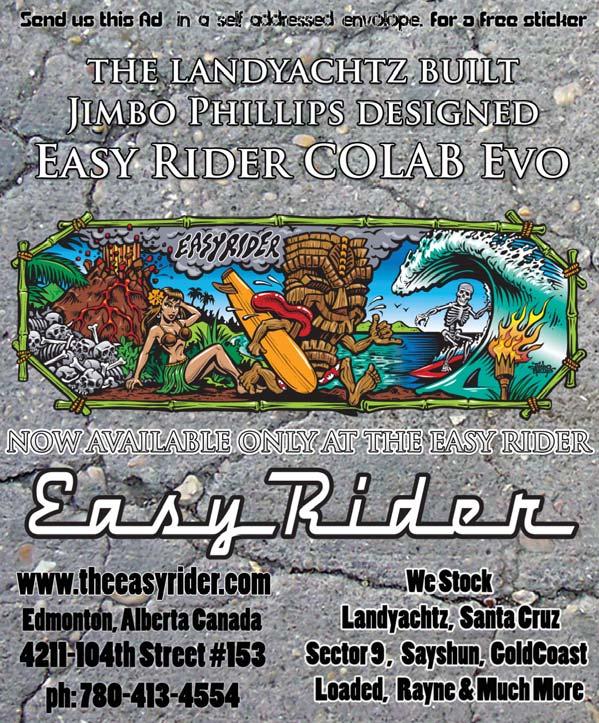
SUMMER 2010 CONCRETE WAVE 71
88 ACRES OF ANARCHY
A DOCUMENTARY THAT TAKES YOU BEHIND THE SCENES


SKATOPIA: A semi-underground legend, a creepy “holler” in the hills of Appalachia, a place where your car might burn, your girlfriend might leave you, you might break a bone… You may have heard of it — but what do you really know about it?
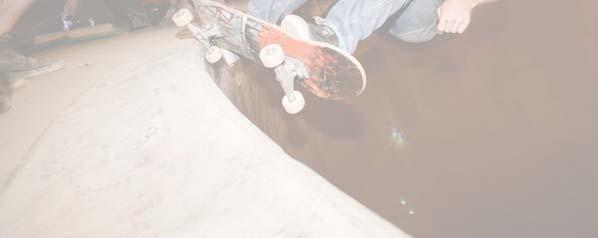


Later this year, you’ll be able to find out… with the release of “Skatopia: 88 Acres of Anarchy,” a 90-minute documentary that goes deep into hillbilly country to come out with the real story.
Filmmakers Colin Powers and Laurie House first drank the Skatopia Kool-Aid at the Bowl Bash party in 2005. Before they recovered their
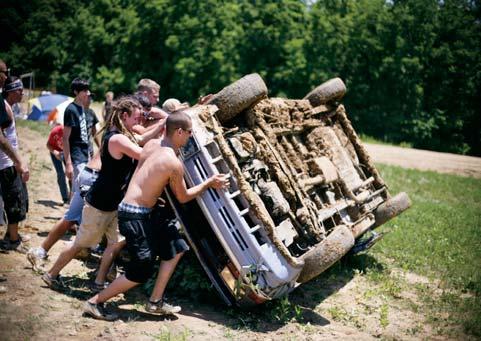
wits, they were packing their 2-year-old son, their dog and their camera in the minivan and moving to Meigs County, Ohio, a place known for two things: weed and Skatopia. For the next year they followed Brewce Martin, Skatopia’s owner, and the other residents and visitors through thick and thin, good and bad. They shot and collected so much footage that it took them a year to sort it all out and digitize it. It took two more years to craft a film strong enough for a film-festival run that has been selling out shows and shocking audiences for a year. Now they’re totally out of money and ready to put it out for everyone else. Funny how those things always coincide in independent filmmaking.
Q & A with Director Laurie House
by Michael Brooke
Michael Brooke: Why should I go see this movie?
Laurie House: Because at some point or another, almost every skater dreams of living the life that Brewce Martin lives. There are lots of backyard scenes today, but there is only one Skatopia. This film isn’t a hero-worshipping skater biography. You see good and bad, and way more than if you just went to Skatopia for a party. On the other hand, I don’t recommend just watching the movie and skipping a visit. You’d miss out on: getting lost on gravel roads, traveling thru hills ’n’ hollers, driving under the Skatopia arch, having some dirtbag skater rifle through your cooler before you get out of the car, rallying that car when the freedom goes to your head, drinking a beer listening to bullfrogs, watching your friends rip the insane terrain, digging in the mud to make something new to skate… a movie can’t quite do all that for you.
MB: What makes this different than the Skatopia videos I’ve seen on YouTube or Fuel TV?
LH: The movie lets you see behind all the mayhem and the hype to what it really takes to live your dream. All that freedom you see on YouTube took a hell of a lot of work, and only an obsessed person could pull it off. And even then, most obsessed people still couldn’t pull it off. The movie is about realizing that our visionaries aren’t perfect. To create something they need a kind of energy that can’t be fine-tuned.We can get pissed off at Brewce in the movie one minute and then sing his praises the next — just like real life. And Brewce himself has supported our approach. Friends sometimes told him to get us to take out some scenes that they thought made him or Skatopia look bad, but he argued to keep it all in. So our visionaries may even make us suffer some, but in the end we are so glad they’re on the earth pushing us. Brewce lights a fire in people to do more than just accept their lot in life… to take a risk and try to live a life that feels meaningful. He doesn’t expect that everyone’s dream will be to build another Skatopia.
CONCRETEWAVEMAGAZINE.COM 72 CONCRETE WAVE SUMMER 2010
One, two, three PUSH! Photo: Richie Wireman
Photo: Richie Wireman
Grinding the the Punisher Bowl.
Photo: Richie Wireman
MB: How did you decide what you were going to focus on?
LH: A lot happened while we were down there. He began the year sort of grandiose about all the stuff that was going to happen: “I’m gonna build this and Slayer is gonna play here,”etc.But stuff just kept going wrong. And that was great for our audience, because you can only understand the fierceness of his drive when he’s really up against something. I love the ending. I think it might be one of the most real endings ever in the movie. Not because it wraps anything up, which it doesn’t. However, if you’re paying attention, you understand the true na-
rules or fear. So somehow there was a meeting of the minds with Brewce, without anyone specifically saying, “This is what we’re like…” “Oh, yeah? Me too! OK, you guys can make a movie about me.” I guess we really just became friends, and we all more or less trusted each other… that was the key. Once Brewce trusted us, that meant the whole community, inside and outside of Skatopia, trusted us too. We have a lot of great friends down there and throughout the skate world now.
MB: What do think the message of the film is?

him value, so he rightly asked for some storyrights money and a share of the profits. During our first week there he said, “I own all the footage and I’ll have final say on what scenes are in the movie.” Well, this is not what you want to hear as a filmmaker. But I basically said, “How much are you paying us to make your corporate video?” He totally got that we do what we do out of sheer love of making film, and that if someone else was telling us what to do, there would be no point for us to make it. Because that’s the way he lives also.
ture of happiness — in my humble and unbiased opinion. I won’t give away what the true nature of happiness is, because then you’d only go to see the movie for the mayhem, skating and music instead to find out the true nature of happiness.

MB: Why you guys?
LH: Colin is a skater, built ramps in his backyard in the ’70s. Colin understands a lot more than he looks like he would. I’m trying to figure out how to grow up, but I’m still so immature! I’m kind of a happy, pissed-off person who secretly wants to smash things and break rules. But both of us don’t like being pigeonholed, stereotyped or limited by
LH: When we returned from Appalachia with 400 hours of footage, we kind of had an idea of what we had just witnessed, how we were going to turn that into a story, but we were still pretty overwhelmed.We went to a story consultant. She said making an independent film is such a grueling, gigantic project that you can’t just be interested in your subject; you have to be personally dealing with the same issues as your subject. So for me, it was definitely about having the courage to find meaning in a world that frequently leaves me cold. It was about not buying into anyone else’s idea of what I’m capable of and what I’m not capable of. Finding my own limits and not following society’s limits. I saw that happen to people of all ages who visited Skatopia.They get to feel the boundaries of how far they can push things, rather than just stopping before they piss someone off, get arrested or just make someone else uncomfortable.
MB:Was Brewce into the movie right away?

LH: Well, he had what I call his “resource glasses” on — they only see green. When he puts them on he can scan anything and see where the resources are. So we were resources. He knows when people want something from him that gives
MB: How is Brewce?
LH: As many skaters know, he had some major head trauma due to an exploding truck tire about a year ago. It hasn’t been an easy time for him, and not getting his skating back right away hasn’t helped. But he’s still got a drive that won’t quit, and he still wants to see change and major progress in his kingdom. He’s got one of the most ambitious events in the history of Skatopia going on this year right after the Bowl Bash. On June 26 and 27, he’s putting on the first American Skate Festival. A huge lineup of bands including Gwar, Meat Puppets, Agent Orange and tons of others will be playing at the new Skatopia amphitheater, built by hundreds of visitors over the last few years.
MB: Where can we buy your movie?
LH: We’re finalizing our deals with our distribution partners, so we’re not totally in control of our release schedule. You’ll be able to buy it first on our website and Skatopia’s website. Put yourself on our mailing list at skatopiathemovie.com and we’ll make sure you’re the first to know. Skatopia’s website is skatopia.org. Go there for info about parties and to donate for concrete — they never stop building. You can be part of building a skate monument. ¶


SUMMER 2010 CONCRETE WAVE 73
Skatopia owner Brewce Martin and girlfriend Amber.
Photo: Travis Dove
You can run, but you can’t hide!
Photo: Richie Wireman
LOW IMPACT ON THE ENVIRONMENT — BIG IMPACT ON LONGBOARDING!





Three years ago, Ross Baradoy and a group of friends decided to do something unique to celebrate Earth Day. They created a grassroots event that started from a simple idea: Celebrate and encourage the low impact of longboard skateboards on our environment as a form of effective transportation. Their first event started in Calgary, Alberta and has since spread globally. Here is a sampling of some of the truly astounding things that happened over the period of April 18-24, 2010. A huge thanks to all who participated and contributed to this truly worthwhile event. greenskate.org.

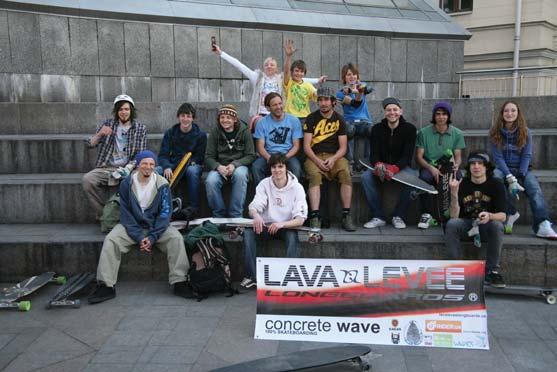
INDIANAPOLIS
GreenSkate Indianapolis 2010 was a great success. A small, yet noble group of six riders took to the streets on Earth Day to pick up trash around the city, raise awareness of our wonderful mode of transit and have a great group ride. Impact along this GreenSkate’s 9.3-mile route was a total of nine filled trash bags, a happy Mama Earth and an amazing ride. We are looking forward to next year. GreenSkate is truly awesome.
Submitted by William Coale.






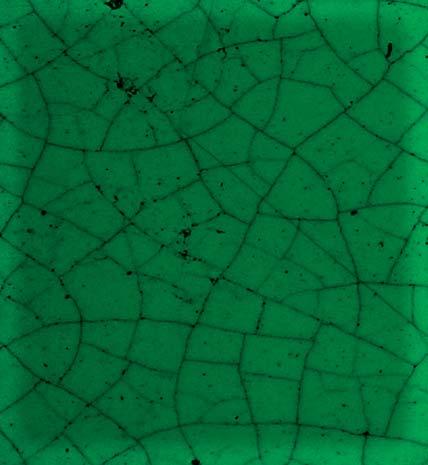














KIEV

The GreenSkate in Kiev, Ukraine was a small group of people. Our initial plan was to go the Great Patriotic War Memorial Park, a popular public place, but it was closed. So we ended the day’s event on a small hill where some of the children that attended could sit on their board and ride down the hill. I think everyone had fun, and we are looking forward to next year’s event. Submitted by Benja Walsh.

PARIS

Organized by riderz.net, April 18 saw the first edition of the Paris GreenSkate, which included both an orientation race and chillout session. The race took in many of Paris’s famous sights, whilst back at the HQ stories were swapped and anyone could try or learn to longboard on the Blackkross and Bustin boards on offer. The turnout was amazing. Under a blue sky more than 80 people came together from across Paris to promote longboarding as an eco-friendly and healthy means of transportation. Submitted by Chris Vallender. Photo: Jean-Sébastien Dennebouy
ALAJUELA, COSTA RICA
Green T-shirts on longboards took over the streets of Alajuela, Costa Rica. We started with a push race through downtown Alajuela; although the original route was only a few blocks long, once we hopped on the decks we couldn’t stop and ended up skating more than 7 km, followed by a downhill session at the Poas volcano. The event was a success, and a definitive win for the longboarding community in Costa Rica. Submitted by Marcos Arguedas Pitti.
Photo: Arsen Fedosenko
Photo: Edgar Chinchilla
PANAMA
Panama, bridge of the world and heart of the universe, a multicultural country, took part for the first time in an event of longboard skating of international level and that feels part of the great community longboard of the world across a great reason, the day of the earth. Panama feels proud to be a part, and represented for Downhill Autorizado, which promotes the downhill movement in the country. Submitted by Jose Luis Solis.

ORANGE COUNTY
Orange County, Calif. is a place typically known for its traffic and crowds, but the crew that showed up to GreenSkate Irvine wasn’t exactly typical — group of around 30 skaters from the age of 13 to...well, let’s just say older. It was a great way to meet fellow skaters and draw some attention to the convenience of skateboarding for transportation, especially in a nice area like the OC. Submitted by Greg.
CHICAGO

This was the first year for GreenSkate in Chicago, but it was a major success. A solid group of 25 kids came out with only a week’s notice to promote the stoke. Everyone there had a positive attitude and was ready to spread the love for longboarding. We set out down the lakefront trail for a total of around three miles of carving right next to beautiful Lake Michigan. Overall, the day was a large success, and even more kids are planning on coming next year. GreenSkate is an awesome way to spread the love of longboarding and promote going green! Submitted by John Bach.

SLOVENIA





















On Sunday, April 25, Slovenian longboarders celebrated the World Earth Day within the scope of greenskate.org session, which was organized by Longboard Magazin Slovenia. The 18 assembled longboarders undertook the wild, 30-kilometer cruising through the capital city, Ljubljana to the suburban settlement, Trzin. Notwithstanding the small number of participants, the atmosphere was overwhelmed with positive energy all day long. The event was sponsored by Longboard Magazin, Sickboards and Sports Assocciation Dra. Submitted by Mihael Zadravec.


SUMMER 2010 CONCRETE WAVE 75
SPOKANE

Board of Spokane joined the citywide Earth Day celebration on April 17 to host a booth promoting longboarding as alternative transportation. In addition to giving out 100 helmets to kids, we also held a drawing for a complete longboard. Community response to the booth and helmet giveaway was overwhelmingly positive. The following Saturday, we hosted a skate session and women’s Beginning Longboarding Class to connect with other longboarders in the area and gear up for an awesome summer of skating. Submitted by Selina Shehan. Photo: Devon Kelley


VANCOUVER
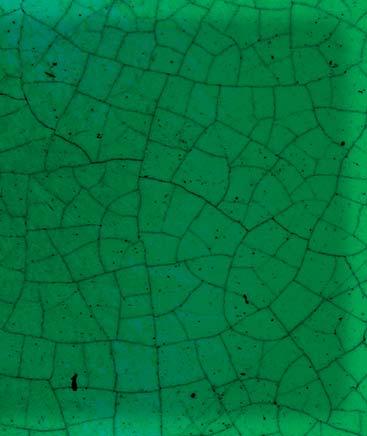


Vancouver enjoyed a fantastic GreenSkate this year! Thirty-five individuals, young and old, skated through the city to the fantastic Stadium pathways, and then worked their way along various seawalls and streets all the way out to UBC. The 18-km journey captured a lot of attention from various bystanders, all of whom were excited to speak to us about what we were doing! Thanks to everyone who came out and had a very fun time! Submitted by Marcel “off axis” Robert.













ECUADOR

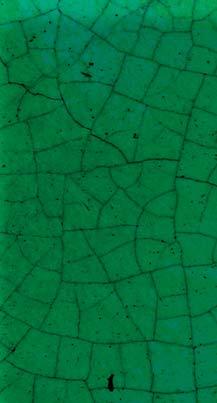














Greetings from Ecuador (Guayaquil)! The event was a success, was very impactful on the city where we live, attracted much attention and got people take a little interest and awareness. Our group is just beginning; this was our second event. We are growing rapidly, with a lot of organization, and hope that next year’s event is bigger and has much more support. I say goodbye congratulating all longboard groups from different countries who supported the cause! Many thanks! Submitted by Gustavo Espinoza. ¶


76 CONCRETE WAVE SUMMER 2010 CONCRETEWAVEMAGAZINE.COM
The NorCal Freestyle Jam

Sponsored by SK8KINGS and PowerBar

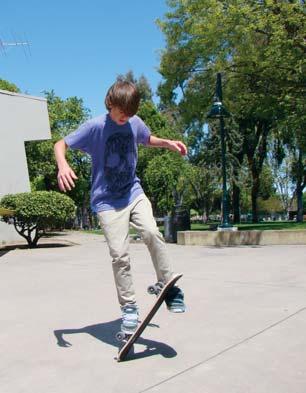
APRIL 18, 2010
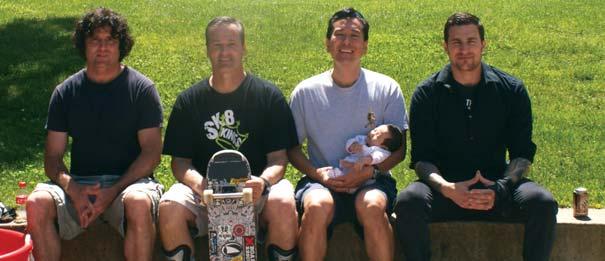 BY GARY HOLL | PHOTOS: WALLACE SUEYOSHI
BY GARY HOLL | PHOTOS: WALLACE SUEYOSHI
Although freestyle gatherings occur periodically around the globe, what made this one unique is that everyone who showed up had at one time skated this exact spot in the ’70’s, ’80s, ’90’s or ’00s. The spot has been used for decades and the surface is perfect. Until recently the lamp posts around this spot had been adorned by some classic skate stickers from the past, but new lights were recently put up and the old lights, unlike the skaters from those decades, were retired.
The rundown of who showed up read like a history book of Northern California freestyle. There were the original Skateboards Unlimited shop team (John Ravitch, LeBaron Loy, Ray Meyer); the San Jose squad (Anthony Sedillo, his son Joseph and Wallace Sueyoshi); the original Midtown Freestyle Crew (Erik Takaoka, Gary Holl); along with other Palo Alto freestylers Dr. Andrew Huberman and Dave Cox. You also had the head of the IGSA and freestyle rider Marcus Rietema, San Francisco freestyler Alex Gadayan and Katie Stewart, East Bay ripper Tim Ahern, Joe and Jack Weir, the father-son team — and of course the supporting family and other friends that showed up too.


Skating highlights included Dave Cox trying just about every crazy trick, especially if it was a loud one (slap-back to truck stand, broken fingers); Ray Meyer looking like he could spin a hundred 360s if he just practiced regularly; Anthony Sedillo showing up with his original Santa Cruz Ray Meyer setup that he skated in his last contest (Phoenix, 1980s) and still able to truck-stand spacewalk wearing the same shoes (old Vans) from that same contest; Tim Ahern showing that the younger guys can jump higher and make the board flip and spin more than the older guys (someone sponsor this kid!); LeBaron Loy and John Ravitch seemingly able to perform without practice some of the smoothest moves; Marcus Rietema’s frozen nose wheelie — I swear I did about four or five combo tricks and he was still holding that wheelie (it has to be some world record!); Wally Sueyoshi, the master of skate history (ask him any question — he’s like a skateboard history book), throwing in some footwork in between his photo documentation of the event; Andrew Huberman, who comes out his lab every once in a while just to show us he can still throw down some hard tricks like an Impossible; and Joe Weir, who is just starting to freestyle — if he had more time between working full time and going to school full time he would be skating like the rest of us old guys.
A big thanks to Victoria for coordinating a pizza lunch, to SK8KINGS for their product/schwag, to PowerBar for all the bars and to all the friends and family that came out to the jam. ¶
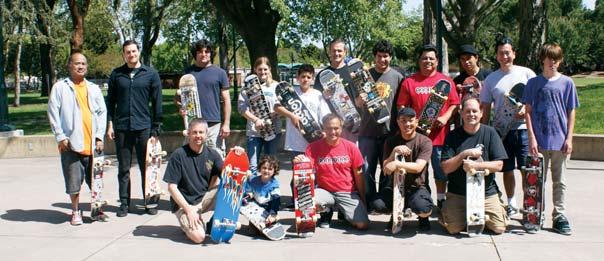
SUMMER 2010 CONCRETE WAVE 77
1) Group Shot (minus a few people that came later): Back row (L to R): Wally, Andrew, Dave, Katie, Alexi, Gary, Alex, Anthony, Joseph, Erik, Tim; Front row (L to R): Joe, Jack, Marcus, LeBaron, Ray 2) Tim Ahern, truck stand
3) Marcus Rietema, seemingly setting a new world record for longest stationary nose wheelie.
4) Midtown Crew (L to R): Dave Cox, Gary Holl, Erik Takaoka, Dr. Andrew Huberman 5) San Jose in full effect: Anthony Sedillo with original setup from the ’80s while Wally shows a modern freestyle setup. 6) Dave Cox, Gary Holl and Anthony Sedillo
1 2 5 3 4 6
RIDER PROFILE
Dasha Kornienko
BY DAVE FLANAGAN
“The cognitive processes almost completely shut off and I feel a keen sense of awareness of my body in space. In that moment, nothing else exists. It’s a beautiful feeling.”

For 24-year-old Dasha Kornienko, riding a skateboard downhill at speeds in excess of 80 km/h generates the same addictive blend of peace and joy that she gets from yoga, or knitting a scarf. It is, says the Ukraine-born kinesiology graduate, a form of “moving meditation.”

Dasha only took up skateboarding four years ago — somewhat reluctantly. It was a university friend who first tried to persuade Toronto-based Dasha to join in with outlaw skate sessions in a city parking garage, but she reckoned the idea of tearing around on a longboard avoiding security guards was “too crazy” for her.
Once she caught some video footage of previous sessions, though, she was intrigued enough to give it a try. “I guess the stoke kind of seeped through the screen into me,” recalls Dasha.
As a ski racer and skiing instructor Dasha certainly possessed the physical and mental capacity to function in harmony with gravity, but she had no background in any board sports, including snowboarding. But she proved to be a natural, becoming as hooked on the good-natured vibe of the Toronto longboarding scene as by the actual business of skating. Before long she was “peer-pressured” into trying a fast downill run by friend and professional speedboarder Patrick Switzer — while wearing two layers of denim as protection against road rash.
“Having enjoyed the feeling of speed on my skis since I was a little kid, it was a bit of an easy transition from downhill skiing into downhill skateboarding,” says Dasha, who took the IGSA World Cup title for the first time last year. “It wasn’t just the speed that attracted me, but also the finesse, the technique and the need to acquire the skills to get faster and better.
“As a ski instructor, I’m used to taking courses to improve my skiing technique, but I
enjoyed the fact that downhill skateboarding had no specific rules about how you had to skate. In skateboarding, everybody has a different style, and improving is about trying and falling and trying again.”
The competitive element brought another dimension to her new passion, though in her first couple of years on the circuit she was quite happy to sit in the middle to rear of the field. Her best end-of-season position was fourth, in 2008, so her 2009 victory took a few people by surprise. She puts her success down to a mixture of “sheer perseverance,” skiing and yoga.
“I’m one of those people who could ski before they could walk, and I know many skilled skaters began skiing when they were young,” she says. “Thus, we began to develop our balance and proprioception, as well as other motor skills, at an early age. My studies in kinesiology have helped me in different ways, as I examined the body and movement from so many directions — anatomy, physiology, sport psychology,
78 CONCRETE WAVE SUMMER 2010 CONCRETEWAVEMAGAZINE.COM
Photo: LongboarderZ.de
nutrition, biomechanics, socio-cultural perspectives and more. I believe all have helped me to better understand the human body and helped me as an athlete.
The real competitive turning point for Dasha came at last year’s Peyragudes World Cup event, a race she hadn’t really intended to enter. What she had been planning to do was take a summer downhill road trip with Swedish riders Katreen Wikstrom and Kristina Engstrand. Their aim was to hit up the best downhill spots and freerides, but then Katreen broke her foot a few weeks before the trio hit the road.
“When I first found out, I was heartbroken and couldn’t imagine a summer of skating without her,” says Dasha. “To be honest, I didn’t plan on going to so many races. I kind of just fell into it. My initial hope was just to go to skate as many cool roads as I could. But when Kristina told me she was going to Peyragudes, I decided to try to salvage what was left of our plans and follow her there.”
Maybe it was all that yoga, or because she was just there to have fun, but a super-relaxed Dasha ended up beating the Swiss double world champion Bettina Luginbühl in one of the heats.
“That was when I realized just how much I had improved, though I never really pictured myself being number one,” recalls Dasha. “More importantly, that run was the most fun I have ever had, with Bettina and me passing each other back and forth, nearly touching in corners. We were so close. And she shared my stoke, saying she felt so safe skating with me. That was a huge deal coming from her. I will never forget that run.”
In the end, Dasha took second place overall at Peyragudes, behind Bettina, in what was then her best-ever World Cup finish.

“It was definitely the happiest moment in my skating career, outweighing any of my wins by far,” reflects Dasha.
From that point on there was no stopping her. Although she finished fourth at the Graveyard Call event in France, Dasha took victory at Padova in Italy, became European Champion at Kozakov in the Czech Republic and was the top woman at Eastbourne in the U.K. Her World Championship was secured at December’s Hot Heels Africa event, but it’s taken until now for the achievement to fully sink in.
Dasha remains one of only a small handful of women competing on the IGSA circuit, but she’s working hard to try to boost female participation.
“For girls who don’t skate, the fact there are other women doing it may make them more likely to get into it,” she says. “This is why I want to make myself and all women downhillers more
visible. If other girls see that we exist and that we compete on the same level as the men, odds are they may see it as more accessible for them.”
Despite longboarding’s inclusive atmosphere, though, it seems there are some guys out there who aren’t entirely happy about being beaten by a woman.
“The reactions from guys have been varied, although positive for the most part,” says Dasha. “Recently there’s been some controversy about whether or not women should be allowed to compete in the ‘open’ race class, or if we should have a separate women’s category. Women are certainly becoming fast enough to qualify and compete with the men, but I’ve had some negative reactions from guys who feel women shouldn’t be allowed to race in the open class. Usually these are men slower than me who end up losing their spot to a girl.”
It’s hard to imagine Dasha being remotely bothered by guys with a chip on their shoulder about fast women. Her skating speaks for itself, and she’s clearly having too much fun to get pulled deeply into extreme-sport gender politics. That said, she seems happy enough to carry the role-model banner.
“I believe I’m as much a role model as any other female who engages in some kind of physical activity or competes in her sport,” she says. “In 2008 I worked at a skateboard park and school in Toronto, and, being the only female instructor there, I was often teaching the girls and women who felt more comfortable with a female coach. It’s my belief that the physical empowerment of more women, and the entry into skateboarding of greater numbers of females, will help to break down the connotations of skateboarding as a male-dominated sport.”
Dasha confesses she’s feeling a little more ex-
ternal pressure this year entering the IGSA circuit as reigning champion, but she’s determined to stay as balanced off the board as she is on it. If she does well again this year, so be it, but repeating her 2009 success isn’t a priority.
“I feel there are a lot more expectations from others, although my expectations of myself have changed,” says Dasha, who plans to continue studying biomechanics, or sport philosophy. “As much fun as I’ve had racing, I’ve learned that competition isn’t always healthy. It can turn close friends into rivals and, at times, even take the fun out of skating. So the only pressure I am putting on myself is to not let myself get so wrapped up in the negative aspects of racing, to take it easy and just keep having fun no matter what.”
Her main goal this year is to make it to the World Cup race in Teutônia, Brazil, regarded as the fastest and gnarliest stop on the circuit. “No woman has ever raced on that road, and I’d like to be the first,” says Dasha, who dreams of relocating to Switzerland, a country peppered with the kind of roads that keep longboarders awake at night. “Other than that, I’ll be happy if I make it to a few races this year, but my bank account is still recovering from the hit it took last season.!”
Dasha adds: “I’d like to extend a huge ‘Thank you’ to all my sponsors and supporters: Andreas Johnsen of Infamous Bomb Squad, Chris Hart of Airflow Skateboards, Richard Auden and Mike River of Cult Wheels, my ‘coach’ Ramón Königshausen, my parents, Tyler Philp for buying me my first board, and anybody who helped me along the way — whether it was a couch to crash on, a ride to a race, or advice! I’d also like to say a special thanks to Laura Hatwell, my amazing webmaster, for the inspiration and encouragement.” downhilldasha.com ¶
SUMMER 2010 CONCRETE WAVE 79
Dasha tops the podium at the 2009 Padova Grand Prix in Teolo, Italy. Photo: Maurizio Busato
MAKING THE GRADE
SKATEBOARDING IN THE CLASSROOM
This article gives you an overview of some of the creative ways in which educators are utilizing skateboards. We hope that it inspires students, parents and teachers to forge their own workshops and courses. As you will soon learn, there are a multitude of ways to engage students in the classroom. The only limit is your imagination.

80 CONCRETE
CONCRETEWAVEMAGAZINE.COM
WAVE SUMMER 2010
OASIS SKATEBOARD FACTORY Toronto, Ontario
This is a credit course — literally! This article has been written by the students at the Oasis Skateboard Factory, the world’s first skateboard-build-and-design-based alternative high school located in Toronto. The OSF helps students earn high school credits by running a social justice and community focused entrepreneurial business where they learn hands-on to build skateboards, design original custom graphics, work with local artists and community partners, market and display their work, as well as have the opportunity to receive an honorarium. As part of their program, the class has been making skate zines with their teacher Craig Morrison. Each student has been marked on their contribution to this magazine article and will receive part of a credit for these efforts.
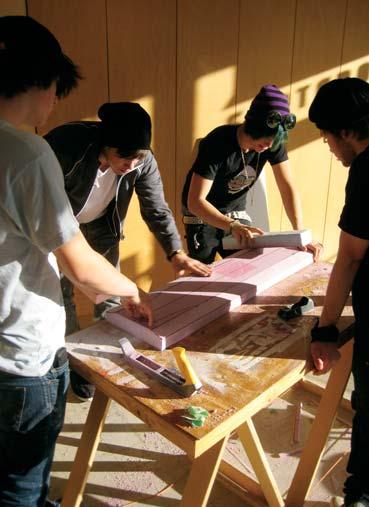
SK8 DESIGN By













 Zach
Zach

One of the art courses we have at OSF is skateboard design. We build our boards using seven plies of maple wood using the method invented by Roarockit Skateboard Company. We glue all layers together then put it in a vacuum bag along with the board on a mold and then suck the bag nice and tight. We keep it sealed for 24 hours. Once your board is out of the vacuum bag, you shave, shape, and sand your board down.
Once you have your board nicely shaped and sanded down you can create a graphic for your board. You select a picture, and then lay a plastic sheet over the picture. Next, you use a blade to cut out your design. Creating layers of your graphic gives your design more depth and colour. Lay the stencil over the board and spray paint the design on the board and you’re done!

My name is Zach, I am sixteen years old and I live in Toronto. My favorite experience about designing a board is shaping it. I like to watch my board become smooth and nicely shaped. Sanding it down and finishing your board is one of the most satisfying accomplishments I ever had. Coming to OSF changed my marks, my thoughts about skateboarding and made me want to ride my board again.
The benefits for this course are truly rewarding. You get sponsored by businesses in the community, such as Sam James Coffee Bar, which is a local coffee shop. With every board you sell you make money for yourself. If you’re into wood tech. and graphic design then you will love this class!

THE TRANSFER
By Tylar




Transferring high schools for the first time was not an easy thing, leaving all the people I had met and being put into a classroom with a whole bunch of randoms. I can’t even begin to tell you what was going on in my head. After meeting and learning that everyone was in the same boat, I started feeling a little more at home.

Comparing a normal academic high school to the Oasis Skateboard Factory (OSF), it is not the same at all. Being in one classroom with the same students and teacher all day everyday may seem like a pain, but the OSF is more like having a job than being in class, and on top of that we actually enjoy the projects and assignments we do! The stuff we do isn’t just work that gets marked and then added to our final grade and then filed away; work we do isn’t just for us, its seen by people all over Ontario and sent out to the community.
Another problem with normal high schools is the time they start... 8:20? Not going to happen! I usually missed my first two classes. Being in the OSF, and starting at 10:30 means I get here on time. Even if I am late sometimes, the work is enjoyable, so I get all of it done and I get all my credits. I’m telling you, that’s a first.


SUMMER 2010 CONCRETE WAVE 81
Now I know this may sound corny, but the bond the students have with Craig really does help us focus on the work and enjoy it. If there’s something we don’t understand, Craig will sit down with us and make sure we know what we are doing. It’s a lot different than being in a class with 30 students where you are handed some work and are expected to have it all done by the end of the class. Another amazing thing about Craig is that he always seems to have these unbelievable opportunities for us, like contests and projects that you could not even imagine.
Honestly, transferring to the OSF was definitely one of my better choices in life. I’m 100% more successful here than I was in my other school. I really didn’t think I’d be finishing high school to tell you the truth, legit, the OSF has turned my life around and having something like a skateboard with my own designs on it as a project... I don’t think I could have it any better.
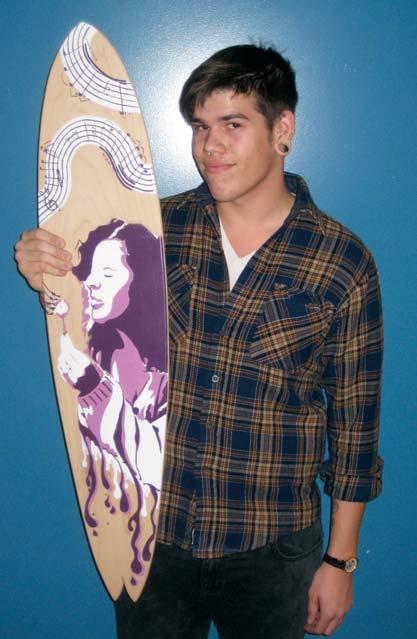
Tylar is 16, he has made seven decks, he has made his credits, and he has made his dolla dolla bills.
SKATEBOARDING AT THE SKATE FACTORY
By Tristan
I hate school, I hate teachers, I hate books, I hate tests, I hate projects, but Oasis Skateboard Factory doesn’t feel like that kind of school. Craig, my teacher, is more easy-going than my past teachers and that really helps me get my work done because I don’t get stressed out and give up. I am interested in the work we do and I enjoy the atmosphere of the school. That alone has motivated me, for the first time in my three years attending high school, l will get all eight credits this year (and that in itself shows this program works). I didn’t just get those eight credits, I also get paid for every board I make. That itself gives me a chance to have real-world business experience that students in most schools never get.
Tristan plans to keep skating and keep making skateboards in the future.
STREET ART AT OSF
By Carmen
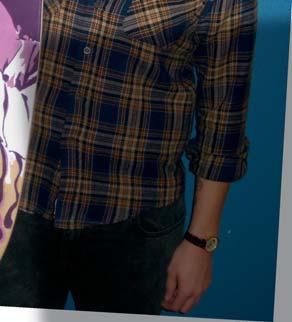
In most places, teenagers will only get charged if they’re caught doing graffiti. But since our teacher Craig is experienced in street art and is highly respected by the school board, we get away with it here...Ha! (Of course Craig only finds us legal spaces to display and promote our work). Street art at OSF is almost like a safe haven for kids. Street art is a big part of what we do here at Oasis Skateboard Factory. We are always stenciling, in fact, it’s how we make all our skateboard graphics (unless they’re done free-hand). We’ve done other cool projects that involved street art and stenciling, such as when we had to choose a musical artist and stencil them onto old, recycled records. Recently, we also received already-made bamboo skateboards from Bamboo SK8 and we had to create our own eco-themed designs. This involved layers and layers of stencils. Some other forms of street art that we do are: making stickers, buttons, paste-ups, and soon, we plan to experiment with some screen-printing.
Oasis Skateboard Factory artwork is inspired by many popular artists including Andy Warhol (the “factory”, get it?), Shepard Fairey, Banksy, Logan Hicks and C215. We also are fortunate enough to be able to meet local artists and view local street art since we’re located in an area of Toronto where there is graffiti everywhere. I feel that this school engages students better than other mainstream or alternative schools because we are re-engaged by skateboarding and street art.
Carmen is a 17 year-old student who has been with Oasis Alternative S.S. for two semesters and OSF for one semester, but has learned and benefited a lot so far. She has been interested in art all her life and plans to continue with art and design after high school.


JOIN THE SLO_SKATE MOVEMENT By Rai













As proud advocates of independent arts, DIY skating and social justice, we whole-heartedly support the Slo_Skate Movement (which the OSF started). By doing unique, single-press boards ourselves for sponsors, we create our own local business.

As part of the independent business community, we embrace and support other local businesses around us. In encouraging this buy-local movement, we help to build our local economy by keeping our money circulating where we want it instead of blindly placing it in the hands of greedy corporations.

CONCRETEWAVEMAGAZINE.COM
82 CONCRETE WAVE SUMMER 2010
The Slo_Skate Movement is not only an ideal method of taking down mass corporations, but it also breaks down the cold barrier that is often found between merchant and consumer. Locally owned businesses are devoted to catering their communities and are full of diverse culture and interesting character.

With the economy in a recession, businesses of all sizes seem to be struggling. Local businesses have taken this opportunity to remind consumers of the importance of good quality goods and real product value. Consumers globally have begun to really consider who they’re handing their money over to.
As a consumer, I feel satisfaction in knowing that I am receiving a quality product that received plenty of honest thought and care instead of a product that was built to break and sold for the mere purpose of profit. Here at OSF, we commit all of our attention to the finest details of the grain and graphic in our hand-built and designed street decks and longboards.
For every contribution we make towards local organizations, we fortify our ties to the thriving culture of our community and strike a small blow to the forces of mass production. Support Local. Support Change.
Rai is an aspiring youth with high hopes of growing up to be a shark.


SKATE YOUR WAY TO GRADUATION
By Harley
I switched from a regular high school to Oasis Skateboard Factory, an alternative school, and in my opinion I would say that the switch was a great idea. I’m doing much better, and I actually look forward to going to school in the morning.






Regular high schools and alternative schools are very different and I’m not just talking about the homework. The setting, the schedule, the students, and even the vibe is different. In regular high schools there are tons of students and there is always drama and fights going on. At Oasis Skateboard Factory there are about 20 students and everyone seems to get along great. Switching from a school that has four different classes with different people everyday to a school that is one class with the same people everyday was a big change for me, but I like it better. The environment here is more alive and fun compared to a regular high school, which is boring and tiring.
The best thing about Oasis Skateboard Factory is that most of the work is hands-on; at a regular high school the work is mostly textbooks and writing. At regular high schools like the one I




came from, the teachers don’t seem to care much about anything, they’re just there to get paid, but at Oasis Skateboard Factory Craig (our teacher) wants to help us succeed and have fun doing it. In my opinion overall, regular high school sucks and Oasis Skateboard Factory rocks!


Harley is a 16-year-old female student attending OSF (girls can make skateboards too!). She is very outgoing, spontaneous and is very happy to be making skateboards with Craig.

GUESTS/FIELDTRIPS/PARTNERS

 By Kevin
By Kevin

Here at the OSF we have had many guests walk through our doors. Sam James is one of them, an independent owner of the Sam James Coffee Bar. Sam has been into our classroom to speak to us about entrepreneurship and what it takes to own your own business. He is one of our supporters in our community and one of our OSF decks is hanging in his shop.
The Bait Shop is a Skate shop that has a screen printing carousel and they are going to let us use it later on this year to screen print some of our own designs on T-shirts and skateboards. They have a good mini-ramp that we can skate when we are there after we get our work done after school.
Roarockit Skateboard Company is our main program partner and we make some of our custom skateboards at the Roarockit headquarters. They have a lot of different molds of skateboards so we have a very open selection to what types of skateboards we could make when we are there. We have also started to design and cut our own molds and the results are unique longboards sold at Longboard Living, a local skate shop in Kensington Market.
We also have been on many field trips this year; one of the places was the Billy Jamieson house. Billy Jamieson is a museum owner who has a lot of shrunken heads, stuffed animals, a mummy, ancient artifacts from all over the world, and a few house pets. His house was so interesting because everywhere you turned he would have a story for what ever you asked about. He has also sponsored an
SUMMER 2010 CONCRETE WAVE 83
OSF student’s skateboards, which will add to his collection.
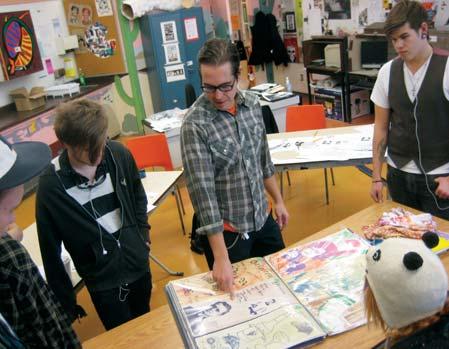


My name is Kevin. I’m 16 years old from Toronto, Ontario. I’ve been skateboarding for about 4 years now and I skateboard everyday outdoor or indoor. I really like the OSF because we get to build skateboards from scratch and before going to this school I always wondered how a skateboard was made. Now all of a sudden I am able to build my own and get paid for it! This school is the first school I’ve enjoyed going to. We’ve got Dunbat Skate Park right next to our school, so after school sessions are always good.
GETTING IT OUT THERE
By Wolf


Wolf has been going to Oasis Skateboard Factory since last September. Here is what she had to say about the work they do being presented in art shows:
At Oasis Skateboard Factory all of our art work goes out to the world to be seen by all, it’s not just some small project that goes in the back of your garage to be uncovered years later when you decide you want to reminisce.
People get to have an opinion on your work that is shown in public. You will be complimented and criticized on the work you put hours into. The feedback makes those hours completely worth it and you might actually make somebody’s day or be talked about by people you don’t even know. How much more excitement could an artist ask for? I can’t believe I found a school that allowed me to be an artist and not just a student.
The art shows that Oasis Skateboard Factory does each semester get my name out there as well as our schools reputation in the local art and skateboard scene. It makes us more money; in the last show we sold over $900 worth of skateboards in the first hour! Not only that, but if your board has a message to it you might even be able to change the way people think. In a recent graphic design project we did with Bamboo SK8, every board made had an eco-friendly message in the graphic that we will be displaying them in a local gallery and posting them on our blog.
An art show to an artist is like the finals to an athlete: who wants to jus sit on the bench? Knowing your work is going to be seen also pushes you to do your best, pushes you to work harder and longer on what you do. So just like skating, you got to push yourself to go farther, use different surfaces, push the envelope.
One of the biggest lessons I learned from Craig, my teacher at the Oasis Skateboard

Factory, is to use different materials and surfaces instead of the same expected ones over and over again to get noticed: paint on records, walls (legally!), skateboards, anything that comes to mind! For any artists out there feeling like their art should have a spot on a wall somewhere, look around and there’s galleries and small shops that would probably be happy to have your work up. Who knows, it just might push you to do better than you ever dreamed you could.
Wolf is what they call her. It’s been used more than her real name ever could be, so to her that is her real name. She is 19 and thinks outside the box. Like she says: “Sky is the limit!”
CUSTOM CREW
By




 Tanya
Tanya
I’ve been in the Oasis Skateboard Factory almost a year now. I have made over ten decks! Now the more experienced students get to make their own custom decks being mentored by Ted Hunter, the creator of Roarockit. We get Ted’s expertise in helping us with woodworking and helping us create our first custom decks. He is also kind enough to let us use his space to work in. Without the help of Roarockit this project would not be possible.

The first custom deck I made was with a team. It was easier because we had three people helping create the design of the mold and the shape of the deck. What we did with this deck was give it to Longboard Living (a new skate shop in Kensington Market) and had them sell it with a custom design they did and we got a percentage of the profit.
The second custom deck I made was a dropdeck. I shaped the mold by myself and made the template to cut my board out. After doing all that I put my own custom design on it. What I plan on doing with this deck is either keep it or sell it in one of our art shows.
This is an amazing high school experience because I’m learning, earning money and getting credits. I feel honoured to have such an amazing teacher making this program/school work.





Tanya is a hard-working student who looks forward to making more decks in the future.
GETTING SCHOOLED IN STREET ART
By Alex
A few months ago I didn’t even know alternative schools existed and now I’m doing street art for credits! Over the last year I didn’t really go to school and I was skipping more classes then I was going to. My teachers didn’t even recognize me when I did show up for class. Now I’m at the
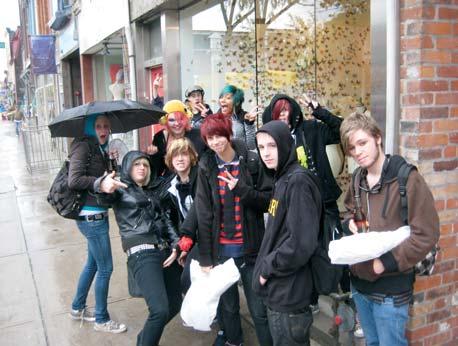
84 CONCRETE WAVE SUMMER 2010 CONCRETEWAVEMAGAZINE.COM
Oasis Skateboard Factory making skateboards and street art and I haven’t missed a day yet. Our teacher Craig is a lot different than my old teachers. He has interesting projects, he treats us with respect and he wants to see us succeed.
Alex is designing a Japanese tattoo-inspired board right now and is happy that the OSF gave him a second chance at school.
WE’VE LEARNED FROM THE BEST
By Casey
Being in a skateboard design school and learning from Roarockit is a really great experience since Ted Hunter and Norah Jackson are the creators of the patented method we use to press decks in our classroom. Being community partners with Roarockit Skateboard Company for skateboard design in school is amazing.
We learn how to build and design street boards and long boards from seven layers of Canadian Maple veneer. I think pressing the boards with the Thin Air Press system is really cool to do and watch. In ten minutes the glue starts to dry so you have to move fast to completely press the board. The Roarockit studio, located at 880 Millwood Rd, is a really fun space to work in with friends and family because anyone can come in and make a board. Making skateboards is a great project for anyone to start because you want to see the amazing finished results.
On Fridays our class sometimes go up to their studio to work on boards and we learn more and more every time we go. I’ve learned how to shape, sand, and press skateboards and long boards. Getting Ted to mentor and show me how everything works is a really good way for me to learn, and to further my hopes and dreams to have a skate shop of my own.
Keep your eyes open for Casey’s new skate shop opening A.S.A.P. (after I graduate…!)
ENGLISH/MEDIA AT OSF
By
Alexander
Here at OSF, the English/Media course offers us a little more than the average high school classroom. We do a lot of creative writing and we touch upon important subjects in class discussions and in journal entries. The writing and projects we do are through the lens of skateboarding, street art and social justice.
Apart from all the extensive written work, we also have the media side of the course. This is where we get to do a lot of fun stuff for example, having your own articles to be published like this one! Last semester a big ex-
pectation of us was to work as a group and independently to create an OSF black/white zine which turned out to be a success. Some of us even had a chance to interview local artists and/or businesses. This semester we plan to make an improved zine with better quality.
The latest media project we’ve started is a zombie/sk8 video as a media literacy project about consumerism. So far we have learned some really cool camera techniques and critiqued popular culture. We have been experimenting by filming some of our students skateboarding outside the community centre. I also had the chance to show off a little parkour/ free-running sample.
This is my English course. Honestly, it’s more exciting than any English class I’ve fallen asleep in.
Alexander is 18 and this is his second semester at OSF and the third at Oasis Alternative S.S. He is also the Student Representative. He has been a talented artist as long as he remembers. Alexander once loved to ride skateboards and now he’s putting his artistic talents into designing them. Alexander has claimed that OSF has opened doors to a lot and has been helping him become the best designer he can be. Through this program, Alexander has accomplished a lot here at OSF.
PARTNER UP
By Adam / Blank Beauty
At Oasis Skateboard Factory we have the awesome opportunity to build custom skateboards in school, like a custom drop-deck a student team designed from start to finish. With the help of Roarockit, we learned how to make a custom skateboard from scratch, and our teacher taught us the graphic design principles and art down to the last coat of paint. Oasis Skateboard Factory has to be the best school hands down.
Adam is a student at Oasis Skateboard Factory. Before attending O.S.F I went to a regular school. At my old school one of my favourite classes was “construction technology”. I planned for my future job to be something in woodworking. I never thought that I would be creating a skateboard company. I myself am a longboarder, so naturally my company is only going to have longboards in it. With the support of OSF, I already have three designs ready for my company and hope to have them ready for the summer. Craig encouraged me to design my company’s logo. The reasoning behind the name “Blank Beauty” is that all my longboards are going to showcase some of the natural beauty of the wood grain.
http://oasisskateboardfactory.blogspot.com
SKATEBOARD ART SKULLS, MEGAMAN AND BODY HAIR: WHERE DO THE IDEAS COME FROM?
By Jim Howard
What’s the number one selling point of a skateboard deck? Some serious skaters will argue that they favor a particular shape or size, but generally speaking, it’s the art that sells the board. So now, where does the art come from?
I teach graphic design at a public high school in South-Central Pennsylvania. About five years ago, I added a skateboard design project into my program. Students render full-size art and have prints made on adhesive-backed vinyl. We apply them to blanks that we buy from Bob Merriam, a retired woodshop teacher and friend in Santa Cruz, Calif. The kids walk out of my class with their own custom deck for less than 40 bucks. As a teacher, I’m proud that it’s so cheap; the problem is that sometimes the artwork is too.

Having a tangible product at the end of the assignment added to the relevance, but there is one more element that made this project truly successful. We found an audience. By adding criticism from an outside audience, the students were instantly more motivated to put in extra effort. In my opinion, the biggest flaw with art and design education is that all too often, the student is his or her own client and final critic. Can you believe that a high school student often looks to take the easy way out? (Sarcasm intended.) All too often they are tempted to say to themselves, “It’s good enough.”
So, who is our audience? Well, for now it’s small. It started with teacher friends locally. Now, we ask for feedback from local skate shops, alumni and a few friendly skate companies. I can’t begin to describe the difference in the mood that developed once the students knew the real world was going to not only look at but critique their work. The concepts are more refined. The illustrations are just better. The larger the audience, the better the product; I want more.
Jim Howard teaches graphic design at Central York High School in York, Penn. He can be contacted at jhoward@cysd.k12.pa.us or sk8crit.com
SUMMER 2010 CONCRETE WAVE 85
GETTING STUDENTS STOKED ON READING!
By Jason Chan
Nowadays, getting kids interested in reading isn’t always easy to do. I’m definitely not an expert in literacy, but I do know students are leading busier lives than ever. When they’re not taking dancing lessons, playing hockey or competing in swim meets, sitting down and reading a good book isn’t always high on the priority list. A lot of kids aren’t reading much at home — some aren’t reading at all — and that’s why getting them motivated to read at school is more important than ever.
I have a bookshelf filled with novels in my classroom and I’m constantly hearing there’s nothing to read. Really, though, what my students are telling me is, “There’s nothing on the bookshelf I want to read.”
Then I found something really cool — and after checking it out cover to cover, I was pretty sure my students would enjoy it, too. There were tons of interesting articles and attention-grabbing advertisements, and it was filled with cool pictures! Who would have thought? Concrete Wave would be the new book in my classroom!
At first I thought I’d just have the magazine available for students who were looking for something to read, but after close inspection I soon realized Concrete Wave could not only get kids reading, it could improve their reading ability.
I showed CW to my friend who is our school district’s literacy coordinator, and we came up with some great ideas (Thanks, Laura!) for using the magazine in my classroom. Since some students had never even stood on a skateboard before, we both agreed the activities needed to be planned so everyone, no matter how much prior knowledge of skating they had, would be interested and they all could actively participate.
An important part of literacy is thinking and making connections to what you’re reading. Good readers understand what’s being read, they have something to say about it, and they can relate it to things they already know or that they’ve done. My goal was to use CW to get my students reading, thinking, and making connections. Here’s a brief summary of the four lessons I came up with.
Lesson #1
To start off, I had my students brainstorm what they already knew about skateboarding and longboarding. On a worksheet, they wrote words or phrases that came to mind and any connections they had. After watching some longboarding videos from YouTube and reading
“Cavorting with the Non-Skaters” (Fall 2009), we recorded our observations about the “culture” of skateboarding and longboarding in the following categories: clothing, equipment, language and image/attitude.
Lesson #2
In this activity, I had my students analyze advertisements and study the language used to successfully create them. We flipped through the magazine and looked for the best advertisements that caught my students’ attention. Each advertisement was read, and students recorded why they thought it was good and a quote that illustrated this. Then they identified words or phrases they thought helped sell the product.
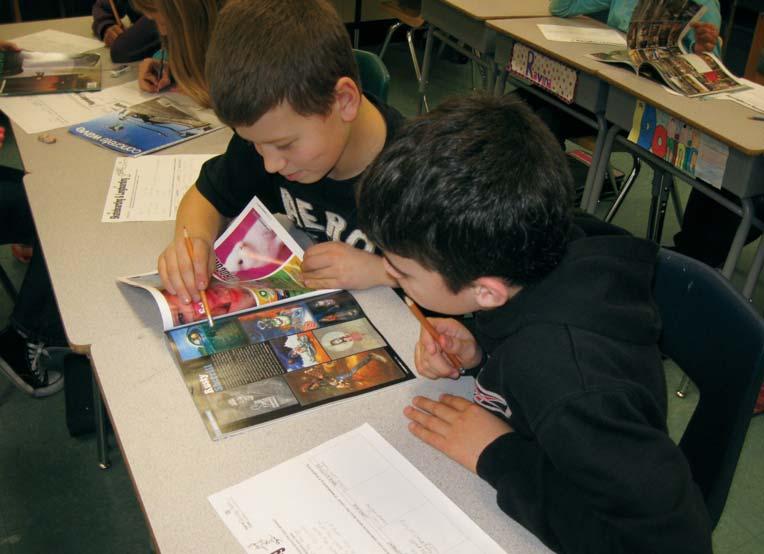
Lesson #3
Now that my students had become familiar with some skateboarding and longboarding products, I showed them two longboarding videos from YouTube, and they used a Venn diagram to record the similarities and differences they observed. It was a great way for them to use what they had learned from studying the advertisements and to see the products in action. It also allowed my students to confirm or add to their existing ideas about the “culture” of the sport.
Lesson #4
For the last lesson, students used Concrete Wave to choose the best parts (trucks, wheels, bearings, etc.) and create their own longboard. They searched through the magazine and recorded the name and page and then wrote a brief description of the components they chose. They even designed their own graphic for the deck! Most importantly, they included their thinking behind why they picked them.
Using Concrete Wave in my classroom has been one of the highlights of this school year. It was great combining my interest of longboarding with my love of teaching, and I’m thankful Michael [Brooke] has produced a magazine that can inspire kids to skate as well as motivate them to read. There might be some new longboarders from my class on the road soon, and I’m sure they’ll enjoy skating as much as they did reading about it.

86 CONCRETE WAVE SUMMER 2010 CONCRETEWAVEMAGAZINE.COM
Jason Chan is a teacher at Spencer Middle School in Victoria, British Columbia.
LONGBOARD


CLUBS SPROUT UP ON HIGH SCHOOL CAMPUSES
By Pat Gittings
I never had any intention of forming a longboard club at Good Counsel High School in Olney, Md. Considering I didn’t even know what a longboard was about a year earlier, it was the furthest thing from my mind. As a 40-something dad, I was looking for ways to spend more time with my 10-year-old son, so I started to skateboard with him. Being 6’3’, weighing over 200 lbs. and dealing with sore knees from years of baseball, my main goal was just trying not to kill myself. Riding that small board meant slow speeds and numb feet after about 20 minutes. All that changed after a visit to the Quiksilver store in Atlantic City, N.J.
We were meeting my in-laws for lunch on the boardwalk and dropped into the Quiksilver store just to look around. They had skateboards, but nothing like what my son was currently riding. They had a pretty decent selection of Sector 9 boards, and my son “convinced” his grandmother to buy a Sector 9 Portofino for him. It wasn’t a big board, but with the Gullwing trucks and Sector 9 wheels it was a vastly different setup than the skateboards we had been riding. After one try it was love at first ride. I secretly ordered a second one off the Internet and kept it in my office at school. I soon upgraded to a Sector 9 Bingin board, which was longer and more suited to someone my size. We did not see anyone else with boards like these, so for some time we thought we had discovered something new. Little did we know we were only in the shallow end of the pool.
When the end of the school year arrived, so did exams. At Good Counsel the students usually take their exams and then walk to the center of town to get something to eat. One morning during exams as I was walking down the hall, I saw two students coming at me carrying longboards so they could ride into town. I stopped them and asked them about the boards and even told them I had one in my office. I could tell from their expressions that I was too old to really be telling the truth. The school year ended, I spent a summer longboarding with my son.
At the beginning of every school year, Good Counsel holds a club fair to try to get students interested in extracurricular activities. There are about 1,200 students in the school. Just for the fun of it I decided to see if anyone was interested in forming a longboard club, so I grabbed my board and headed down to the fair with a sign-up sheet. It was quickly apparent that there were more longboarders around than I had ever
imagined. Very quickly my sheet filled up with student names and the names of longboard companies I had never heard of. I could tell the students were also surprised that so many of them had longboards. They stood around the table and talked to each other about their different boards and where they liked to ride. Everyone was excited about the club.
I would soon discover that running a longboard club is similar to herding cats. While everyone loved to board and ride, actually scheduling meetings and getting people to show up was much harder. Longboarders are free spirits and are not known for really scheduling things. If it’s a nice day you grab your board and go; there is very little planning. At best you get one or two friends to go along. Trying to get 30 people to drop everything and drive to a certain hill is certainly impossible. We do manage to have some meetings and watch some videos, but for the most part the club is more like a lending library where people share their boards with each other, discuss the latest boards, trucks or wheels that have come out or get directions to the best hills to bomb. Our meetings are sometimes quick conversations in the hall where you talk about your weekend conquests, bad wipeouts or who got what board for Christmas or a birthday. These are only moments, but moments that people really enjoy. When you hear about someone’s great ride or new hill, it gives you the inspiration to make the time to get out yourself and ride.
Our club is only two years old, and we are working on having our first official competition this spring. We have riders of every skill level, but what makes it really nice is that there are no egos or attitudes. If someone can do something special on their board, they are more than willing to take the time to show someone else how to do it. Need sliding gloves? Borrow a pair. There are no nicer people than these. I may have accidentally discovered longboards, but there is no accident about how much fun I have had getting to know these students, and the relationships and friendships that have formed with each other.
SKATEBOARD CLUB
By Paul Fordham
Bideford College, North Devon, U.K.
Bideford is an ancient port in North Devon, in the U.K., situated at the mouth of the River Taw and Torridge. A number of hidden gems to tempt even the most hardened skateboarders are secreted around the town and surrounding area, including a 1970s figure-8 concrete bowl hidden on the outskirts.
I work as a teacher of design technology and electronics at Bideford College. I have been a keen surfer and skateboarder since my teens and have enjoyed shaping both over the years. The experience of shaping your own board is both intimate and emotional; I believe it is a skill every surfer and skater should experience. The sooner you do it, the sooner you realize its importance.
Armed with this belief, in 2004 I gathered a group of enthusiastic students together and started shaping and glassing backyard surfboards in one of the college’s workshops. The influence of shaping surfboards with students reached far beyond the school gates. I have heard via the grapevine that some of those involved have since helped others shape their first boards in garden sheds, garages and even kitchens!
In 2007 that club was disbanded. I felt it had become elitist due to the cost of materials, and I was no longer able to impact on the students with the most to gain.
It was over a lunch break that I took a piece of 12mm birch plywood and cut a basic longboard shape from it, applied some grip tape and fitted an old set of trucks and wheels. I shaped the board to resemble the long skateboards sold in the local surf shop that none of the students would buy or ride.
Working with children is great! They will always surprise you. The skateboard gained great interest from inquisitive students wanting to know why it was so long, but also more importantly, could they make one?!
SUMMER 2010 CONCRETE WAVE 87
And so, Skateboard Club was born. The nature of the practical work and the additional support of Stuart Knowler (the college’s Web developer) now meant that I could manage larger groups of students.
I have rarely seen such enthusiasm and determination from students. We were keen for others to see the boards students were producing and approached LOOSEFIT, a local surf-art gallery that had displayed work from legends such as renowned Californian surf artist Andy Davis. We exhibited the boards along with photos detailing the manufacture of the boards, so local residents and visitors to North Devon could share in the club’s success.

Boards are made for riding, and although they may have looked attractive hanging from the wall, their shapers did not need much encouragement to take them down and carve their first hill. The youth of Bideford had discovered longboarding!
We continued making skateboards, and students of all ages and gender continued to come! Over the next few months, as more students joined, impromptu lessons would be taught and we found ourselves covering topics such as material properties, forces, viscosity and tribology! It was these links to science, technology and mathematics which meant that in 2008 we were given the funds required to purchase the equipment needed to start laminating boards. Science teacher Stan Pyle joined our team, and it was not long before students were learning concepts such as atmospheric pressure in relation to the vacuum bagging process and the

Venturi effect in relationship to the airbrush the students were using.
No doubt reading this you will now see some irony in the sign posted on the college gates: “No Skateboarding.” At Bideford College we have found skateboarding to be an excellent way to reach students both pastorally and academically.
Today we have a keen team of staff helping whenever possible and also a team of older students who work as mentors and support our younger members. We have developed a cheap but effective method of laminating decks and producing the stencils used in the application of artwork. Financial sustainability is our main concern, and we are frequently looking at ways to secure continued funding for the club’s activities. Skateboard Club is run by volunteers at Bideford College and is self-funding. THANK YOU to all our sponsors and supporters, past and present. Without your support this would not be possible. If you want to get involved with or would like support in running a similar club, please feel free to email us at skateboard@bideford.devon.sch.uk
THERE ARE NO RULES
By Kevin Lavigne
High school is rarely considered an oasis of creative anarchy. But the title for this article refers to an unplanned moment during a high school class event. While describing how they should approach shaping rides out of rough-planed slabs of hardwood, longboard craftsman Wayne Gallipoli said to my students: “There are no rules!”
The March Intensive
The “Longboard Collective” was one of 70 classes offered during Hanover (N.H.) High School‘s March Intensive, when traditional academic curriculum gives way to experimental programs taught by the school staff and community members.
The four-day longboard seminar showcased “weathered professionals” (as one of my students called us) teaching students to build their own boards with their own hands. But it was about so much more: design concepts, using hand and power tools, choosing materials, renewable resources, the history of longboarding and more. We emphasized the idea that expensive tools were not needed — creativity and “Old School” techniques could be harnessed to create amazing rides!
The Why
The course was my idea. A newbie to the longboarding scene, I started riding two years ago as a transition between snowboarding seasons. After my first few rides I was hooked. I discovered Concrete Wave and found myself wanting to learn more about how to build “Old School” longboards.
The more I participated in the push culture, the more I noticed like-minded students at school. As time ticked down on the need to choose a March Intensive offering, it occurred to me: Why not frame a longboard-building course? With a hands-on workshop, I could create an experience that would bind a growing group of longboarders in my community.
But I had never built a longboard and had no idea where to begin. Through Internet searches I found my way to the Surf-Rodz home page. The organic look of the site, clean board designs and use of local wood or recyclable materials created a personal experience for the rider. The Surf-Rodz philosophy clicked with me.
So I called Surf-Rodz owner Wayne Gallipoli, and Wayne stepped up. Over the next six months as we designed the course, he provided a ton of resources and added ideas and possibilities. In addition, Wayne asked to participate in the course. To do so, he would have to spend four days away from his family and business. I was overwhelmed by his generosity.
88 CONCRETE WAVE SUMMER 2010
Developing the Course
In the end, three Hanover High School teachers taught the class: Dave Holloway (industrial arts), Uwe Goodall-Heising (language arts) and me (science). In addition to Wayne, we had expert help from Andrew McQuaid, a University of New Hampshire senior who co-owns GreenStreet Longboards.
We felt the students should be introduced to and encouraged to participate in the longboarding community, and we set about exposing them to it in several ways.
First, each student received a year’s subscription to Concrete Wave so they could read about and become immersed in longboarding culture. Second, we worked with the Helmets in Hands program created by Thomas Loveless to provide each participant with a helmet, an effort that also exposed all the students to safe riding practices. Third, we created a blog so the students could share their course experiences with the online community. The blog would be linked to silverfishlongboarding.com and several other social media “outlets.” Finally, we gave everyone a schwag box that contained a specially designed course T-shirt and an assortment of stickers and buttons.
The Longboard Collective
Our plan for the week was for each participant in the intensive to complete a board and to receive riding instruction no matter what level of experience they’d had prior to the course.
On day one, we assembled in the Wood Shop at Hanover. Some of the kids looked a little intimidated, hunched over the shop tables as if they were wondering what they’d gotten themselves into now that it was too late to back out. “Coming into this program I had no idea [what] to expect; I had never longboarded,” wrote Jack Brown on the blog about the first few hours of the course.“ I had to figure out how I was going to get the design I wanted on the size wood I had to work with,” Jack continued. This was part of the challenge: to get the kids to open up and think about how they wanted their boards to look and ride — and how they would have to design and build them for that result. On day one, the students had to select their hardwood, apply self-designed templates to their boards, cut them out and sand them.
Seriously, Wayne Gallipoli’s assertion that there were no rules to apply to the course took my students out of their education comfort zone. But his energy, confidence and knowledge made them want to participate, and they were
soon ripping away at templates and making the wood scream on the planer.
“The excitement that both Wayne and Andrew McQuaid brought to each student was amazing and helped with the construction aspect tremendously,” student Erin Donahue wrote. “I didn’t want to make their jobs too hard, but I found that I behaved like a deer in head lights when they asked me questions about what kind of riding I wanted to do, or what kind of flex I wanted my board to have. No, I do not want to do tricks, and sure, why not have some nice flex? The possibilities were endless.”
By the end of the day, the energy in the room was kinetic, as all 17 students and 5 teachers were finishing off the rough-sanding of their boards, right on schedule. People were laughing and talking, sharing longboard stories and neardeath experiences. Erin summarized the general mood in her wrap-up on the Collective blog: “If [people] were to look around the shop, they would see kids with their eyes framed by ridiculous retro safety glasses, florescent ear protectors fastened tightly around their ears, and a smile that mostly stretched wide enough to inhale copious amounts of saw-dust and convey their excitement.”
The next two days proceeded beautifully, as each of us continued building and finally finished our rides. Students would linger after class had ended, finishing the day’s work. “Along with the ongoing noise of saws, sanders, and a wood press was the passion and love of longboarding expressed through countless conversations,” wrote Beau Marshall. Wayne, Andrew and I pulled an allnighter on Thursday to mount the trucks on each board so that by Friday morning, all but two decks with more intensive art designs were ready for wheels.
Everybody was so eager to feel how their boards would ride that they stormed up the parking lot hill to start “shredding.” We managed to get them to chill long enough to shoot pictures of the students with their handmade boards. Once everyone had taken a few turns, Andrew demonstrated some serious power slides, while Wayne showed off an old-school handstand on his board. After two hours, people started taking breaks, sitting on their boards at the top of the parking lot’s hill, talking, and going down once in a while. Even we teachers got on the boards — Dave for the first time in about 20 years, and Uwe for the first time in his life, helped by students who showed him how to find balance, maneuver and, most importantly, stop.
Students from other courses came out during their lunch breaks. Some asked to ride and borrowed a board and a helmet. At the end of that day, everybody in this course left the school premises happy because of the rides and the accomplishment.
Outcome
But did they learn anything, you ask? At the end of the fourth day, when the students removed their helmets and revealed sweaty, matted hair, they all beamed confidence. A group of diverse individuals had come together and learned the skills necessary to mold a piece of tree into art. And in that process they shared part of themselves with each other and became a community and part of something larger. Since March, Andrew and Erin have made one of Andrew’s designs into a silkscreen for T-shirts and graphics; it’s over at GreenStreet. A group of students is pursuing their idea of creating their own longboard-building company, Sundried Boards (sundriedboards.com). Other students ride every day, which helps grow a larger local longboarding community. So the lessons learned by my students in the Longboard Collective were not just about longboarding but about making connections. Who knows where that knowledge will lead?
A student, Mariclaire Joseph, wrote, “Experience wasn’t necessary, only safety. Once the kids got over their initial intimidation...they worked with both a sense of ease and professionalism. It’s refreshing to see these students using tools and techniques that many won’t find themselves doing in a lifetime, especially when you know you can build upon them and apply them in an infinite number of uses.”
I would like to thank the following people. My colleague Dave Holloway, who was our industrial arts magician; my colleague Uwe Goodall-Heising, an amazing blog taskmaster who worked with the students to communicate our course to the rest of the world; and Andrew McQuaid from GreenStreet Longboards (greenstreetlongboards.com), who shared his enthusiasm, stories and expertise. I also need to thank Original Skateboards, Orangatang Wheels, Helmets in Hands, Peter Weinrauch and Glen Woodward for help with the T-shirt design and printing, and Kip Rithner, my editor. Finally, a very special thank you goes to Wayne Gallipoli of Surf-Rodz LLC ( surfrodz.com). Enough cannot be said about how HUGE his contribution was to this course! Without Wayne’s energy, craftsmanship and skills, this course would not have been possible. longboardcollective.blogspot.com ¶
SUMMER 2010 CONCRETE WAVE 89
PUNK ROCK, PASSPORTS AND PRIZES
The Concrete Wave Passport Program Hits the 2010 Vans Warped Tour

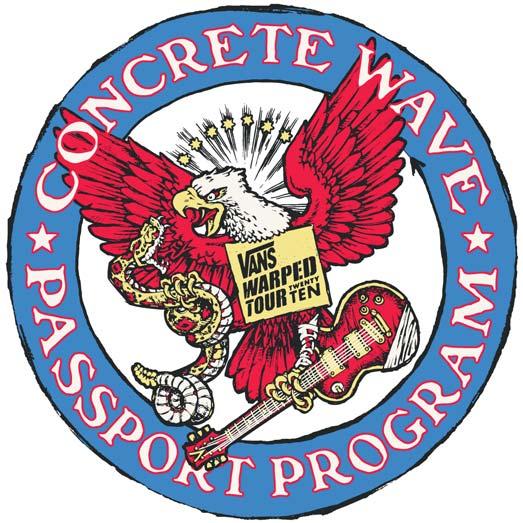 BY MICHEAL BROOKE
BY MICHEAL BROOKE
As some of you may recall, Concrete Wave was privileged to join up with the Vans Warped Tour in 2009 to support the charity Rock For Autism. Over the course of 10 days, I had a chance to hang out with some pretty amazing people. The tour was a remarkable experience, and I felt truly inspired by what I had witnessed. I knew that once I left the tour, I wanted to help out. Specifically, I felt that Concrete Wave could help shine a spotlight on some of the nonprofit organizations that make up part of the tour. I came up with the idea of a “passport program” whereby attendees would visit various booths and get a booklet stamped. They would then return to our booth and get a chance to receive prizes. Thanks to overwhelming support of skateboard companies, we were able to launch this initiative.
I am extremely grateful for their participation. We know this is a great way to encourage people to explore what’s out there.
If you’ve never attended the Vans Warped Tour, be prepared to have your senses go into overdrive. It’s swirling mixture of music and mayhem. There are a remarkable number of bands playing. It works out to 40 or more per day! Beyond the wide range of music that is offered, there are a number of activities you can engage in. One of these is exploring the “Take Action” area. This is where you’ll begin your journey with your Passport. Once you’ve visited the various booths and gotten your passport stamped, you’ll return to the Concrete Wave booth. After presenting your Passport, you’ll be eligible to win some pretty cool prizes. We added up the total value of all these prizes, and it’s more than $105,000! We have some large grand prizes, including completes from Goldcoast Longboards (one per day!), a Surf-Rodz complete and a customized Vans Warped Tour Hamboard. And Contiki Vacations is giving away an all-expensespaid trip to London and Paris, including airfare!
I asked some of our Passport Program sponsors what they felt people would get out of visiting the various booths.
Chris Chaput, head of Abec 11 was on of the first sponsors to come on board and his support has been extraordinary.

“It is my hope that through the Vans Warped Tour, more people can become aware of the non-profit organizations themselves and be inspired to contribute time and/or money to causes they find compelling” said Chris. “The action sports industry is largely passion-based. It makes sense
to combine our passion with that of non-profit organizations who rely on the commitment and generosity of others.”
Geoff Koboldt, head of BambooSK8, also tapped into the spirit of things: “We at BambooSK8 hope and pray that people will be inspired by the passionate energy that each nonprofit exemplifies and that they will grasp the message and in return, do something themselves that serves others. At a minimum, we hope that people will display a sense of gratitude toward the beauty of life and understand that right now, someone else out there might not be in a good position in life and could use some help; it is our duty to help others.”
Marlo Gold of Slingz says their primary goal is to get some attention for the various nonprofit organizations that will be the focus of the tour: “Often these programs, services and policies are overlooked, and we feel that as a company, it is our job to assist in enlightening the public of their existence and the positive influence they have on society.”
Of particular note is the number of skateboard-related nonprofits that will be on the Tour. The International Girls Skateboarding Association will be offering girls’ skate lessons on the Tour across the U.S. Local skate shops will soon offer preregistration. On top of this, the All Girl Skate Jam (AGSJ) will host Four AGSJ contests events this summer on the Tour. You’ll also be able to visit organizations such as Grind For Life, Poseiden.org, the Ian Tilmann Foundation and Boarding for Breast Cancer.
ARTISTS AND THE PASSPORT PROGRAM

The original logo for the cover of the passport was designed by DUSTIN ORTIZ. We then encouraged other artists to offer their take. Have a peek at the work of “Bigtoe,” a.k.a. artist TOM LAURA. Tom was raised in SoCal on a steady beach-rat diet of Ed Roth, MAD magazine and Surfer magazine’s Rick Griffin. After more

90 CONCRETE WAVE SUMMER 2010 CONCRETEWAVEMAGAZINE.COM
Artist: Big Toe
Artist: Big Toe
than 20 years in the Southern California surfing and apparel industry, Bigtoe started painting for public exhibition in 2006. He creates art with a casual, tongue-in-cheek sense of humor and playful eroticism that offers a nostalgic escape in our fast-paced and everchanging world. Bigtoe’s art is inspired by the confluence of Tiki, Kustom and Surf culture. The fusion of these seemingly disparate lifestyles has always been an obvious one to the artist: All three are outsider ways of life — the last vestiges of Wild West renegades. bigtoeart.com

BERTO LEGENDARY H is an independent designer and artist based in Portland, Ore. He started out with BOXeight as an inhouse artist and became assistant art director and curator for their gallery space. He became known for his vividly colored large-scale paintings of cartoons and abstractions within those paintings and art installations. Later he decided to pursue other design ventures and rebranded himself as Berto Legendary H. Though not yet a legend, he is making his style and name known throughout the industry. In addition to graphic art, Berto is also a fashion designer acclaimed by Vivienne Westwood and many others. He is known for setting trends and progressive designs. bertolegendaryh.com
VANS WARPED TOUR/ CONCRETE WAVE PASSPORT PROGRAM SPONSORS
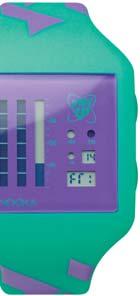

PRESENTING SPONSORS: Abec 11 & Skatera



Diamond Sponsors: Bamboo SK8, Contiki Vacations, Goldcoast Longboards, Nooka Watches, Riviera, Slingz, Troy Optics

Gold Sponsors: Drawn Skateboards, Surf-Rodz
Silver Sponsors: Buddy Carr Skateboards, Cal Streets, Comet Skateboards, Hamboard, Innes, Koastal, Landyachtz Longboards, Lotus, Never Summer, Silverfish Longboarding, Tail Devil, Wheelbone
For more information, please visit vanswarpedtour.com
SUMMER 2010 CONCRETE WAVE 91
Artist: Big Toe
With the passport program, you can win a limited edition
Vans Warped
Tour Nooka Watch
BY MARCUS RIETEMA
2010 IGSA WORLD CUP SERIES PREVIEW



The 2010 edition of the IGSA World Cup Series is shaping up to be the strongest ever, with new events and more and more racers chasing the World Cup title. With each passing year the established events are getting bigger and better. Weak races are falling off the calendar, while new and better events are replacing them. There are a few big changes happening in 2010.

Maryhill Festival of Speed
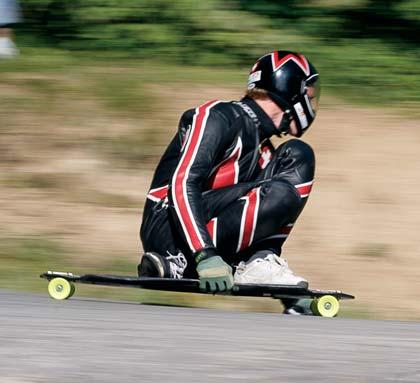
June 30-July 4, 2010
Goldendale, Washington, USA


After traditionally taking place at the end of the summer, the Maryhill Festival of Speed will kick off the season by moving to the beginning of July. Maryhill traditionally has the deepest field of any World Cup race. The course is not the fastest or the most technical, but Maryhill is quite possibly the most difficult race to win of the entire season. To win there is an enormous achievement. Previous winners include: Patrick Switzer (2009), Scoot Smith (2007 & 2008).
Almabtrieb World Championships
July 14-17, 2010

Hungerzell, Germany
After a one-year hiatus, Almabtrieb is back. The first Almabtrieb was held in 2003 and served as
the IGSA European Championships. In 2004, 2005 and 2007 Almabtrieb hosted the IGSA World Championships. A World Cup race was also held in 2009. In 2010 Almabtrieb will host the World Championships for the fourth time on an all-new track in Hungerzell. The course is long, fast and technical. With every top racer in the world there, whoever wins will be pushed to their limits.
The Graveyard Call
July 21-24, 2010
Argonay, France
D173 in Argonay, France holds the distinction of being the world’s first road designated for gravity sports. For the past several years the D173 club has held training sessions and lowkey races on the narrow, one-lane road. When the club decided they wanted to host a World Cup, they received permission to close the public roads leading from D173, past the local graveyard and into the center of town. The result is an amazing track that 2009 winner Scoot Smith describes as one of the world’s best.
Padova Grand Prix
July 30- August 1, 2010




Teolo, Italy
For the second year in a row, the IGSA World Cup Series will travel to Italy for the Padova Grand Prix. Originally the event was conceived for inline skaters, but with the huge numbers of skateboarders entered in 2009 and the intense competition, the Downhill Skateboard race has quickly become the headliner. The course is straight and fast on top, transitioning to tight and technical on the bottom half. Martin Siegrist was the winner in 2009.

Kozakov Challenge
August 11-14, 2010
Kozakov, Czech Republic
After debuting in 2009 as the European Championships, the Kozakov Challenge has been added to this year’s World Cup schedule. The event will mark the first time a World Cup event has been staged in Eastern Europe. Last year the track was the big star of this event. Its combination of high-speed straights and ultra-technical turns make this course one of the most challenging in 2010. Martin Siegrist won the 2009 event.

92 CONCRETE WAVE SUMMER 2010 CONCRETEWAVEMAGAZINE.COM
Christoph Batt could surprise the establishment in 2010.
Photo: Seb Dubois
Kelly hopes to convert his strong qualifying performances into wins. Photo: Marcus Rietema
Erban and Reimer are likely to fight for the championship. Photo: Marcus Rietema
Malarrara Pro Teutônia
November 12-14, 2010
Teutônia, Brazil
Now in its third year as an IGSA World Cup event, Teutônia is quickly gaining a reputation as the most intense course in downhill skateboarding. On a map, the course looks easy. Nothing could be further from the truth! The grade reaches 18% in some places as uneven pavement tries to throw riders from their boards. Mischo Erban won the 2010 event and set the Official IGSA World Speed Record of 113.02 km/h (70.23 mph). Douglas da Silva won in 2008.
Newton’s Nation
November 24-26, 2010
Bathurst, Australia
Returning for the third consecutive year, Newton’s Nation is set to be huge in 2010. Last year the intense track pushed riders to their limits and beyond. This year a huge music and action sports festival has been added. Organizers are expecting massive crowds, with top

Hot Heels Africa
December 10-12, 2010
Kogelberg, South Africa
2010 will mark the eighth time that Hot Heels Africa will serve as the IGSA World Cup season finale. It is the longest continually running event on the circuit. The challenging track is located within the Kogelberg Biosphere Reserve, offering spectacular backdrops to the racing action. Mischo Erban clinched the 2009 World Cup Series Championship on the final run in a nail biter. Previous winners include Erban (2008, 2009), Erik Lundberg (2007), Fredrik Lindstrom (2006), Mike Zietsman (2005), Aki von Glasow (2004) and Stuart Bradburn (2003).
THE CONTENDERS
There were numerous changes in the offseason, with several top riders switching sponsors and allegiances. The biggest was 2009 World Cup Series Champion Mischo Erban leaving longtime sponsors Landyachtz and Abec 11 to ride for Seismic wheels and his own GMR Skateboards. Louis Pilloni made the switch from Loaded and Orangatang to Sector Nine. Douglas da Silva switched from Landyachtz to Rayne.
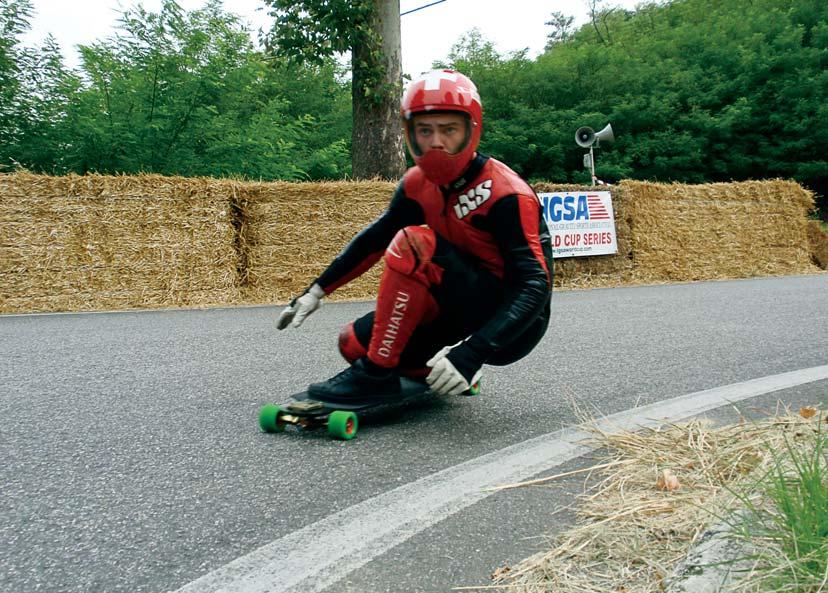

Australian rock, hip hop, dance and indie artists on the main stage and five DJ towers spread throughout the site. Previous winners include Kevin Reimer (2009) and Erik Lundberg (2008).
ODDS:
3-1Mischo Erban (CAN) —


Big equipment changes for 2010.
4-1Scoot Smith (CAN) —
Can he regain the magic of 2008?
4-1Kevin Reimer(CAN) —
Will he race enough to make a run for the title?
5-1Louis Pilloni (USA) —
Big equipment changes for 2010.
5-1 Martin Siegrist (SUI) —
If he can attend enough races, he is always a threat for the title.
6-1James Kelly (USA) —
Can he find consistency on race day?
6-1Douglas da Silva (BRA) —



The Brazilian could win it all in 2010.
6-1Christoph Batt (SUI) —




He could be the surprise of 2010.
7-1Erik Lundberg (SWE) —
Needs to focus if he wants the title.
7-1Olivier Bareaud (FRA) —

Coming off a major injury last year.
8-1Jackson Shapiera (AUS) —
Coming off a major injury last year.
8-1Oliver Nielsen (DEN) —
Keeps getting stronger each year.
9-1Stefan Ruefli (SUI) —
Solid rider had his best year in 2009.
9-1Ramón Königshausen (SUI) — slalom ace keeps getting faster.
SUMMER 2010 CONCRETE WAVE 93
Scoot hopes to dominate like he did in 08’.
Photo: Marcus Rietema
Martin Siegrist moved to Malaysia and will only contest a limited schedule.
Photo: Bob Ozman
Silva will contest every World Cup pushing for the 2010 Championship.
Photo: John Ozman
OUT OF nowhERE
I’ve seen a few crazy things in my day. Lurkers are the number one contributors to all of my crazy stories — which is a realization I have come to as of late. I feel it is my duty to share some of my better lurker stories with the world, as well as some of my skateboard illustrations. The two are barely related, but without skateboarding, I would have neither. So without further ado, I present to you, “Out of Nowhere” — a short story of ultimate lurker passion.

I was resting under the pavilion at the local skatepark when I noticed a lurker off in the distance. He was running full speed through the pine trees, toward the skatepark, wearing a black motorcycle helmet with a spike on top.



He’s there almost every day, not doing s**t. Most of the time he is wearing a T-shirt that says “GOD DAMMIT” on it, which has an image of a fist pounding on a table. Sometimes he brings padded nunchucks to the park and practices ninja s**t with this other kid that has a two-foot-long braided ponytail.
The kid with the ponytail always wears this baggy white, Koolaid stained T-shirt with a fat, rasta-looking Pikachu smoking a joint on it. It reads, “TOKE-MON GOTTA SMOKE ’EM ALL.”
I watched the helmeted lurker run at full speed for about the length of a basketball court, until he collided headfirst into the Powerade machine.
That machine has never worked since that incident, and I believe it is still there today, six years later, plugged into an electrical outlet, with a huge f***ing dent in it, not doing s**t.
So basically, life rules. If you want to see more of my art or say “What’s up,” I can be found on Facebook (lame, I know — get over it). I should have a website out soon, which will have more stories, skate stuff, more illustrations and fine art as well. Thanks for checking out my stuff.
94 CONCRETE WAVE SUMMER 2010 ARTIST PROFILES
Huey Crowley







SUMMER 2010 CONCRETE WAVE 95
SKATEBOARD SHOPS LIST
MINNESOTA Old School Skaters 1119 NW 2nd Street Faribault 612.578.3326 www.oldschoolskaters.net
MISSOURI
Genesis Skateboarding 13 NW Barry Rd. #147 Kansas City 816.456.1307 genesisskateboarding.com
MONTANA
Wheaton’s 214 1st Avenue West Kalispell 406.257.5808 wheatonscycle.com
BlackTop Surfshop 176 5th Avenue West North Kalispell 406-752-6006
NEW JERSEY
Black Diamond Skatepark 400 Route 38 Unit 1610 Moorestown
NEW MEXICO
Koa Nalu Surf Shop 8254 Menaul Blvd NE Albuquerque 505-332-SURF koanalu.com
559.664.8997
Bill’s Wheels Skateshop
1240 Soquel Avenue Santa Cruz 831.469.0904
Purple Skunk Purpleskunk.com
5820 Geary Blvd. San Francisco 415.668.7905
CCMF/Toyland 1260 Palm Street San Luis Obispo, CA 93401 805-801-6653 ccmfjay@yahoo.com
The Trading Post 622 Upham Street San Luis Obispo
805.801.6653 ccmfjay@yahoo.com
Sonoma Old School Skate and Surf
1001 Broadway Sonoma 707.938.5500 skatesos.com
Cellular Skate 287 Mountain Ave Upland
Tel: 909.981.8856 cellskate@verizon.net
Maui and Sons
1415 Ocean Front Walk Venice Beach mauiandsons.com
COLORADO
All Board Sports 1750 30th Street Boulder 303.415.1600
Board Lords Foothills Mall 215 East Foothills Parkway Suite
(J-4) Fort Collins 970.225.1109
CONNECTICUT
Skate Pusher 57 McIntosh Drive Bristol 860.593.4550
Skate Valencia 68 Leonard Street, Bristol 203.524.4675
GEORGIA
Feral 190 Park Avenue, Athens 706.369.1084
Skate Madness 13800 Hwy. 9 N., Ste. D 145
Alpharetta 770.410.3456 skatemadness.com
Woody’s Halfpipe

6135 Peachtree Parkway Suite # 603 Norcross
LOUSIANA
Board Lords Mall of Louisiana, 6401 Bluebonnet Blvd.
Suite # 2044, Baton Rouge, 225.769.1222
MASSACHUSETTS
Boardroom 6 Armory Street Northhampton
413.586.8857
MICHIGAN
Ollies Skate Shop 120 ½ E Maumee Adrian 517.265.2031
Timeship Raicing 825 Early Street Suite H Sante Fe 505.474.0074 timeshipracing.com
NORTH CAROLINA
Soul Ride Skatepark 6049 Victory Lane Concord
704.454.7433 soulrideskates.com
We’re Board Inc Skatepark and Shop 1423 North Church Street, Ste 104 Burlington NC 27217
OHIO
Old Skool Skateboards 19E College Avenue, Westerville roxtar55@hotmail.com
OREGON
The Uprise 1110 NW Van Buren Ave, Corvallis 541.754.4257 541.480.4254 thelongboardstore.com
The Longboard Store 1238 SW Wheeler Place Bend
541.480.4254 thelongboardstore.com
Daddies Board Shop 7126 NE Sandy Blvd., Portland
503.281.5123 daddiesboardshop.com
Gorge Performance 7400 Southwest Macadam Avenue
VIRGINIA
As
NAME_______________________________________________ ADDRESS______________________________________________ CITY/STATE____________________________________________ ZIP_________________________________________________ 1. Send a check or international money order made payable to Concrete Wave. Mail to: The Indaba Group Attn: CW Subs PO Box 1895 Carlsbad, CA 92018. 2. Call Concrete Wave toll-free at 1-866-678-9283 (WAVE) with your credit card 3. Pay Pal mbrooke@interlog.com USA SUBSCRIBERS RETURN THIS CARD TO: THE INDABA GROUP — ATTN: CW Subscriptions PO Box 1895 Carlsbad, CA 92018. ONE YEAR SUB $26 US TWO YEAR SUB $42 US CHECK IF GIFT SAVE $10! January — CW stickers March — Buyers guide April — CW mystery gift (sorry, no hints) June — CW patch September — CW DVD November — CW calendar $26 for one year (5 issues) $42 for two years (10 issues) — SAVE $10 CANADIAN ORDERS $26 CDN for 1 year $42 CDN for 2 years includes GST INTERNATIONAL ORDERS $38 US for 1 year Send to: Concrete Wave 1136-3 Center Street Suite 293 Thornhill Ontario L4J 3M8 IMPORTANT: please make check payable to Concrete Wave SPIKE SAYS SUBSCRIBE!

Rider 4211.106 St., #153 Edmonton 780.413.4554 Pipeline Surf Co 780.421.1575 Comasports 10B-200 Barclay Parade SW 403.233.8841 powerinmotion.ca
BRITISH COLUMBIA
Area 51 191 Station Street Duncan 250.746.8869 a51.ca
Raven Skate Shop 411 Campbell Street Tofino 250.725.1280 ravenskateshop.ca Salton Rides Saltsummer Island, BC 250.537.4984 saltonskate@canada.com

Switchback Longboards 4385B Boban Dr. Nanaimo 250.751. 7625
ONTARIO
Hammer Skate Shop 2225 Queen Street East Toronto, 416.698.0005
Hogtown 401 King Street West, Toronto 416.598.4192 McPhails 98 King Street North, Waterloo 519.886.4340
QUEBEC DLX/Deluxe 2480, chemin Ste.Foy Ste.Foy 418.653.0783 dlxdeluxe.com
OVERSEAS
New Zealand— Serenity Island Surf & Skate Café 202a Wainui road Gisborne serenityisland@windowslive.com serenityisland.com
Boardshop Australia boardshop.com.au04 15883371 friendlyfolks@boardshop.com.au
Cre8ive Sk8 5/244 Ross river Road Aitkenvale Queensland 4814 Australia UK — Octanesport.com Skateboardsofchoice.co.uk
Bath, United Kingdom. Tel: + 44 1249 715811 Germany — seasondistribution.com, concretewave.de Hackbrett Longskates Im Wechselfeld 12 St. Peter Hack@customlongskates.com
Longboarders.de Gustavstrasse 49 90762 Furth longboarders.de kontakt@longboarders.de Tel: 0911 9772500
France: Hawaiisurf.com
Clover Skateboard shop
1-21-3-1201 Befu Jyounan Fukuoka 8140104 Japan
Y & T Fussa Fussa
2348 Fussa Fussa.City,Tokyo 1970011
Ultimate Boards 3/1043 Great North Road Point
Chevalier, Auckland 1022. New Zealand
Skate of the Nation
Unit 6 GYY building # 1 Tomas Morato
1100 Quezon City, Metro Manila, Philippines
www.Skateofthenation.com
Netherlands
Sickboards Fuutlan 45 Delft sickboards@yahoo.com
Soul dh Alameda Picaflores 245 San Borja Lima 41 Peru Indiana Sports GmbH Elbestrasse 14 Wald, 8636 Switzer-
landContact: Christof Peller
Clover Skateboard Shop 1-21-3-1201 Befu Jyounan
Fukuoka 8140104 Japan
Skate of the Nation Unit 6 GYY building # 1 Tomas Morato, 1100 Quezon City
Metro Manila, Philippines; www.Skateofthenation.com
Bestboards 24 Danao Street
Rivera Village Bajada Davao City Philippines
ON.LINE RETAILERS
Allboardsports.com
Blackholeboards.com
Bordz.net
CascadiaLongboards.com
Coldwarskateboards.com
Daddiesboardshop.com
Denverskateshop.com
Edsbearings.com (pleasure tools)
Ffashop.com
Fuegolongboards.com
Genesisskateboarding.com
Longboardskater.com
Latterdayskates.com
Longboardshop.de
Longboardstore.com
Longboardskater.com
Milehighskates.com
Motionboardshop.com
Oldschoolskates.net
Pressuredroplongboards.com

Roadkillskates.com
Sk8supply.com
Socalskateshop.com
Solidskate.com
TACTISSK8.COM
Tailtap.com
96 CONCRETE WAVE SUMMER 2010 Want to know where to find Concrete Wave Magazine? Would you like to find all the amazing skate gear you see in these pages? Lo ok no further than our shop list. If you’d like to have your shop listed here, it’s easy. Simply send a check for $115 to Indaba Group PO Box 1895 Carlsbad California 92018 or pay pal tailtapinfo@yahoo.com, ph: 760-722-4111. You’ll get 10 copies of 5 issues mailed out along with this complete listing. For international rates, please email us. Yes, shipping is included. If you think your local shop or park should be carrying Concrete Wave, email mbrooke@interlog.com.
ARIZONA Sidewalk Surfer 2602 N. Scottsdale Road Scottsdale 480.994.1017 admin@sidewalksurfer.com • www.sidewalksurfer.com CALIFORNIA IFYI Inc 1083 Bedmar Street Carson Board Gallery 3333 Newport Boulevard Newport Beach 714.902.3769 Cellular Skate 6787 Carnelian Street Alta Loma 909.941.1004 Mike McGills Skate Shop 335 First Street Suite #S Encinitas 760.943.7730 Mike’s Bike Shop 5507 West Pico Blvd. Los Angeles 323.935.4338 Viva Skateboards 1709 Howard Road Madera
The
Rip City Skate
Rayzor Tattoos 4 South
Steeltown RHODE ISLAND Seven.Ply 3 Canal Street Westerly 401.348.0656
Planet Sk8 7024 East Church Street Suite 2 Brentwood 615.377.1947
Portland 503.246.6646
Mountain Shop 628 NE Broadway Portland
1510 NE 37th Ave. Portland PENNSYLVANIA
Front Street
TENNESSEE
3032 N.John B.Dennis
Sk8sations Skate Shop
Hwy. Kingsport 423.245.0994 tbec@charter.net
EastCoast Boardco. 10358 Fairfax Blvd. Fairfax 703.352.4600 x:8 213 25th Street Va Beach Black Cat Skateshop 1325 A West Main Street, Charlottesville 434.244.0014 WASHINGTON Gravity Sports 126 Rainier Ave South Renton 425.255.1874 Mountain Goat Outfitters 12 W. Sprague Avenue Spokane Motion Boardshop 17230 Bothell Way NE Lake Forest Park 206.372.5268 motionboardshop.com ALBERTA Avenue Skateparks 9030.118 Avenue NW Edmonton 780.477.2149 Easy
VSLboardshop.com a subscriber you will receive the following SIX FREE GIFTS during the year: SAVE $10 WITH A TWO-YEAR SUBSCRIPTION!
THREE WAYS TO SUBSCRIBE:








SUMMER 2010 CONCRETE WAVE 97
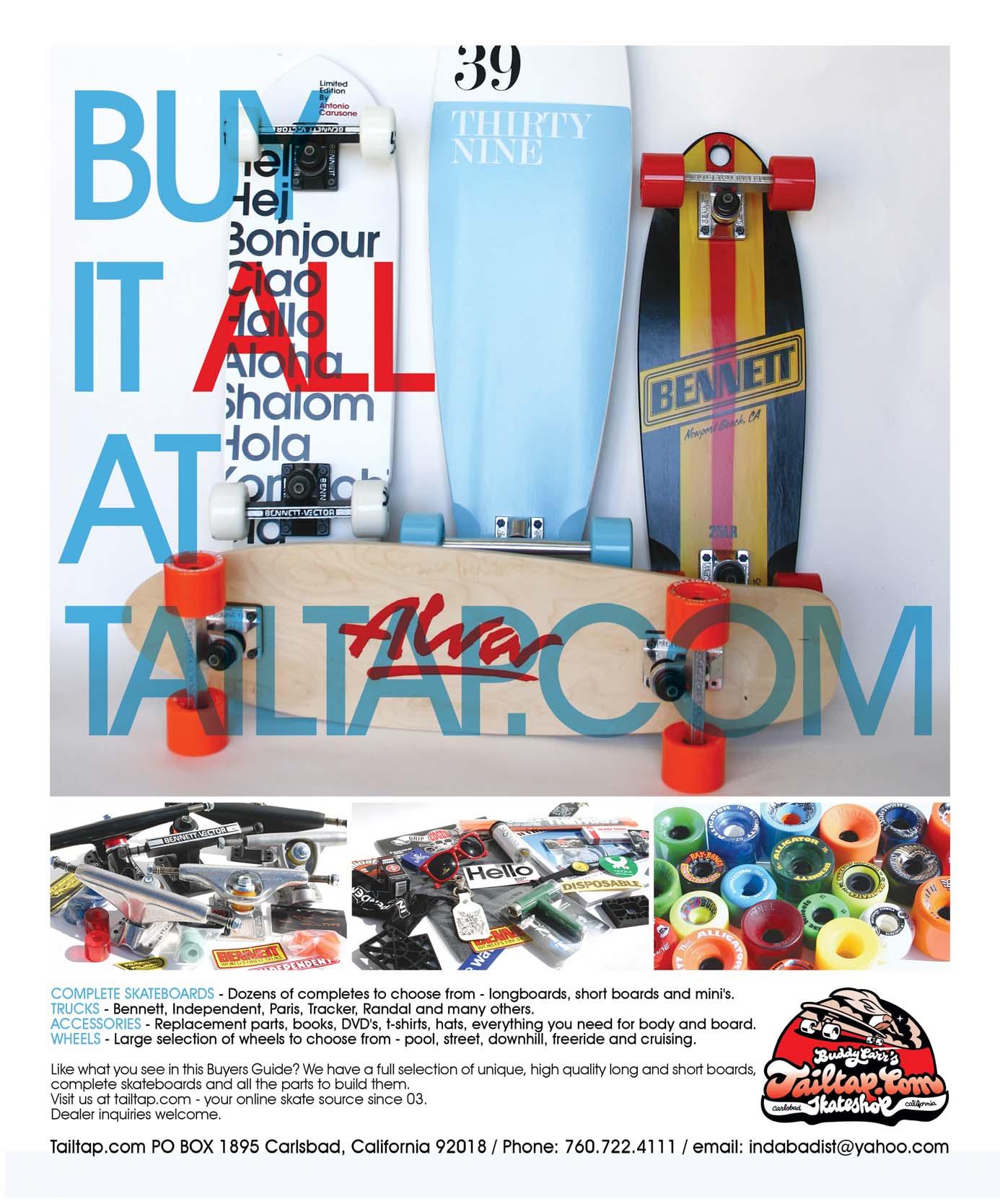


















































































































 By Michael Brooke
By Michael Brooke
























































 BY JAMES GALLETLY PHOTOS: ALICIA FOX
BY JAMES GALLETLY PHOTOS: ALICIA FOX

























 Dropping in without shoes but with a keen determination.
Dropping in without shoes but with a keen determination.






























 BY JAMES PETERS
BY JAMES PETERS












 — Jo Coles, UK
— Jo Coles, UK










































































































 BY GARY HOLL | PHOTOS: WALLACE SUEYOSHI
BY GARY HOLL | PHOTOS: WALLACE SUEYOSHI



















 Zach
Zach









































 By Kevin
By Kevin









 Tanya
Tanya















 BY MICHEAL BROOKE
BY MICHEAL BROOKE



























































